
Situated beneath the towering gaze of the Misti Volcano, and within easy reach of one of the world’s deepest canyons - Colca, home of the majestic condor - Peru’s second most populous city possesses thrills and attractions to suit all tastes. Among the urban centers of the southern Andes, Arequipa is undoubtedly the most attractive and a must-see for any traveler on a trip to Peru.

Climate & Weather
Arequipa is in a fertile valley surrounded by high-peaked mountains. But the broader region sits on the edge of the driest desert in the world, the Atacama Desert. A couple of hundred miles from the city, in the Cotahuasi area, altitudes range from 3,000 feet to 20,000 feet (and above) and encompass nineteen ecological zones. If you venture out to the mountains and highlands around Arequipa, expect stronger sun and winds during the day and significantly cooler temperatures at night.
In terms of weather, Arequipa has plenty of sunny days that are typical of high desert climates and temperatures moderated by the city’s 7,660 feet (2,335 meters) elevation. Daytime temperatures are usually around 65°F (18°C), rarely going below 50°F (10°C) or rising above 77°F (25°C). Nights can dip down to 45°F (7°C).
The Andean rainy season extends from December to March. In Arequipa, this means cloud cover and light showers in the evenings. The month of February is the exception, and heavy rains are frequent.
Best Time to Visit
The city of Arequipa enjoys around 300 days of sunshine each year. The best time to visit Arequipa is anytime from April to November when the weather is pleasant. Conditions are sunny with blue skies, and daytime temperatures are mild. The region’s high altitude and plenty of sun produce high risk for sunburn, so stroll the streets of Arequipa wearing a hat and high SPF sunscreen.
If you plan to add Colca Canyon to your Arequipa itinerary, the best time to plan your trip is from May to November. These months are the dry season in Colca Canyon, which coincides with beautiful weather in Arequipa too. One of the highlights of visiting Colca is spotting Andean condors, and chances of seeing them outside the dry season is much lower.
Geography & Map
- Arequipa is situated in the middle of fertile valleys irrigated by meltwaters from the surrounding mountain peaks. Three volcanoes - Misti, Chachani, and Pichu Pichu - stand guard over the city and remind you of the region’s seismic activity.
- Elevation 7,660 ft (2,335 m) Population ~1 million
Archeological evidence shows that 1,000 years before the arrival of the Inca civilization, the Aymara indigenous groups inhabited the Arequipa region. According to oral traditions, the settlement was known by a name meaning “summit behind the peak” in reference to the Misti Volcano. In the Aymara language, “ari” means “summit” and “quipa” means “lying behind.”
Much later, in the year 1300 AD approximately, the fourth Sapa Inca, Mayta Capac, arrived with his entourage from the kingdom of Cusco. Legend has it that the name Arequipa arose when the Inca ruler, after admiring the lush valley protected by grandiose mountain peaks, said, “ari, quepay,” which in Quechua means “yes, let us stay.”
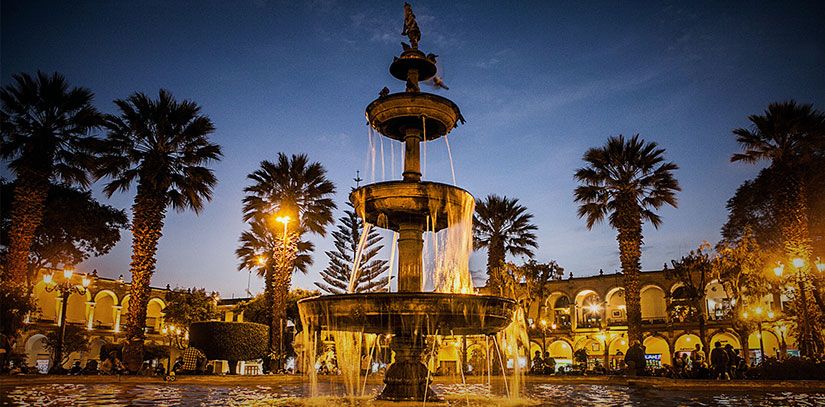
After the arrival of European conquistadors to Peru (and the military defeat of the Inca Empire in Cusco ), the Spanish settler Garcí Manuel de Carbajal re-founded the city in 1540. It is this date that is commemorated with great fanfare during the Fiestas de Arequipa in August, which consumes the entire city and attracts travelers from other parts of Peru.
From the 16th and 18th centuries, under Spanish colonial rule, Arequipa flourished in the crossroads for the silver trade. The city’s architectural aesthetic began to take form during this time when white sillar stone, abundant in the Arequipa region, was used as the primary material to build the casonas of large landowners, beautiful churches, and sprawling convent complexes including Santa Catalina.
Travel Tips
What to Pack
As with any of Peru’s high altitude destinations, the key to packing for Arequipa is to plan to dress in layers. Mornings are cold, and you’ll want to start the day with outer layers that you can remove as the day warms up. Remember to wear sunscreen, as Arequipa experiences intense high solar radiation as a result of high altitude. If you venture out to the mountains and highlands around Arequipa, expect stronger sun and winds during the day and significantly cooler temperatures at night.
How to Get to Arequipa
By plane: Arequipa’s Manuel Ballon International Airport (airport code: AQP) has regular connecting flights to/from:
- Lima to Arequipa - nonstop 1 hour 30 minute flight
- Arequipa to Cusco - nonstop 1 hour flight
By bus: Arequipa has two major bus stations, Terminal Terrestre and Terminal Terrapuerto, which are adjacent to one other and 2.5 mi (4 km) from the Plaza de Armas. For long-distance travel between Arequipa and Cusco, Puno, or Lima, the best and safest option is to look for non-stop overnight routes with companies such as Cruz del Sur, Oltursa, or Exclusiva.
Getting from Arequipa to Colca Canyon
The 100-mile (160-km) drive from Arequipa to Chivay, the gateway to Colca Canyon, takes about three hours in private transport and longer by public bus. Booking a Colca Canyon Tour with roundtrip van transport from Arequipa is convenient and a nice option for visiting top attractions in the canyon. The paved road connecting Arequipa with Colca Canyon passes through La Salinas and Aguada Blanca National Reserve , a protected high altitude environment with volcanoes, lagoons, and herds of wild vicuna.
Things to Do

Plaza de Armas Arequipa
The Plaza de Armas in Arequipa is one of the fairest in all of Peru. Local people come to socialize and read newspapers under the shade of palm trees, children throw seeds on the ground for birds, and travelers from all over the world come to gape at the towering Basilica Cathedral and make wishes at Tuturutu Fountain in the center of the square.

Basilica Cathedral of Arequipa
The stately Basilica Catedral (or Catedral de Arequipa in Spanish) anchors the northeast corner of the Plaza de Armas. What you see of the cathedral today is the product of nearly 500 years of construction and reconstruction resulting from a dramatic history of strong earthquakes. The restoration finished during the 1850s and many imports, such as the English clock for the clock tower, a neo-Gothic pulpit, and a Belgian organ, which remains the largest organ ever to cross the ocean to South America.

Museo Santuarios Andinos
The Museum of Andean Sanctuaries is home to Juanita, the Inca Ice Maiden, one of the most famous historical residents in Arequipa. Juanita is believed to have been a sacrificial offering by Inca priests to the volcano Mount Ampato, where she remained buried in snow for over 500 years. Learn about the story of Juanita and see artifacts associated with the discovery of other mummies in the Arequipa region on a museum tour.

Casa del Moral
History and architecture buffs can quickly lose track of time at Casa Del Moral. This well-preserved 18th-century mansion is one of the oldest existing buildings from the city’s Baroque architecture period. This former private residence is named after the old mulberry tree (arbol de moras) in its courtyard. Visitors pay a small entrance fee and can explore the site independently or with a guide.

Mirador Yanahuara
You can see the historic center of Arequipa from above with a visit to this famous lookout point in the Yanahuara district. Elegant stone arches are carved with the prose and poetry of Arequipa’s many notable writers and also provide perfect frames for photos of El Misti. It is a local tradition among young lovers to go to Mirador de Yanahuara to pledge eternal love and affection with the Lord of Arequipa (Misti) as a witness.

Monasterio de Santa Catalina

Museum of Contemporary Art in Arequipa
For a refreshing interlude between visits to historical and archeological sites, visit Museo de Arte Contemporáneo de Arequipa (MACA). It is one of the few modern art museums in all of Peru with a collection that includes canvas paintings, sculptures, watercolors, and cartoons, as well as photographs by the Arequipa-born brothers Carlos and Miguel Vargas. Once you’ve gotten your art fix, relax in the garden, or have a drink and snacks in a cafe in a repurposed train car.

Mundo Alpaca
Everywhere you go in Peru, you’ll see alpaca scarves, sweaters, and gloves for sale. In Arequipa, go to Mundo Alpaca where you can learn about the origins of these products, from the shearing of alpacas and vicunas , to spinning yarn, to weaving using centuries-old methods. At the end, you can tell the difference between our alpaca products and those made with synthetic material.

Volcano Trek
Arequipa is located directly over one of the tectonic fractures that have created the Andes over millennia. Between the city and Colca Canyon, there’s no shortage of volcanoes to climb.
Many trekking providers organize one to three day climbs to nearby volcanoes, including the iconic Misti. Summiting the 19,101-foot (5,822-meter) peak of El Misti is not technically challenging, but the extreme elevation and sandy footing along the way make it hard. The best time for mountain climbing near Arequipa is from July to September.
The volcanoes are within the Salinas and Aguada Blanca National Reserve. Drive times to each volcano vary, but Misti, for example, is approximately two hours away by car.

Take a Trip to the Countryside
During the colonial period, wealthy landowning families had grand casonas in the city center and sprawling haciendas out in the countryside. You can see what life was like for the Arequipa elite when you venture into the countryside, 15 to 20 minutes outside of the city. Key sites include Molino de Sabandia, an old water mill, and the restored La Mansion del Fundador which belonged to Arequipa’s founder Don Garci Manuel de Carvajal.

Reserva Nacional de Salinas y Aguada Blanca
The road from Arequipa to Colca Canyon travels through the Salinas and Aguada Blanca National Reserve (or, La Reserva Nacional Salinas y Aguada Blanca in Spanish in Spanish. It is one of the region’s underrated, yet spectacular destinations, providing vistas of volcanoes, lagoons, wetlands, and unique flora and fauna that thrive in the extremely high altitude environment.
Departing from Arequipa, tours to Colca Canyon begin with a drive northeast through the reserve towards the volcanoes Chachani and Misti. After about two hours, stop at Pampa Cañahuas to observe wild vicuñas and later snap photos from the outlook of Patapampa (4,820 meters) before beginning the descent into the Colca Valley.
The national reserve extends over an area of 367,000 hectares. The drive from Arequipa to Chivay in the Colca Valley takes about 3 hours by car.

Colca Canyon
Leave the streets of Arequipa behind and venture to Colca, the second deepest canyon in the world. (The deepest canyon is nearby Cotahuasi). Plummeting valleys shadowed by volcanic peaks, thermal hot springs, and quaint communities are all part of Colca’s charm. Mirador Cruz del Condor is a viewing platform where you can spot flying condors with an 8-foot wingspan and the ultimate highlight of a Colca Canyon tour. Check out all of our preferred hotels in Colca Canyon.

Cotahuasi Canyon
Explore Cotahuasi, the world’s deepest canyon. At its deepest point, the canyon cuts roughly 11,003 ft (3,354 m) into the earth - only slightly deeper than the nearby Colca Canyon - and it extends for 63 mi (100 km). Two peaks, Coropuna and Solimana, rise to 20,000 ft (6,100 m).
The majestic Cotahuasi Canyon provides a compelling alternative for travelers who wish to avoid the big tour groups that flood Peru’s more famous destinations. It takes some effort to get here, which perhaps accounts for the low visitor numbers. Travelers should be prepared for basic services and facilities in the tiny towns and villages that dot the canyon. In exchange, you’ll get to see places of surreal beauty.

Casa Andina Premium Arequipa
Calle Ugarte 403, Arequipa

Casa Andina Select Arequipa
Calle Portal de Flores 116 Plaza de Armas, Arequipa

Qasa by Nomad
Calle Álvarez Thomas 300a, Arequipa

Mirador del Monasterio
Zela 301 Cercado, Arequipa
Restaurants
In a country widely lauded for its culinary diversity, the city of Arequipa stands out for its unique offer of regional food specialties. Arequipeñan dishes are generally characterized by flavors that are rich, complex, and addictive. The following recommended restaurants serve local dishes from Arequipa.

Chicha Arequipa
Sol de mayo restaurant, la nueva palomino picanteria, zig zag restaurant, tour packages.
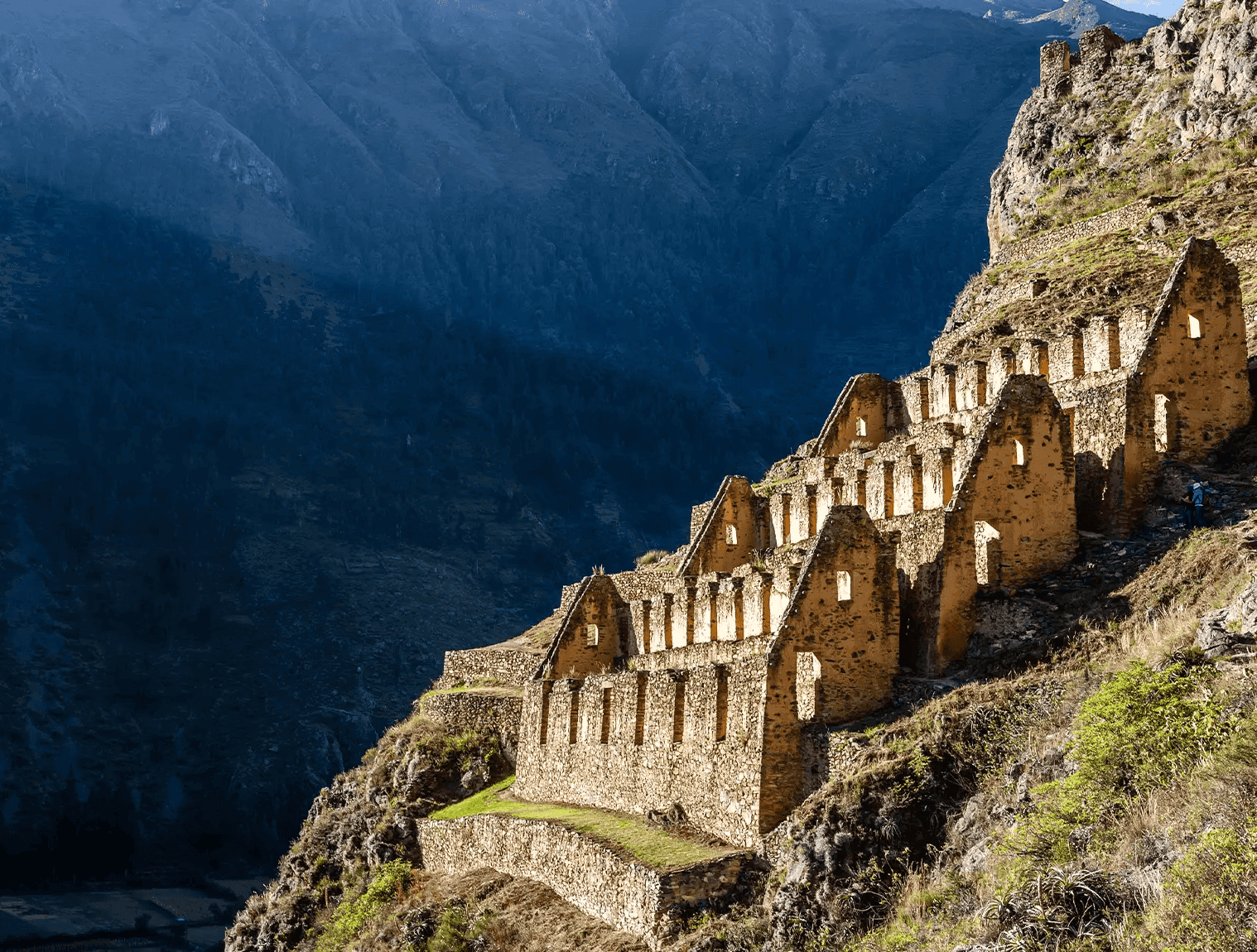
16 days from $ 3869
Machu Picchu, Cusco, Titicaca, Amazon, Lima, Paracas, Arequipa & Colca
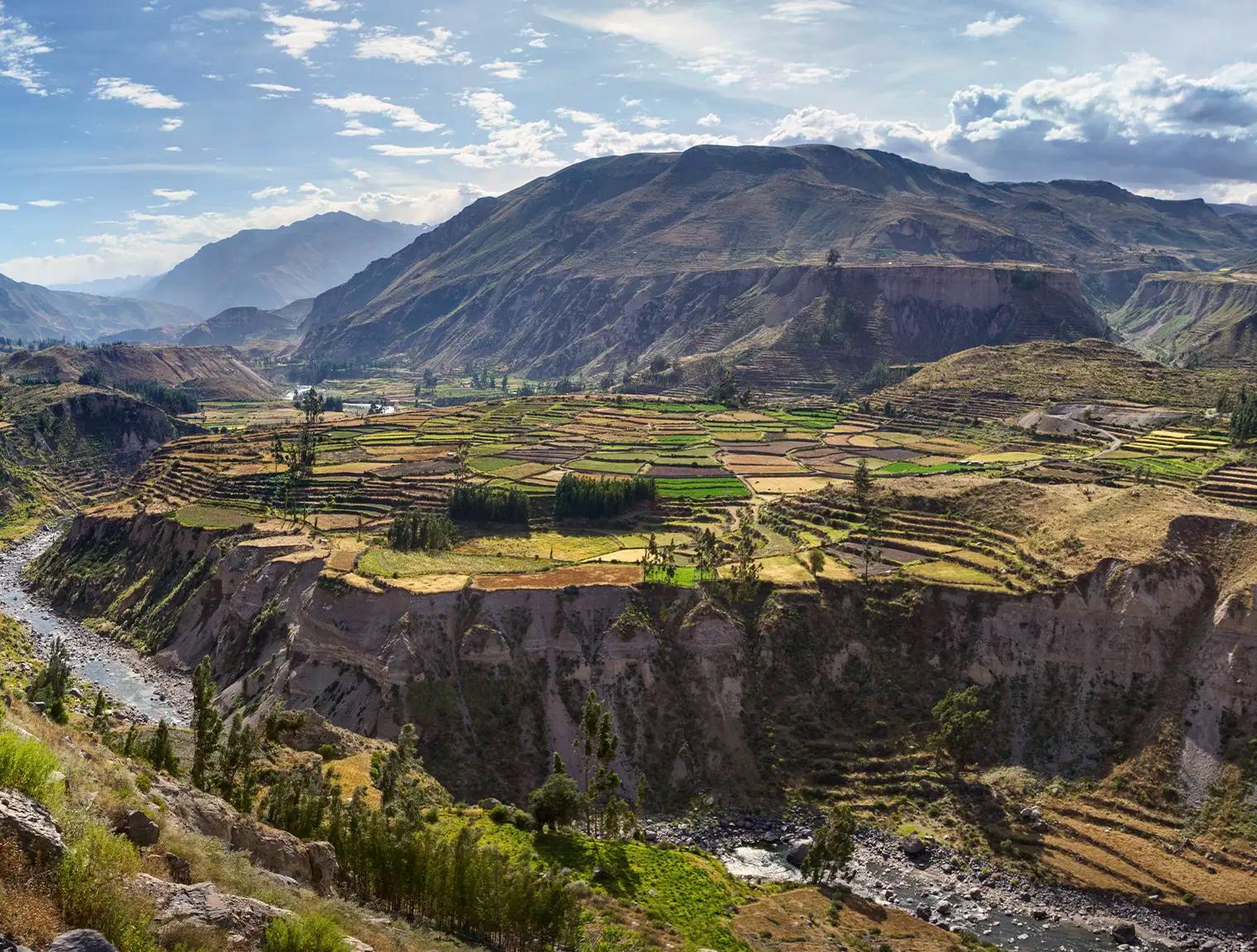
11 days from $ 2769
Machu Picchu, Cusco, Lima, , Paracas, Arequipa & Colca Canyon
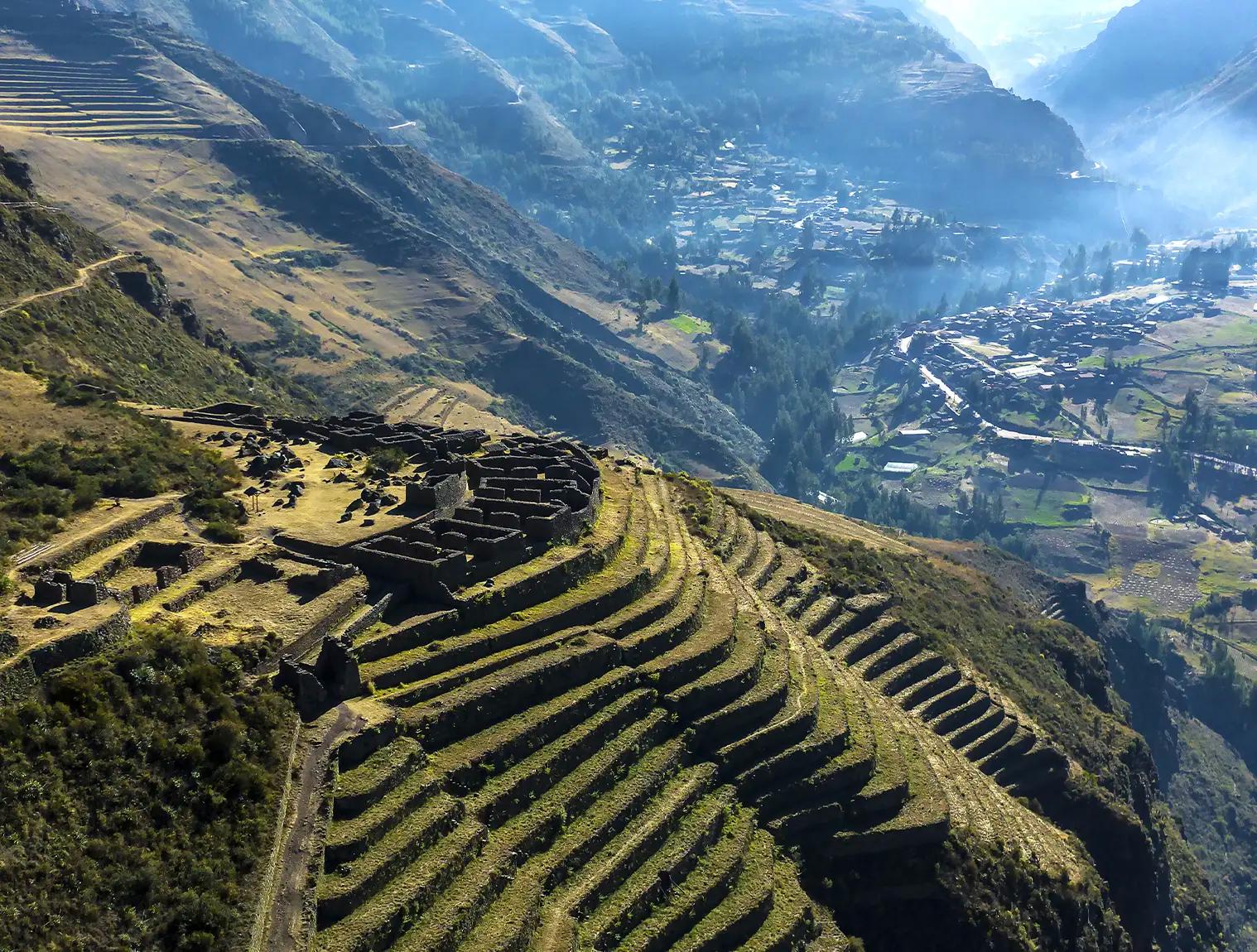
10 days from $ 2149
Lima, Arequipa, Colca Canyon, Machu Picchu, Cusco, Titicaca
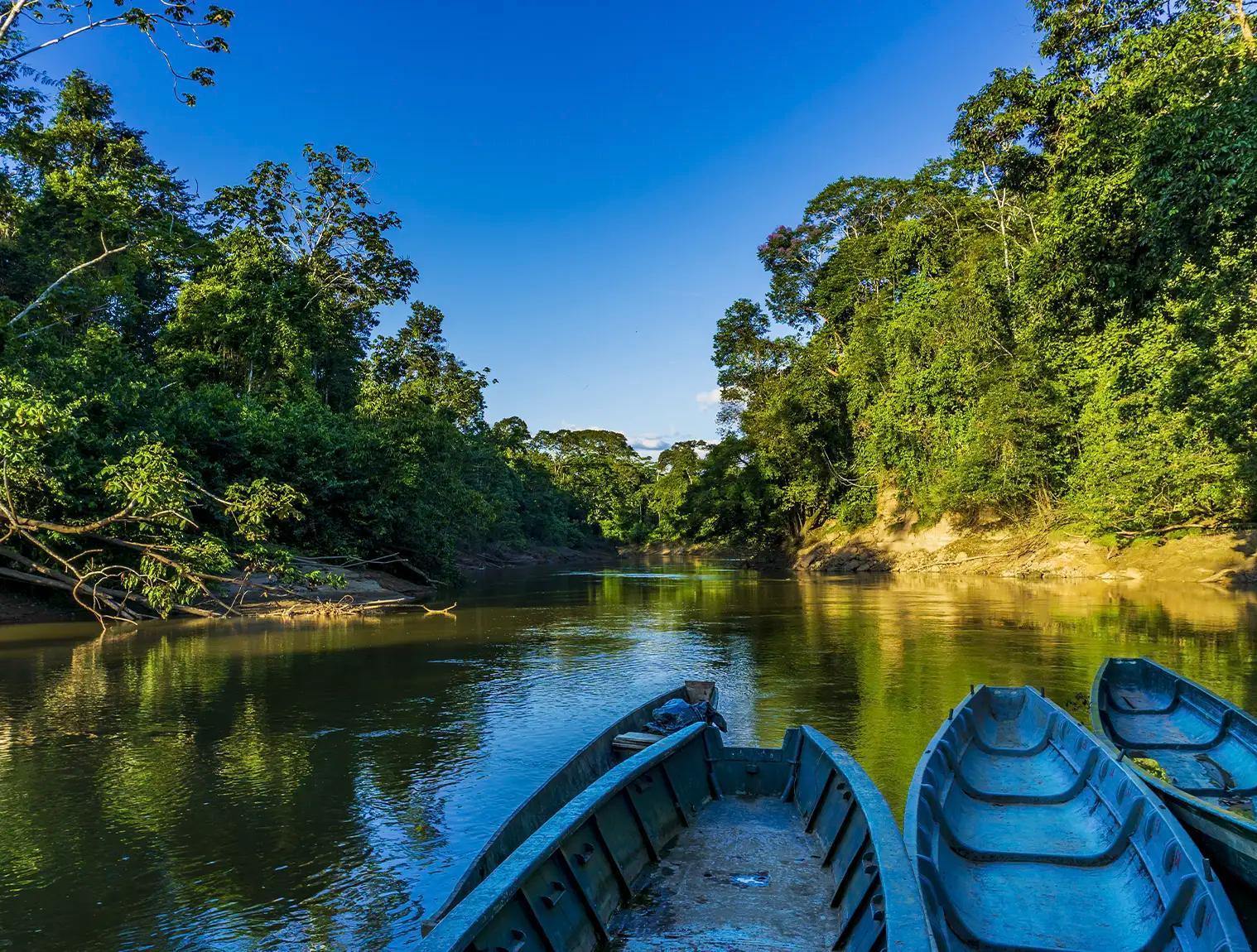
12 days from $ 2549
Machu Picchu, Sacred Valley, Cusco, Amazon, Arequipa & Colca Canyon
What are the best things to do in Arequipa?
Where is arequipa, how many days should i spend in arequipa, what is the elevation of arequipa, what is the population of arequipa, how far is arequipa from _________ by bus, when is the best time to visit colca canyon, what is the elevation of colca canyon, how deep is colca canyon, which colca canyon trek should i do, where can i eat in colca canyon, are there direct flights to arequipa.

Book With Confidence
We're flexible! Postpone your tour with zero cost up to 10 days prior to departure.
Email: [email protected]
Sign up to receive our newsletter for great articles, stunning photos, and special deals.
1-817-230-4971
Sales & travel support

Getty Images/iStockphoto
Other Peruvians joke that you need a different passport to enter Peru’s second-largest city. One-tenth the size of Lima, Arequipa is its pugnacious equal in terms of cuisine, historical significance and confident self-awareness.
Attractions
Must-see attractions.
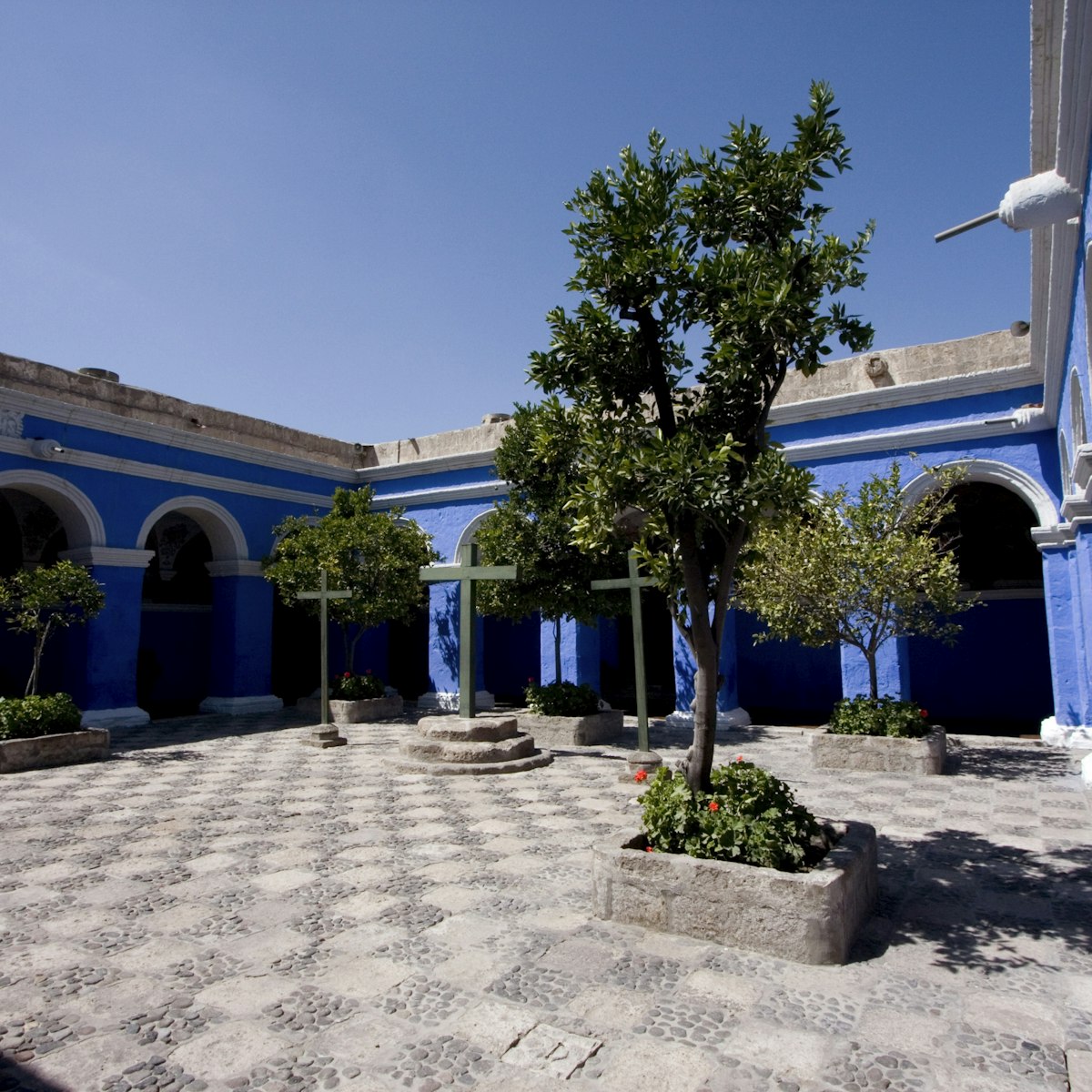
Monasterio de Santa Catalina
This convent shouldn’t be missed, even if you’ve overdosed on colonial edifices. Occupying a whole block and guarded by imposing high walls, it is one of…

Museo Santuarios Andinos
There’s an escalating drama to this theatrically presented museum, dedicated to the preserved body of a frozen ‘mummy,’ and its compulsory guided tour …

Museo de la Catedral
A must for visitors who want to see more of Arequipa's cathedral, the included 45-minute bilingual tour of this 'museum' is actually a peek at the inner…

This tranquil neighborhood makes for a pleasant, walkable excursion, with a mirador (lookout) as its centerpiece providing excellent views of Arequipa and…

La Catedral
This beautiful building on the Plaza de Armas stands out for its stark white sillar (volcanic rock) and massive size – it's the only cathedral in Peru…

Convento y Museo de la Recoleta
Bibliophiles will delight in this musty monastery's huge library, which contains more than 20,000 dusty books and maps; the oldest volume dates to 1494…

Iglesia de La Compañía
If Arequipa’s cathedral seems too big, an interesting antidote is this diminutive Jesuit church on the southeast corner of the Plaza de Armas. Proving…

Plaza de Armas
Arequipa’s main plaza, unblemished by modern interference, is a museum of the city’s sillar (volcanic rock) architecture – white, muscular and…
Plan with a local
Experience the real Peru
Let a local expert craft your dream trip.
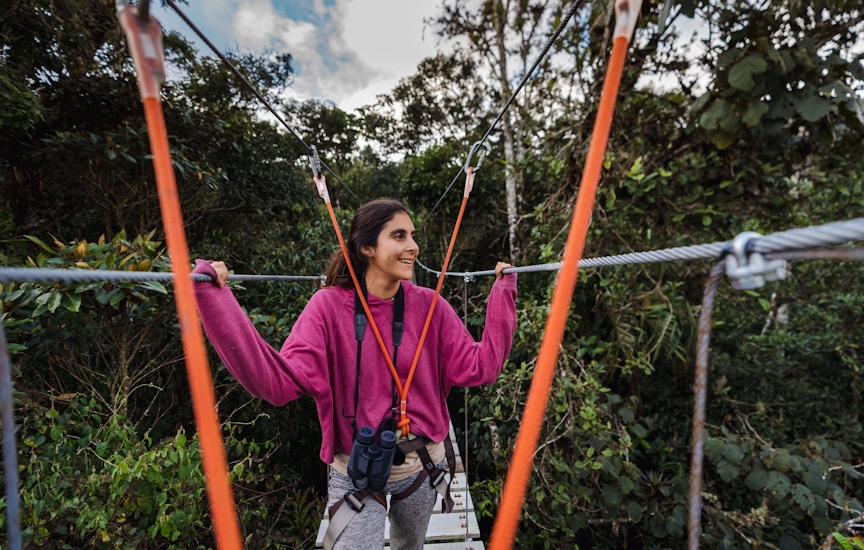
Latest stories from Arequipa

Apr 24, 2018 • 5 min read
If the hipster craft revival movement had a capital, it might look something like Arequipa, a southern Andean city anchored by knitters, bakers and…
in partnership with getyourguide
Book popular activities in Arequipa

The 15 Most Unmissable Things to Do in Arequipa, Peru’s Striking White City
By Author Graham Minser
Posted on Last updated: 6th October 2023
“You should have been here fifteen years ago, before everyone found out” says a jaded traveler, bellied up to the bar in any popular tourist destination. While some destinations may have lost a bit of their allure as more and more travelers descend on them, the same cannot be said for Arequipa (ar-ay-KEE-pa), Peru’s most beautiful city.
If you’re seeking a place away from the crowds yet full of unique things to do, Arequipa is among the must sees in Peru.
If you ask Peruvians across the country about the city, the first things they will likely mention are the beautifully stark architecture, built with the white volcanic rock called sillar , and the cuisine, which stands out in a country already renowned for its range and quality of food.
This and more should put Arequipa on nearly any traveller’s itinerary. The White City often convinces its visitors to stay longer than originally planned, and for good reason.
While the atmosphere is generally laid-back, the city and surrounding region offer plenty of sights and adventures to keep visitors busy for days or even weeks on end. Without further ado, here are my recommendations for the best things to do in Arequipa.
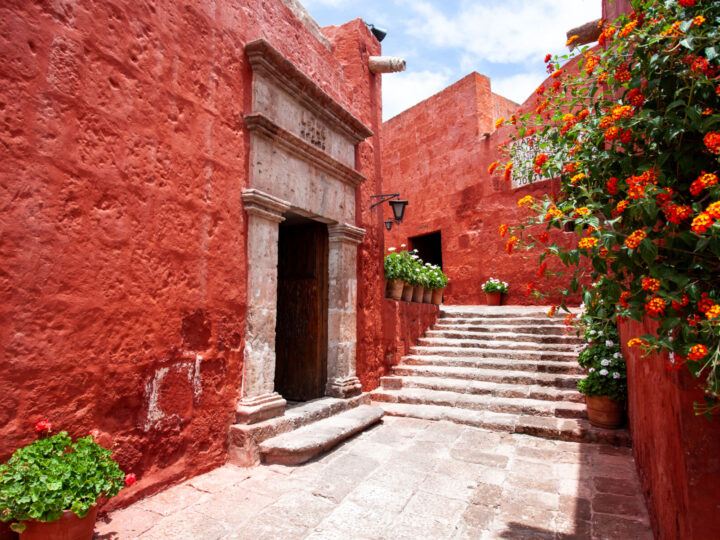
Click to navigate this article:
1. Take in the beautiful Plaza de Armas
The city’s Plaza de Armas , arguably the most picturesque in the country, is a great place to begin your exploration of the city. The well-manicured square features a large fountain, towering palm trees, is surrounded by a handsome colonnaded arcade and is directly in front of the striking Basilica Cathedral de Arequipa .
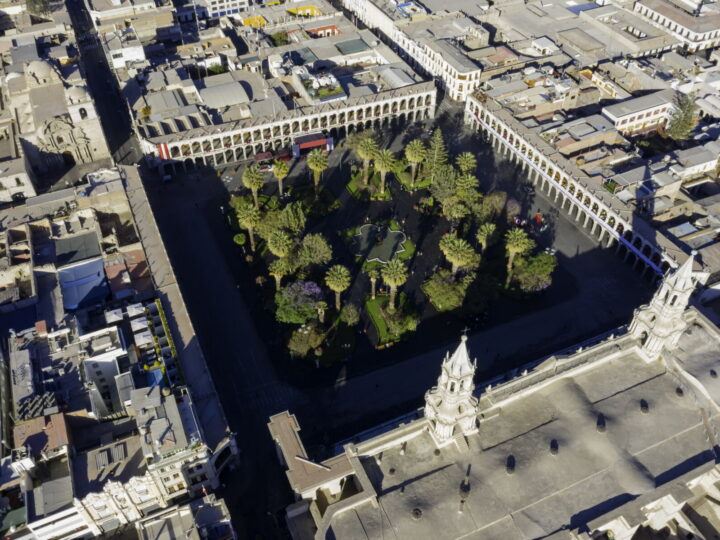
The plaza is more relaxed than others in Peru, with fewer vendors and hawkers than in Cusco or Lima. Locals and tourists alike enjoy finding a shady bench with a book or camera to while away an afternoon. The streets surrounding the Plaza de Armas are closed to motor traffic, further adding to its status as the social hub of the centre. Many options of what to do in Arequipa are within a short walk of the plaza.
2. Check out the gorgeous Basilica Cathedral of Arequipa
When it comes to architecture, Arequipa possesses an astounding collection of beautiful structures, the foremost of which are its churches. The massive Basilica Catedral de Arequipa is the oldest and most significant of the city’s buildings. Originally built in the 1540s, the cathedral has been leveled and rebuilt a number of times due to earthquakes and volcanic eruptions.
Like most buildings in the historic centre, the cathedral is carved ornately from the white volcanic sillar stone. The interior of the cathedral is equally impressive with its vaulted ceilings, ornate altar, and well-maintained pipe organ. The cathedral is particularly stunning when it is illuminated at night.
3. Visit the other beautiful churches in the city centre
Although the cathedral is certainly the crown jewel of the city, the centre has many other beautifully built and maintained churches that warrant a visit.
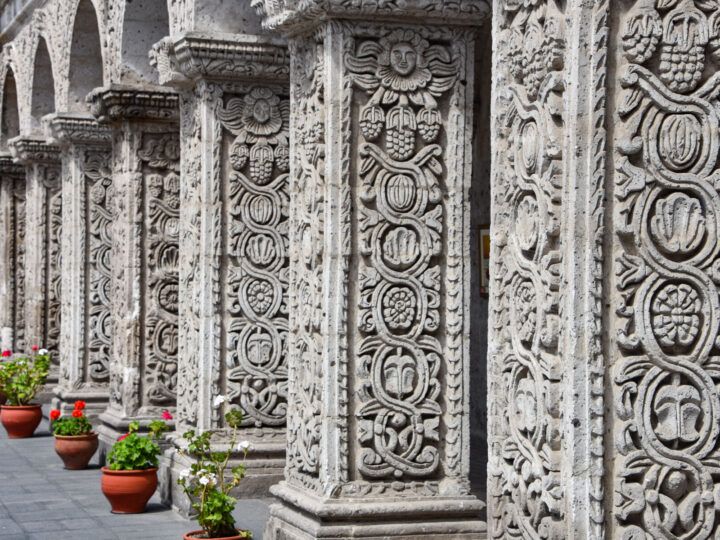
Among these are the Iglesia Santa Teresa , Iglesia de La Compañia , Iglesia de San Agustin and Iglesia de San Francisco . Some are spartan in construction while others have gold-leaf altars and walls of imported marble.
4. Tour the Monasterio de Santa Catalina
Of special note is the Monasterio de Santa Catalina , a centuries-old working monastery, occupying spacious grounds a couple blocks north of the Plaza de Armas. Built over four hundred years ago, the monastery has been a central feature of the city’s cultural and spiritual character since its foundation.
The complex houses more than four hundred pieces of religious art, many of which are showcased in the lovely gallery exhibit. The monastery is largely self-sufficient and is effectively a city within a city. Visitors may enjoy the cafe as well as a trattoria specialising in both local and Italian cuisine. Tours of the grounds are interesting and informative, and are offered in several languages.
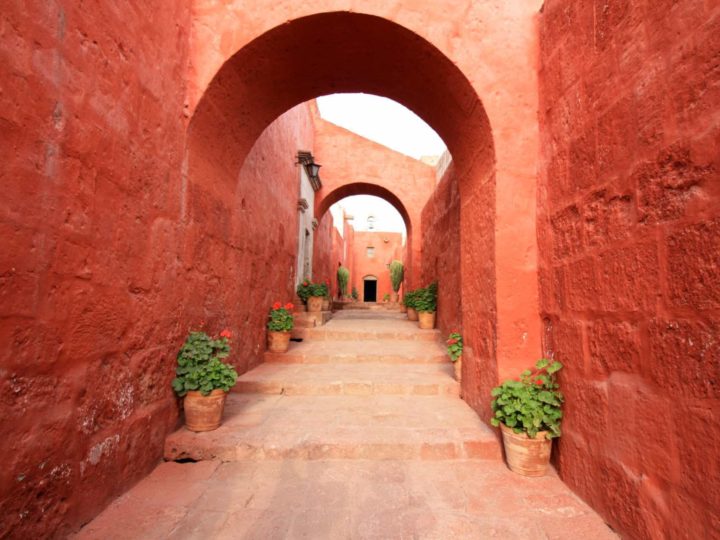
5. Treat yourself to an outstanding meal at a local picantería
Although Peruvian cuisine is perhaps most famous for its ceviche, the food in Arequipa is well-known throughout the country. Among the most famous local dishes is chupe de camaron , a hearty broth not dissimilar to a Thai yellow curry, with prawns and potatoes. Another popular choice is rocoto relleno , a spicy local pepper stuffed with mince, veggies and melted cheese.
Planning Your Trip to Peru?
Save time, stress & money with a customized travel itinerary planned for you by a Peru expert
What previous clients have said:
Steph’s help laying out an itinerary for Chile was huge toward us having a great trip. She listened to our interests and compiled a framework that we could follow to make our plans. She included many practical tips as well as numerous options. She truly saved us many, many hours of research.
On Sundays, locals flock to their favorite spot for adobo , a rich broth over slow-roasted pork. Wash it all down with some locally-brewed chicha , a sweet fermented corn drink often flavoured with cloves.
For an excellent local experience, we recommend heading to Picantería Victoria in the centre, or alternatively Picantería la Dorita or La Nueva Palomino across the river in Yanahuara. On Sundays, a reservation is recommended, as the popular restaurants fill up early with families.
6. Peruse the local goods at Mercado San Camilo
At the southeast end of the centre lies the city’s primary marketplace. Mercado San Camilo specialises in local fruit, vegetables, chocolate, meat, and dairy. There are also stalls for locally-made hats, shoes and textiles.
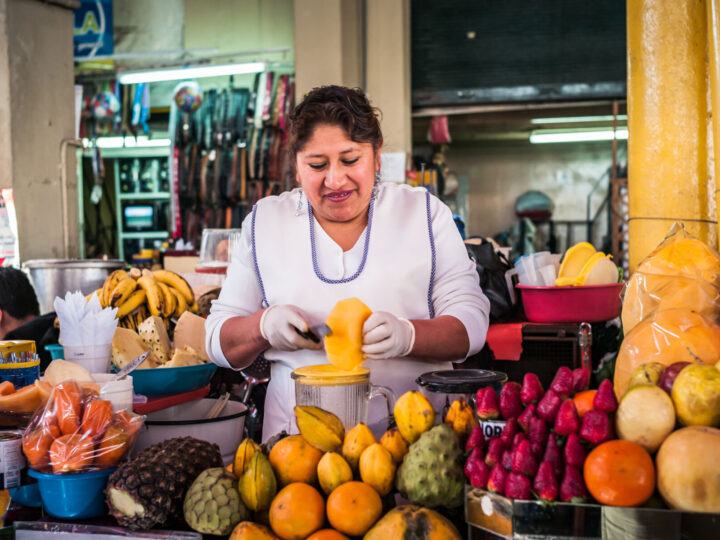
The market is also a good place to grab a quick local lunch, from grilled chicken and sandwiches to ceviche and rocoto relleno , best paired with a freshly-made fruit juice. It opens daily from 6am to 6pm, but is most lively in the mornings.
7. Visit Plaza de Yanahuara
Across the Río Chili from the centre is the lovely and peaceful district of Yanahuara . Its heart is the idyllic plaza of the same name, shaded by palm trees and encircled by cafes and restaurants. On the eastern edge of the square is the popular Mirador de Yanahuara , which affords breathtaking views of the historical city centre and El Misti in the distance.
A block north of the viewpoint is Tío Dario , a superb spot for lunch or dinner which specialises in both local dishes and seafood brought in fresh from the coast.
8. Taste and learn about pisco , Peru’s national spirit
Greece has ouzo and Scotland its whisky, and Peru is equally proud of its local distillation, pisco . Made with local grapes, pisco is distilled in small to medium batches and bottled without additives to ensure superior quality. The name derives from the clay amphorae made by the native population in coastal Peru for over two thousand years, which happened to be ideal for storing and aging the liquor.
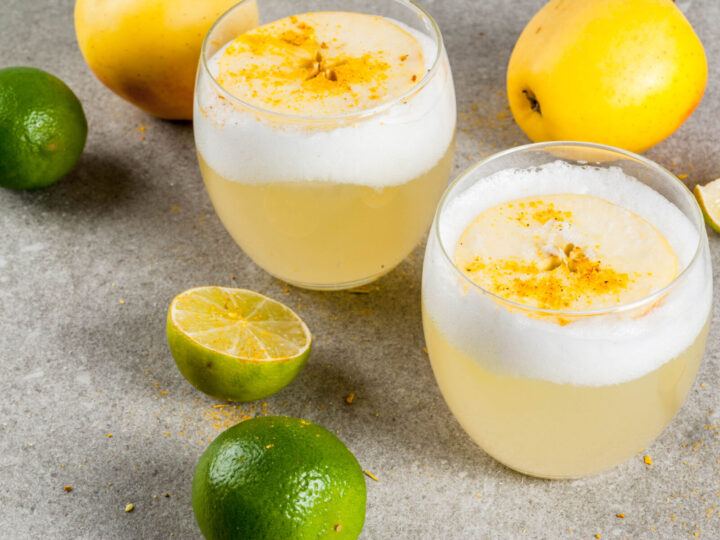
The best place to both learn about and sample the spirit is Museo del Pisco , just behind the cathedral in the city centre. With an impressive collection of local and regional vintages, the knowledgeable staff will talk you through their collection, make a recommendation or whip up an expertly-crafted cocktail.
9. Spend an afternoon touring the local museums
Although the temperatures in Arequipa are pleasant, the midday sun takes it toll while you walk around. Beat the heat and head to a local museum or two in the hours when the shade disappears. The city has a number of archaeological museums with interesting exhibits. Among them are El Museo San Agustín and the Museo Arqueol ógico UNSA . Other museums worth visiting are the Museo de la Catedral and the Museo de Arte Virreinal Santa Teresa .
10. Marvel at Juanita, the famous Incan mummy
Museo Santuarios Andinos houses the world-famous mummy dubbed Juanita , the remains of a 12 to 15-year-old girl sacrificed and offered to the Incan gods at the top of Mount Ampato over five hundred years ago. The freezing temperature kept her remains remarkably well-preserved.
11. Walk around the city with a camera at dusk
By late afternoon, the lighting in the old city is perfect for a stroll with a camera. The Plaza de Armas and Monasterio de Santa Catalina are great spots, but perhaps the best place is around Plaza Campo Redondo in San L ázaro , the oldest area in the city with its narrow streets winding past whitewashed sillar walls beneath wooden balconies.
Good opportunities for photography are not limited to the old town. Yanahuara and Parque Selva Alegre showcase lovely scenes at dawn or dusk, especially towards El Misti and Chachani , another imposing volcano north of the city. Without a doubt, capturing the White City behind the lens is one of the top activities in Arequipa.
12. Organise an old town pub crawl
As it has in many cities around the world, craft beer has taken off in Arequipa. The burgeoning microbrew scene offers no shortage of options for those looking to tie one on. The best brewpubs are all located on or near Plaza Campo Redondo on the northern edge of the city centre.
Melkim Taproom features at least ten beers on tap, both their own and of other local brewers. Nowhere also offers several options from the barrel, with a focus on fruit beer. Nearby is Chelawasi Public House with a large and varied offering of local brews, as well as exceptional pub food. Last is Pataccala , a Belgian-owned operation with an impressive list of rare imported draft and bottled beers not easily found outside Belgium.
13. Climb El Misti
Dominating the city skyline at 19,101 feet (5822m), El Misti is a spectacular sight for many miles in all directions. Intrepid travelers may wonder if its climbable. It is indeed! Companies focused on Arequipa tourism operate in the city centre and organise two-day ascents to the summit.
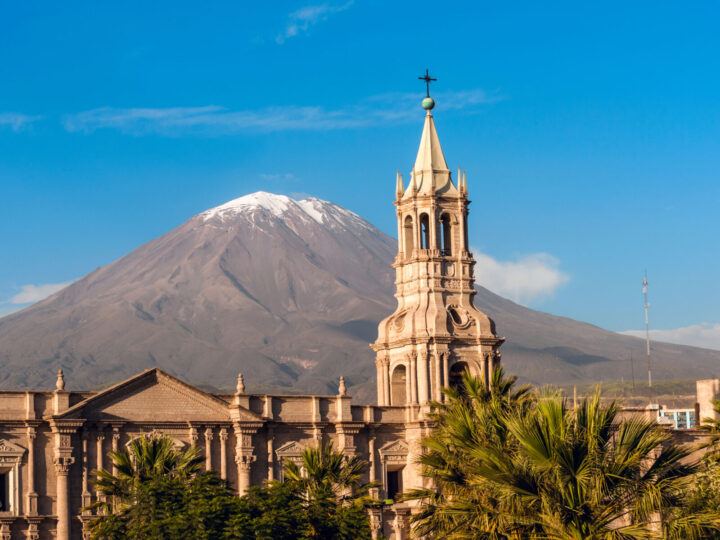
Not for the faint of heart, El Misti is a challenging climb, if not a terribly technical one. We recommend going with Pablo Tour , which offers transport, camping and climbing gear, food and water, and expert guides. You will need to bring your own water, sleeping bag (available for hire), sunglasses, sun cream, toilet paper, and multiple layers of warm clothes as it gets quite cold near the summit.
Most groups reach the summit around noon on the second day, and the views are truly spectacular.
14. Enjoy the beauty and isolation of Reserva Nacional de Salinas y Aguada Blanca
Another day trip a couple hour drive from the city centre is the Reserva Nacional de Salinas y Aguada Blanca . This stunning national reserve showcases otherworldly high-altitude landscapes, wild herds of alpacas and llamas, flocks of flamingos, and the moss-like yareta plant.
Accessible by driving northeast around El Misti, the reserve covers a huge tract of land, meaning you’ll probably have a large area to yourself. This also means you’ll need to come prepared, either by hiring a capable 4WD vehicle in good condition, or going with a reputable tour company.
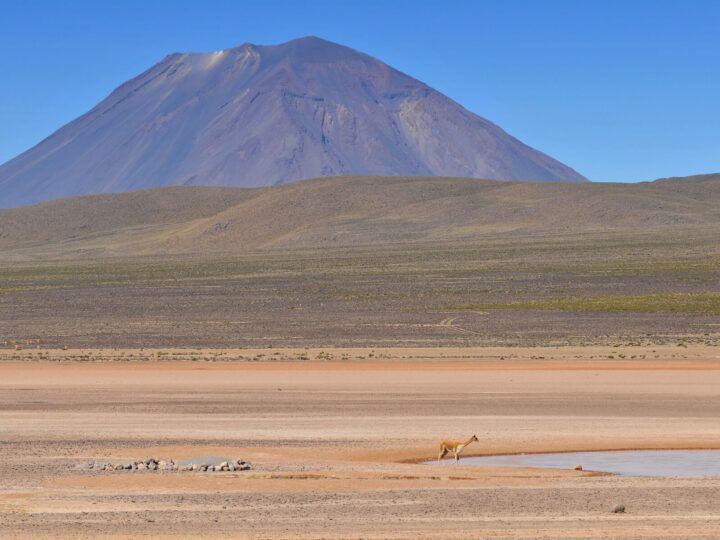
For the DIY option, we recommend going with Mountain Rent a Car , who offer well-maintained cars and trucks capable of getting you to and from remote locations outside the city.
For a guided tour, we again recommend Pablo Tour , who take travelers to Salinas Lagoon , but also offer the option to tailor a trip across the reserve.
15. Take in the sunset at a rooftop bar or cafe
The ideal way to end the day and begin your evening in Arequipa is on one of the many rooftop terraces facing the setting sun. For a coffee head to Puku Puku for anything from a flat white to a cold brew. For a beer or cocktail, try Sunset Rooftop Bar for stunning panoramic views of the surrounding mountains – certainly one of the best things to see in Peru.
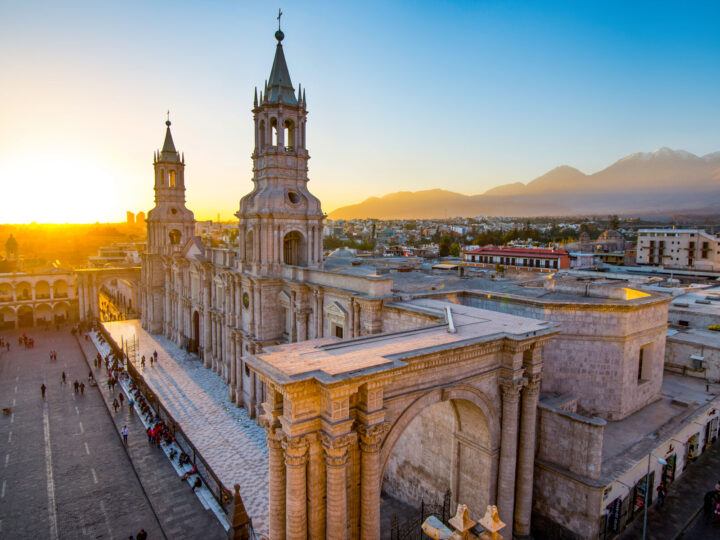
Alternatively, terraces facing northeast towards El Misti and Chachani offer an equally mesmerizing view as the westering sun paints the landscape. Waya Lookout Rooftop Bar on the Plaza de Armas is an ideal place for a sundowner, overlooking the Cathedral and El Misti. Pataccala also has a terrace, facing north towards Chachani.
Things to know before visiting Arequipa
Inspired by our guide? Here are some of the key things to consider before planning a trip to Arequipa. It’s also worth checking out our selection of one-week to one-month travel itineraries for visiting Peru as well as finding out t he best time to visit Peru according the weather .
Where is Arequipa?
In an isolated valley in Southern Peru, nestled between towering volcanoes and high desert, bisected by the Río Chili , sits Peru’s second-largest city. The first thing you’ll notice when walking around is Arequipa’s volcano, El Misti , visible from everywhere in the city. A world away from Lima, Arequipa is safe at night and its locals are welcoming to visitors. It is closer geographically and climatically to northern Chile and Bolivia than to the rest of Peru. It sits at 2,335 metres (7661 feet), which is around 900 metres (3,000 feet) lower than Cusco. Arequipa is well-connected with Lima, with several direct flights linking the cities. There are also several direct flights each week between Arequipa and Cusco. For those who prefer overland travel, Cruz del Sur has comfortable buses connecting the city to Lima, Cusco, and Puno on Lake Titicaca.
Is Arequipa worth visiting and what is it known for?
If you were to make a list of cool places in Peru, Arequipa should be at or near the top for most travellers. It is a destination made for those seeking adventure and the outdoors, top-quality gastronomy, unique architecture, a stunning natural setting, and is a relaxed, easily navigable city to explore. It’s also packed full of history. During the years of the Spanish viceroyalty, Arequipa was an important regional capital, a fact reflected in the amount the Spanish crown invested in its architecture. Much of the silver mined in Bolivia passed through the city en route to the coast, ultimately bound for the royal coffers in Spain.
How many days do you need in Arequipa?
That depends on whether you plan on exploring the region beyond the city. For travelers content to enjoy the pleasures of the city, three to five days should be sufficient. If you plan on climbing Misti, visiting the Salinas y Aguada Blanca reserve, or trekking in the Colca Canyon , five to ten days would be about right, depending on how many forays you plan on making outside the city.
When’s the best time to visit Arequipa?
The region has two distinct seasons: the dry season from April through mid-November which sees almost zero precipitation, and the summer wet season which lasts from December through March and is characterised by more frequent cloud cover and occasional rain. The climate in this part of the world is extremely dry, and Arequipa sees over 300 days of sunshine a year. The altitude of Arequipa is 2,335 metres (7661 feet). Although this is rarefied air, it’s around 900 metres (3,000 feet) lower than Cusco.
Is Arequipa a safe place to visit?
Among cities in South America with a sizable population, Arequipa ranks as one of the safest. Violent crime is virtually non-existent and the city centre is safe on foot at all hours. While the city is quite secure, it is of course important to observe common sense and avoid being a target by flashing cash and valuables, and to avoid walking alone in the small hours.
Are you sure you want to close the session?
La cuenta ya se encuentra activa
Or enter your e-mail:
Recover your offer
We will send you a 4-digit code shortly
Enter the 4-digit code and your new password
Enter your search here
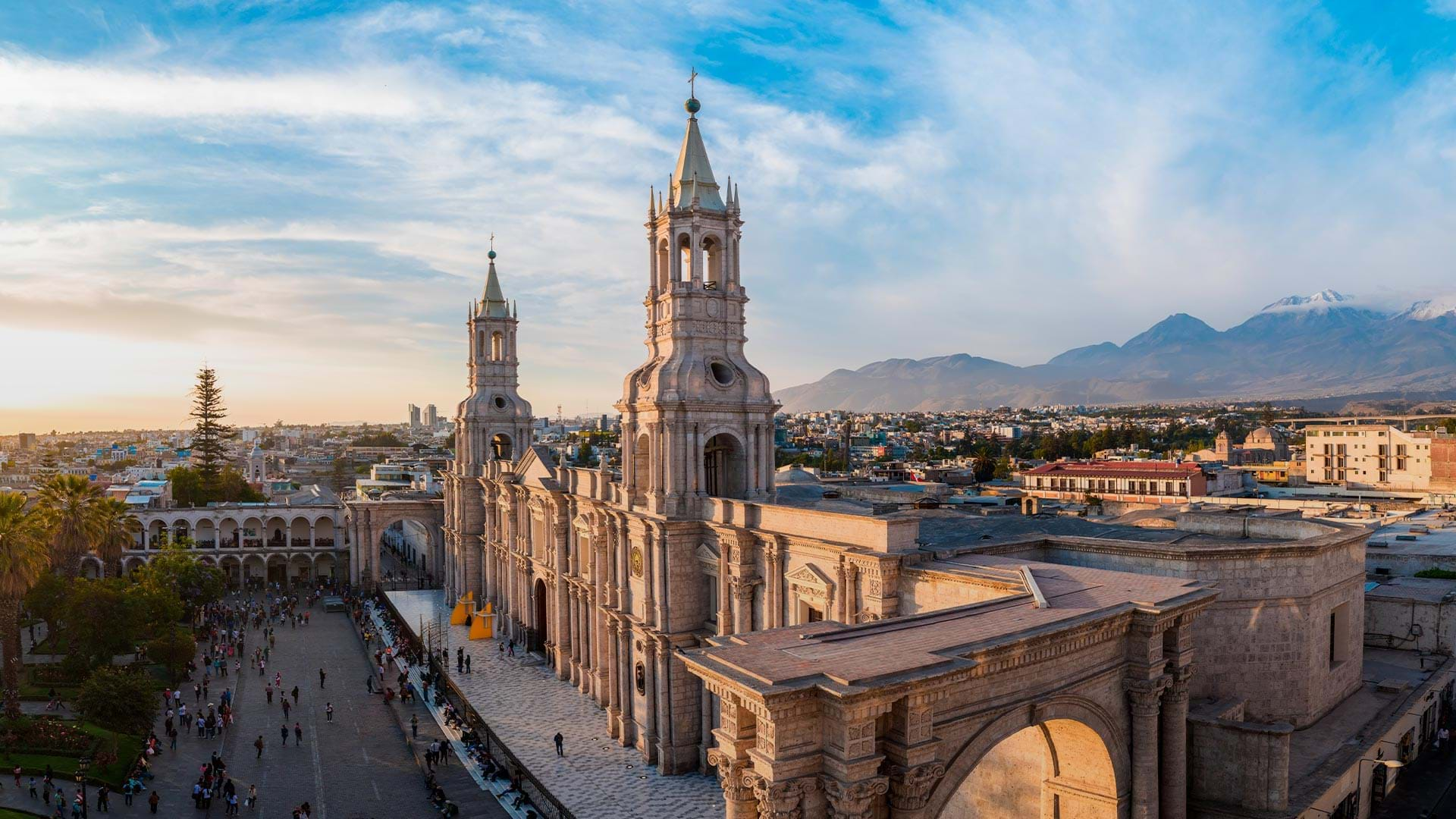
Fascinating volcanic land
Main Square, City of Arequipa Credit: Shutterstock
- Destinations
Arequipa has it all. Yes, absolutely everything you can imagine can be found in the territory of the 'White City.' History, adventure, fabulous landscapes, wildlife, gastronomy, art, and much more are hidden in the Villa of Our Lady of La Asunta of Arequipa - the name with which it was founded in 1540 - which is firmly guarded by its most imposing natural attraction: the Misti volcano.
If you want to break away from the city routine and breathe in some nature, Arequipa is what you need. The campiña awaits you, so you can appreciate the modern city from its outskirts -where traditions and ancient locations are still preserved- surrounded by beautiful green landscapes. From the viewpoints of Yanahuara, Sachaca, or Carmen Alto, you can enjoy the fabulous scenery that Arequipa offers.
Pure adrenaline
If you are looking for more adventure, you can go trekking, mountaineering, rafting, or mountain biking in the Colca Valley. The ultimate destination will always be the majestic Colca Canyon , one of the deepest in the world, which welcomes tourists alert to admire the king of the Peruvian Andean skies: the majestic condor.
Ver esta publicación en Instagram Una publicación compartida por peru (@peru)
In the historic center , you can travel back in time with the more than 500 European-Andean colonial mansions that make up the city, adorned with white vaults and arches made of sillar, too.
Delicious gastronomy
Are you a lover of seafood and crustaceans? You must try a delicious Shrimp Chupe, a soup that combines the flavors of the region with Western ingredients. Likewise, the options to satisfy your culinary cravings are countless.
For example, the Ocopa arequipeña, an emblematic dish of the city, is usually served as an appetizer. Due to its versatile and pleasant flavor, it can be combined with any main course. Another popular appetizer in Arequipa is the solterito de queso, which is a kind of fresh and light salad that combines fava beans, corn, onion, cheese, diced tomato, and olives.
But if you want to taste the city's signature dishes, you must try these three options: Adobo arequipeño, Pastel de papa con rocoto relleno, and fried guinea pig (also known as Chactado). Any of these mentioned dishes will leave you completely satisfied, as they are hearty and usually served in generous portions.
Other attractions
To complement the adventure, a leisurely walk. Arequipa also has areas to stimulate your intellect and thirst for knowledge. These are architectural and archaeological sanctuaries in the city, as mystical as ancient: you can take a tour in the Sillar Quarries or the Toro Muerto Petroglyphs. In the former, you will find a spectacular route to discover how they work with sillar, a white volcanic stone, from its extraction, carving, and sculpting phases. This rock is also the foundation of Arequipa's architecture. In the latter, you will find a place related to cave art: Toro Muerto Petroglyphs, where you will appreciate engravings of zoomorphic, anthropomorphic, and geometric figures dating from 500 to 1300 AD.
Undoubtedly, Arequipa has a series of activities and locations that capture the attention of any adventurer. Have you already decided to visit it?

How to get to Arequipa?
Lima - Arequipa
By air: 1 h 15 min approximately
Overland: 16 h approximately
Main Attractions
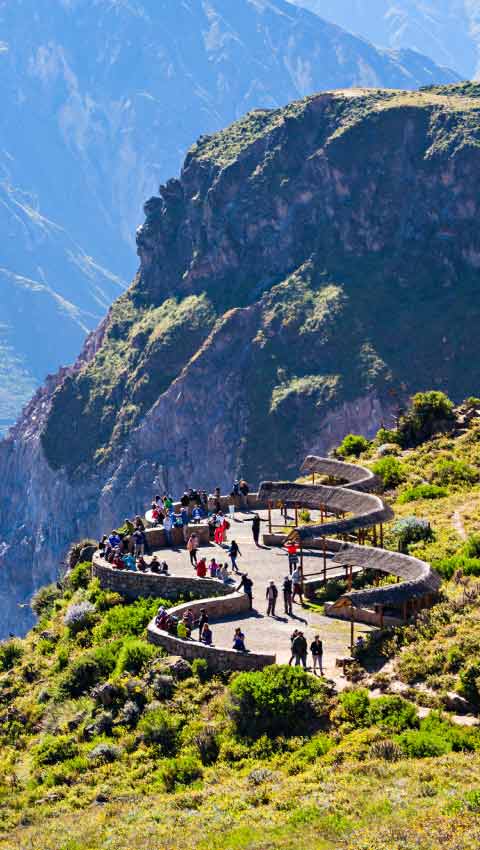
Colca Canyon
The realm of the condor
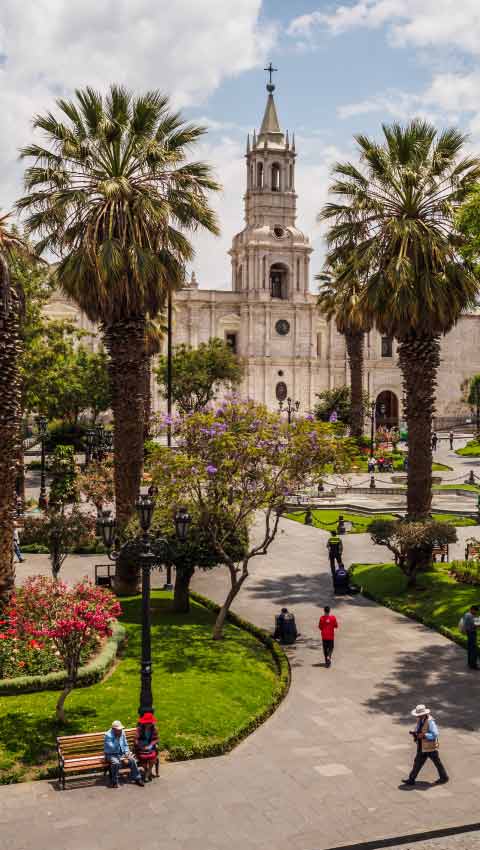
Historic Center of Arequipa
A journey into the heart of the colonial period
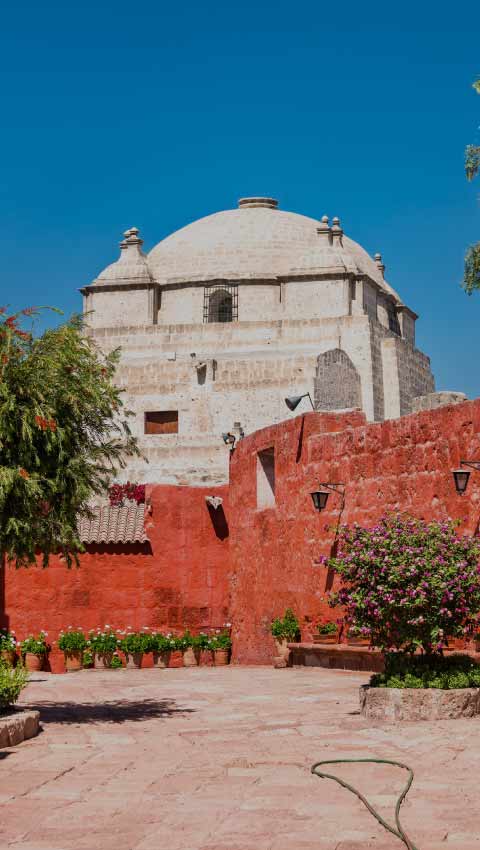
Santa Catalina convent
The colors of silent devotion
Experiences in Arequipa
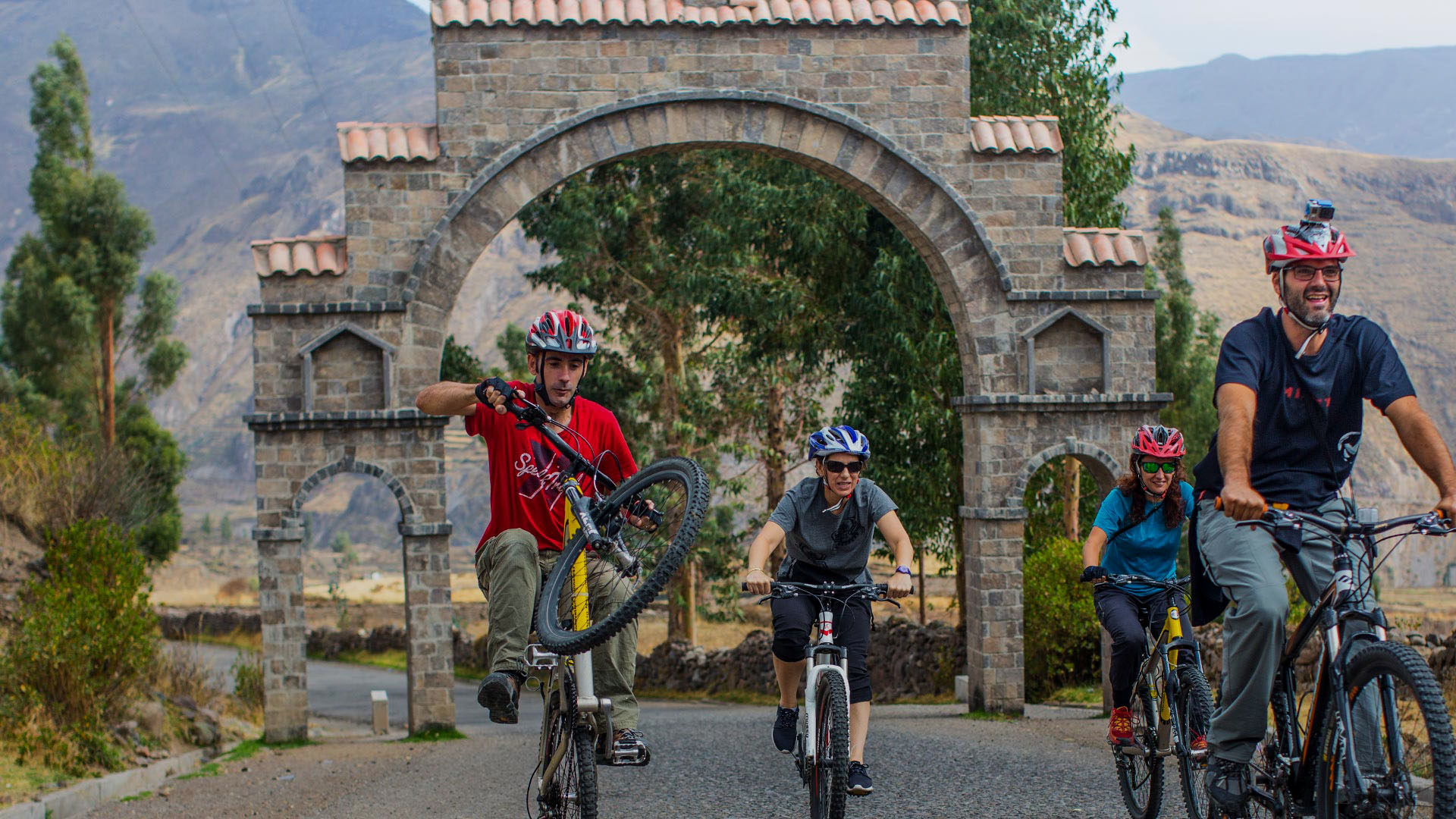
Adventure activities in Colca
Adventures in one of the world’s deepest canyons
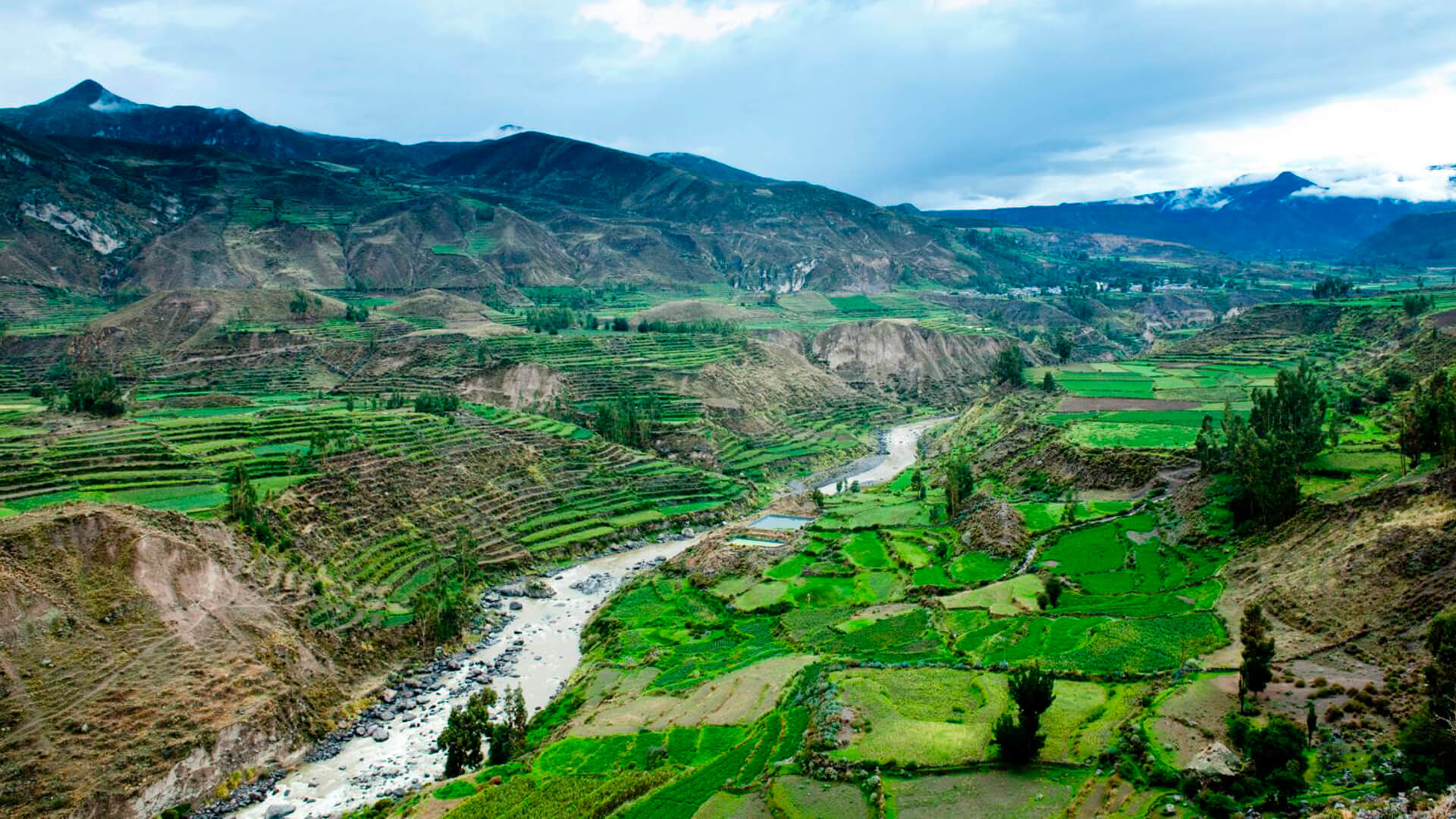
Horseback riding in Colca
Riding through the realm of the condor
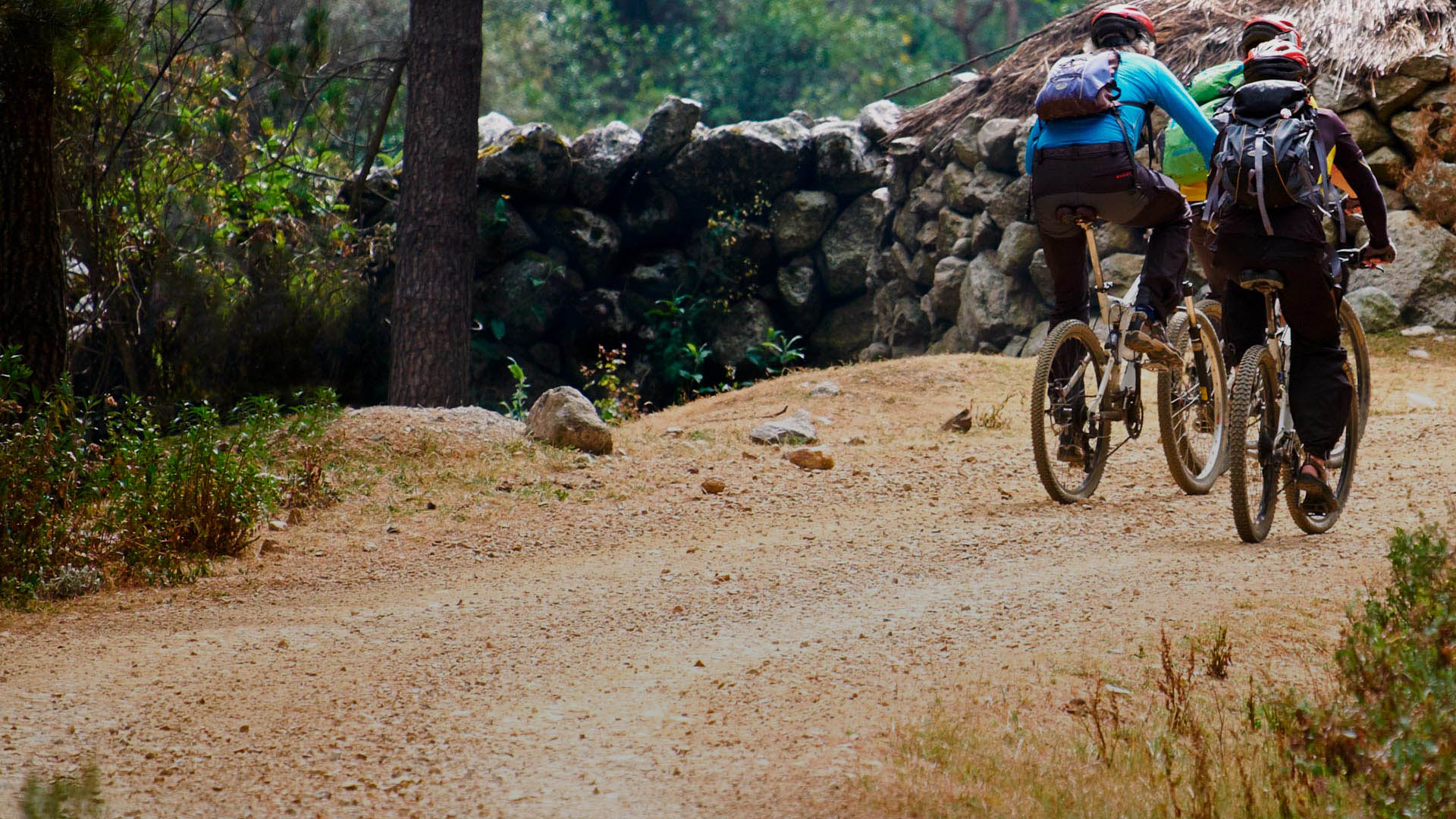
Mountain biking in Arequipa
Mountain biking under the condor’s gaze
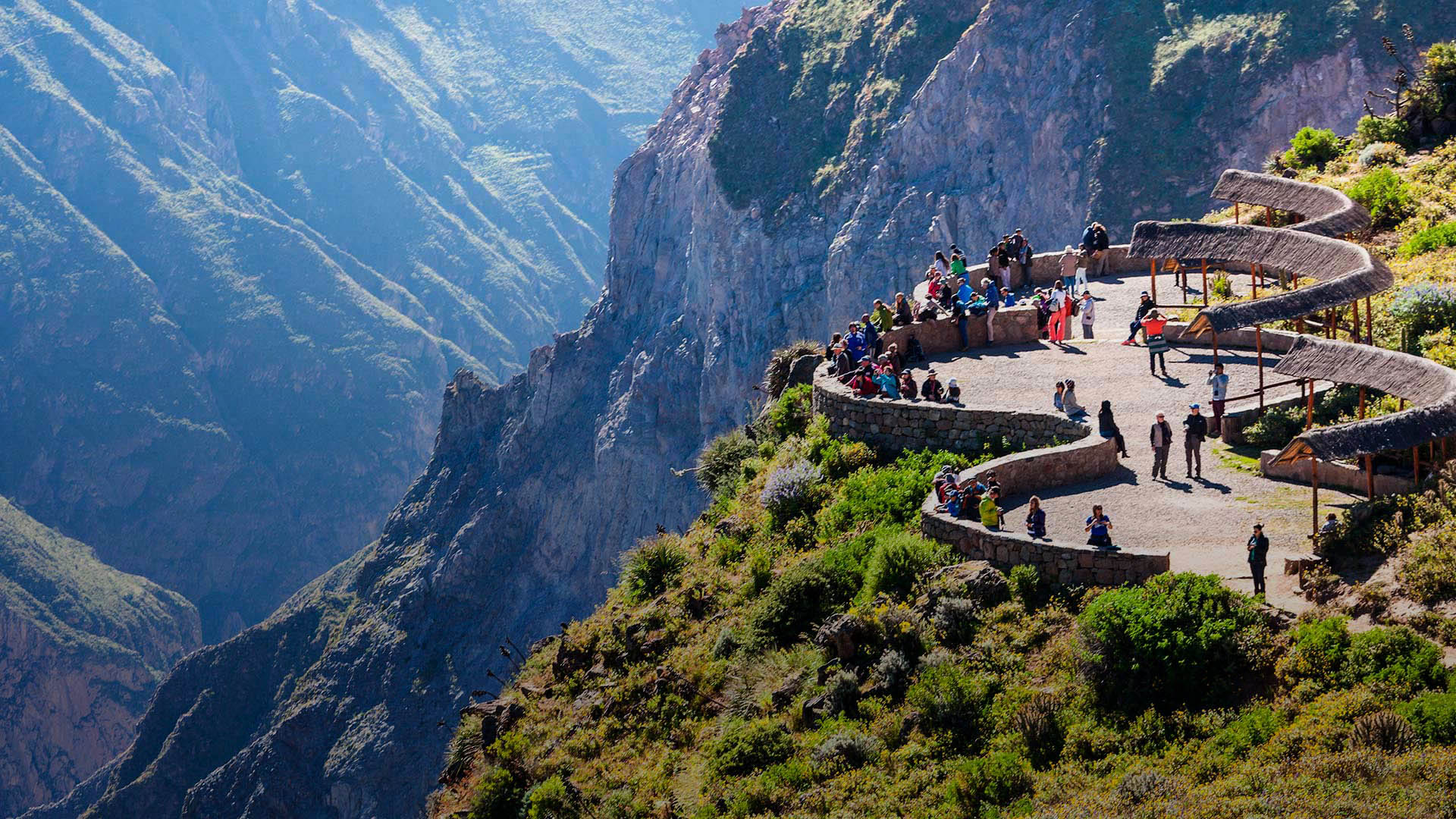
Visiting Colca Canyon and spotting condors
Where the lord of the skies can be seen
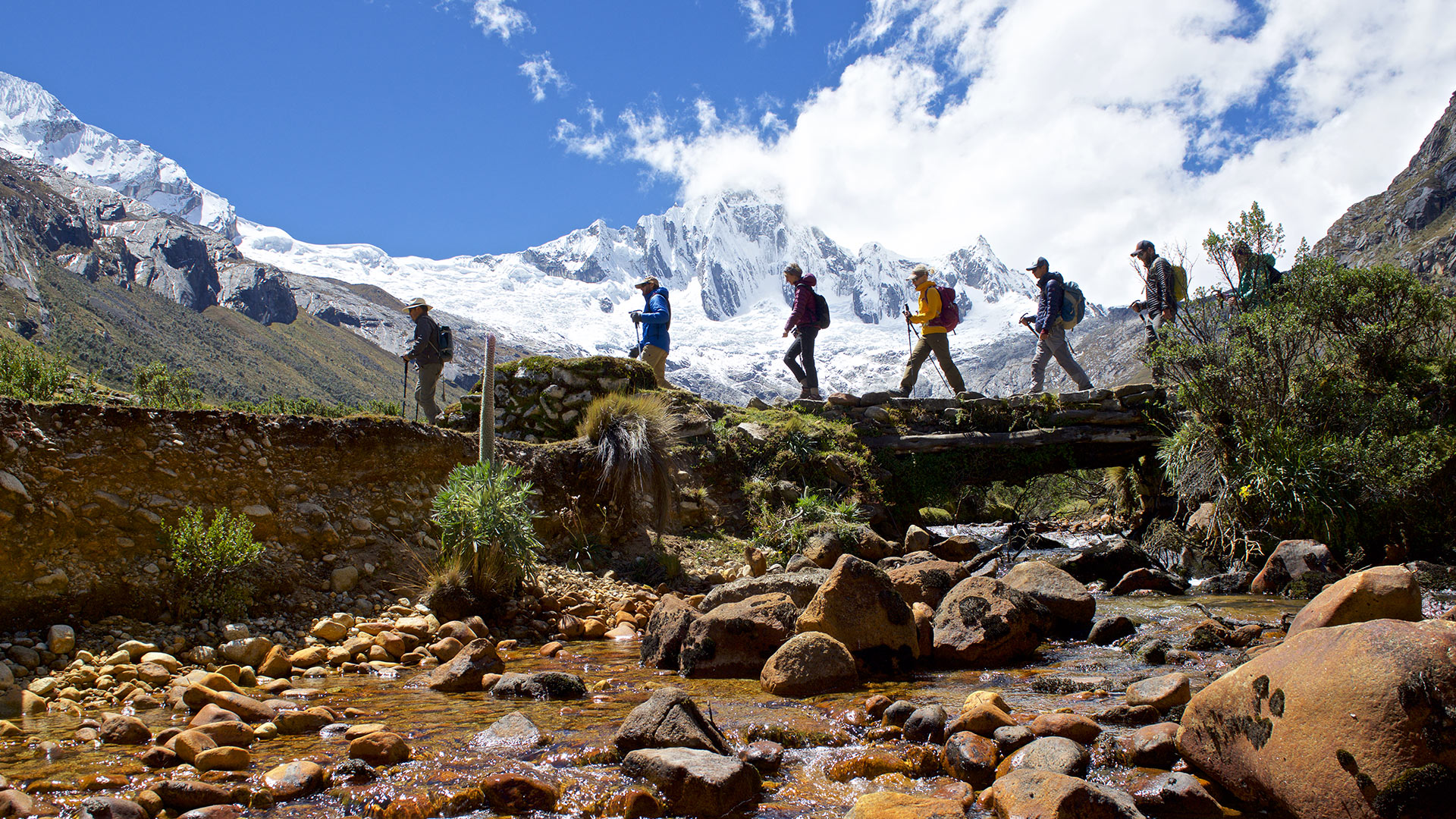
Trekking routes tour
Exploring Peru’s trails
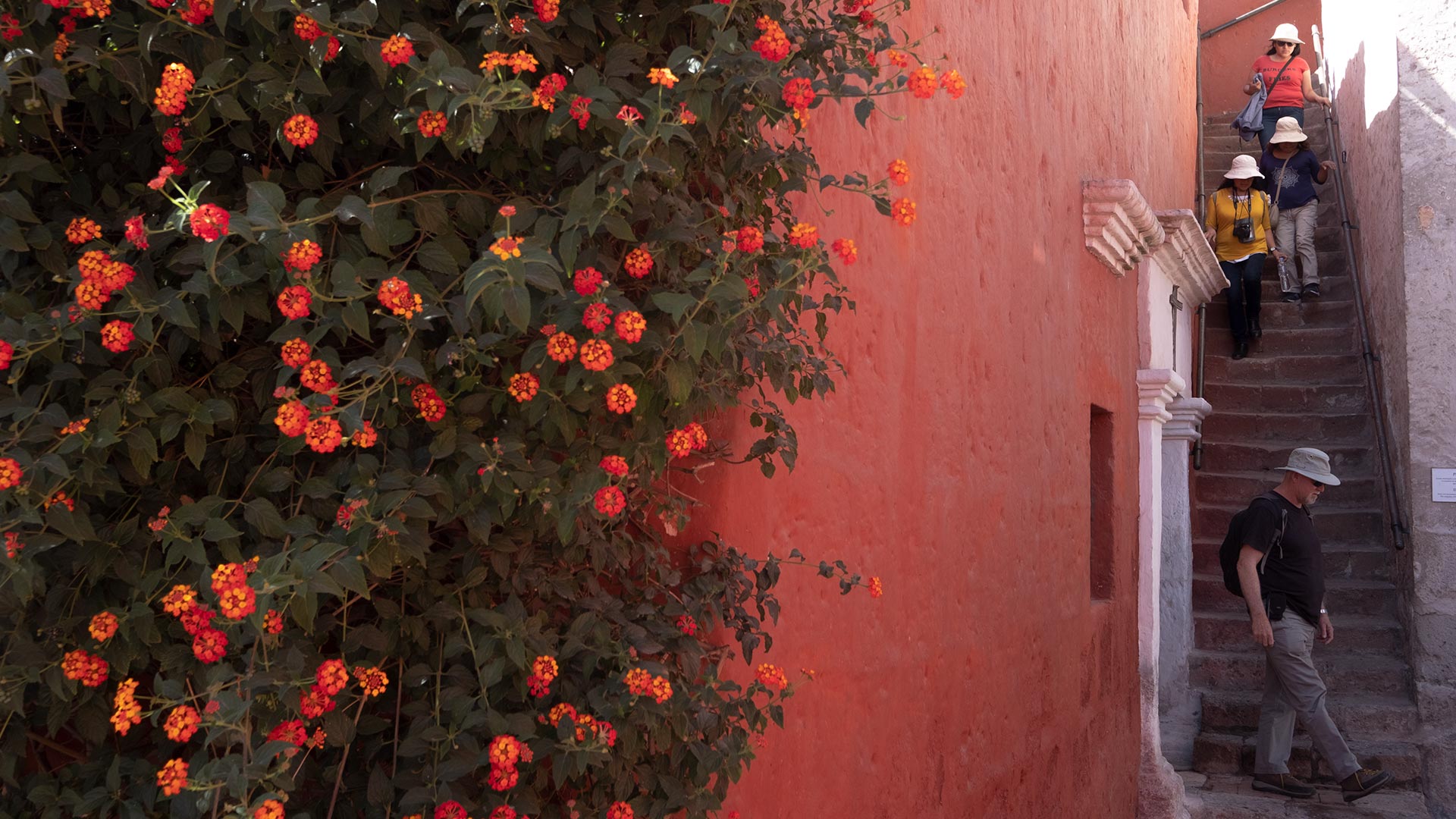
City tour of Arequipa’s historic center and Santa Catalina Convent
Journey to the heart of the colonial era
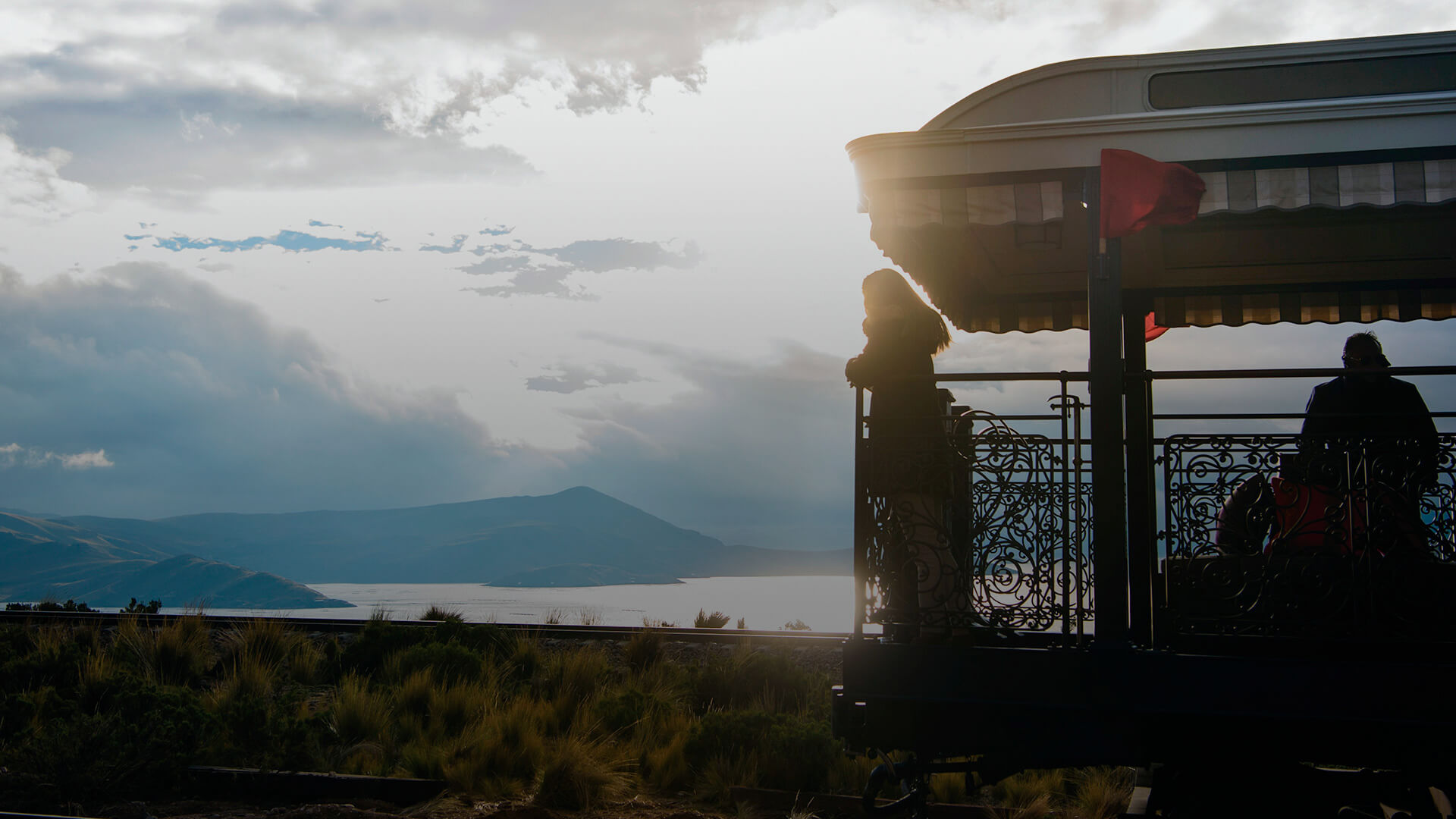
Luxury train journey Cusco, Puno and Arequipa
Where luxury arrives on rails
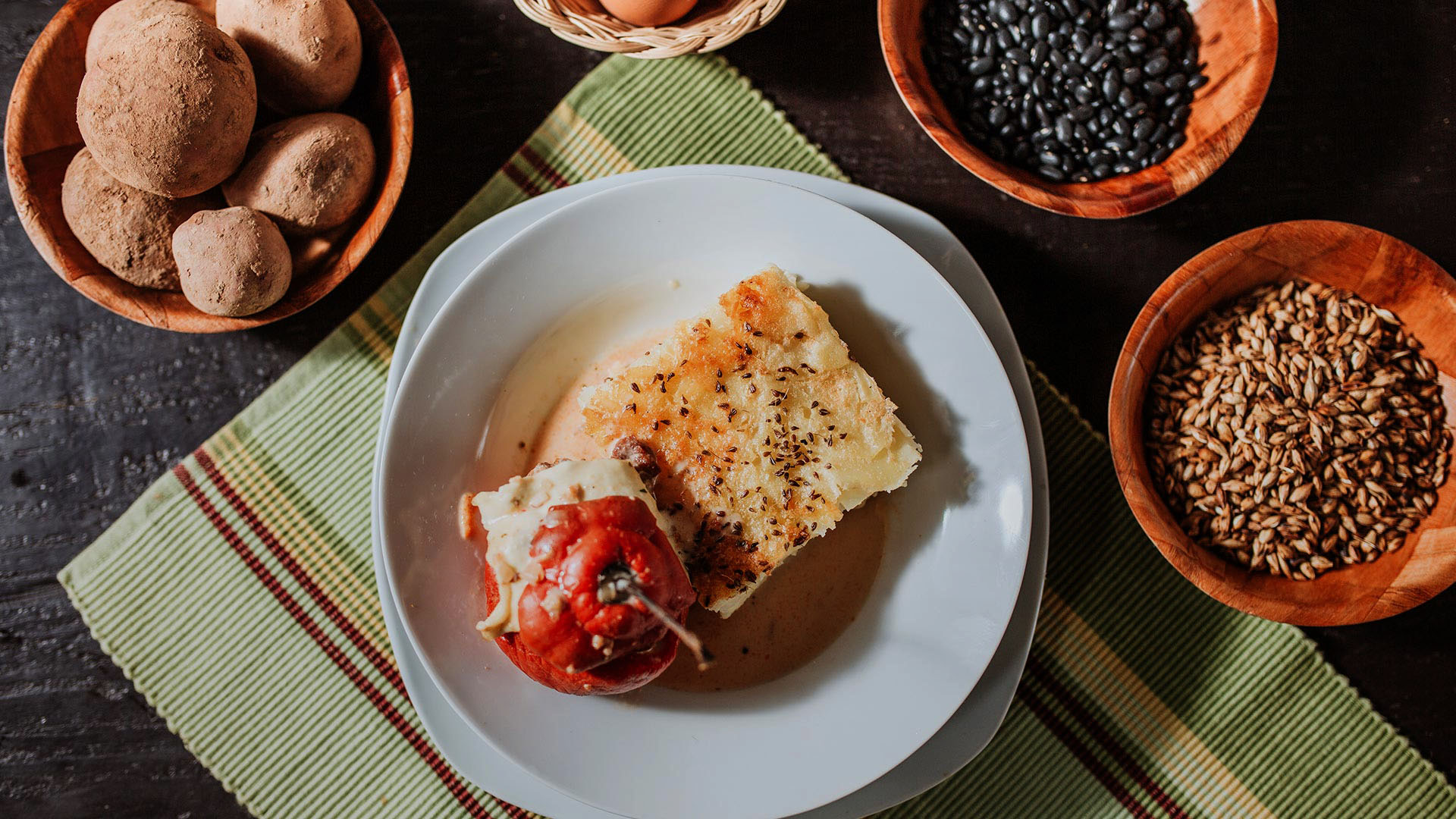
Tour of Arequipa’s traditional restaurants
Delights from wood burning stoves
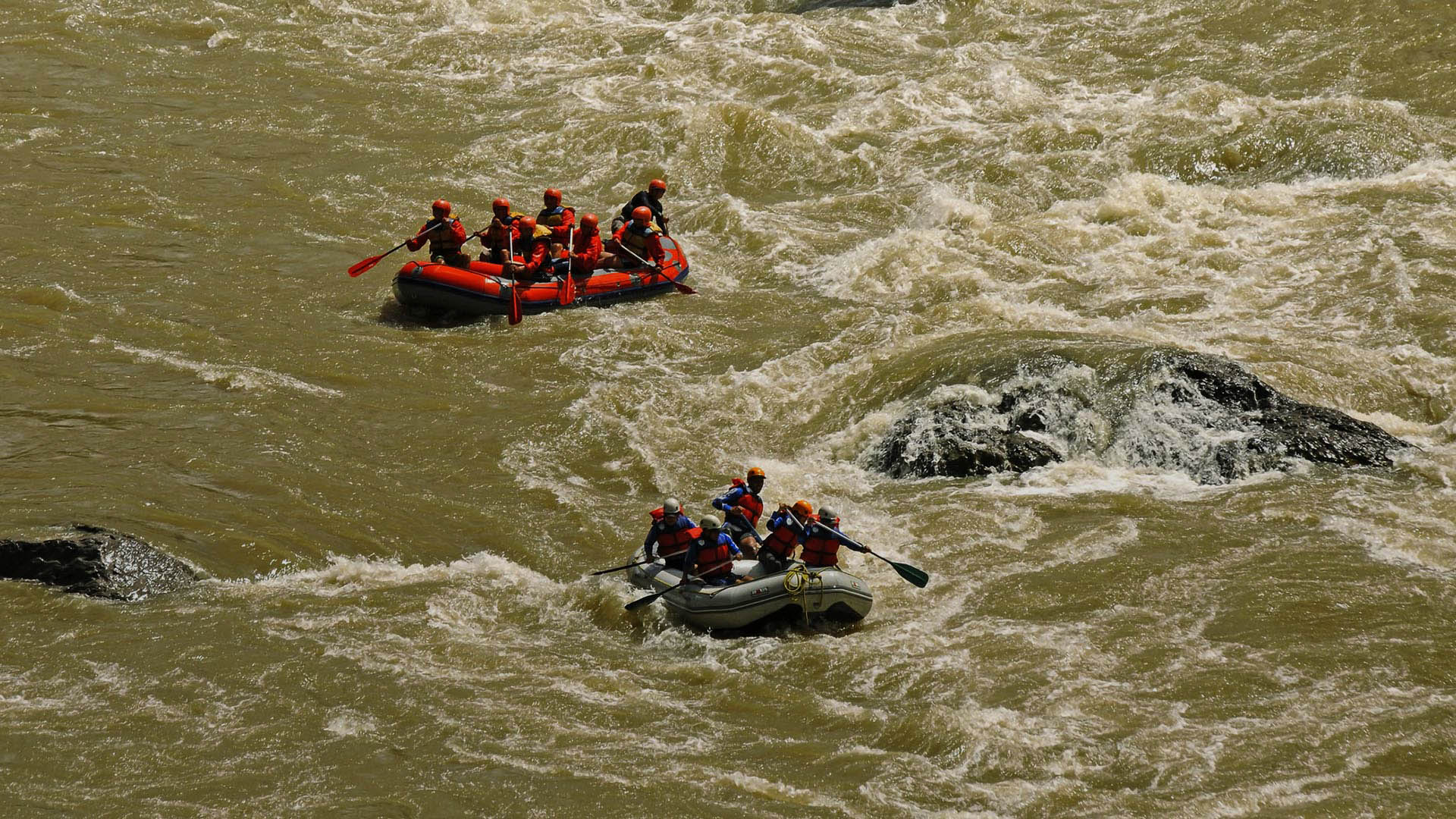
Rafting in Colca Canyon
Top destinations to explore in Perú
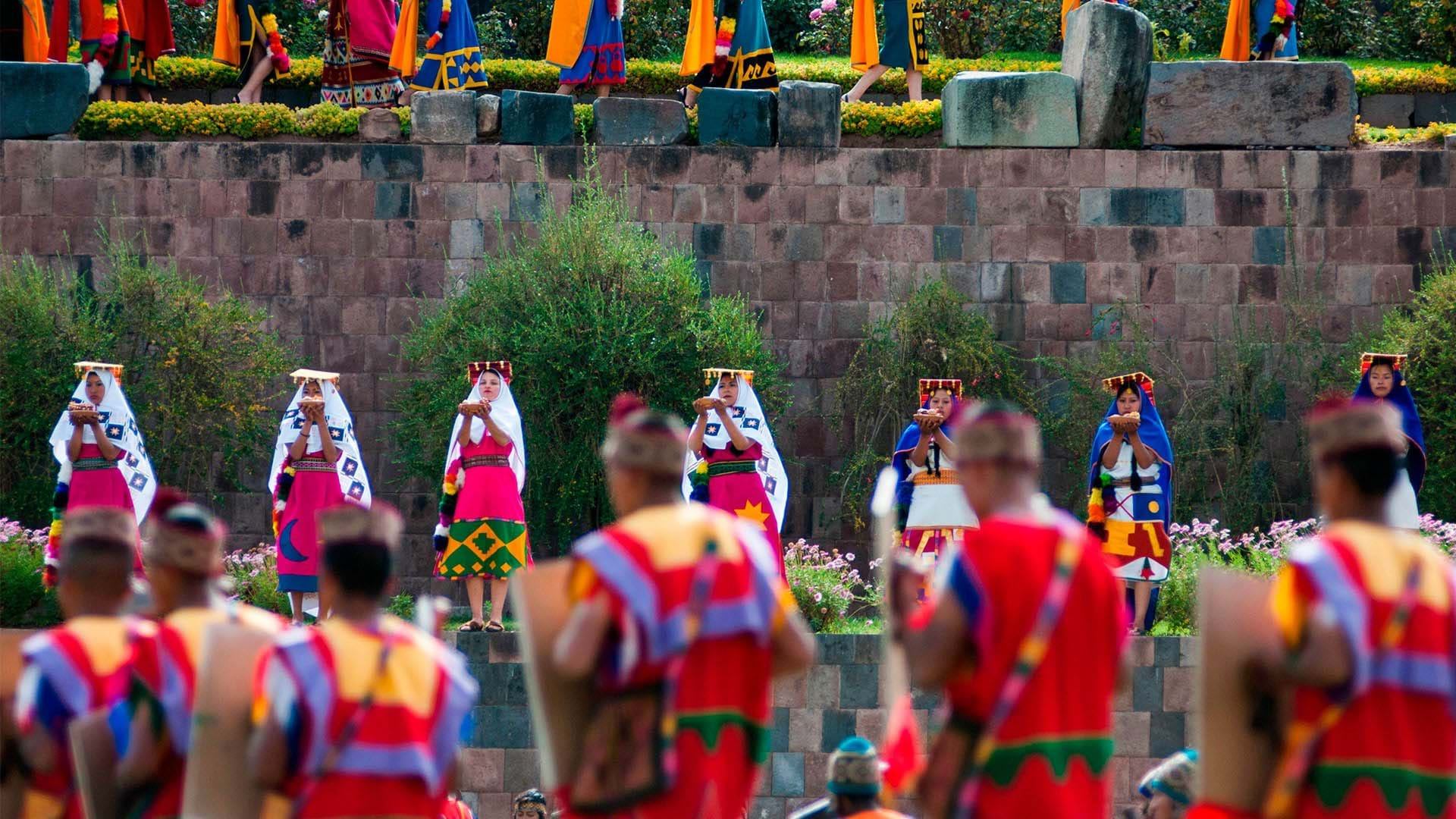
Living empire
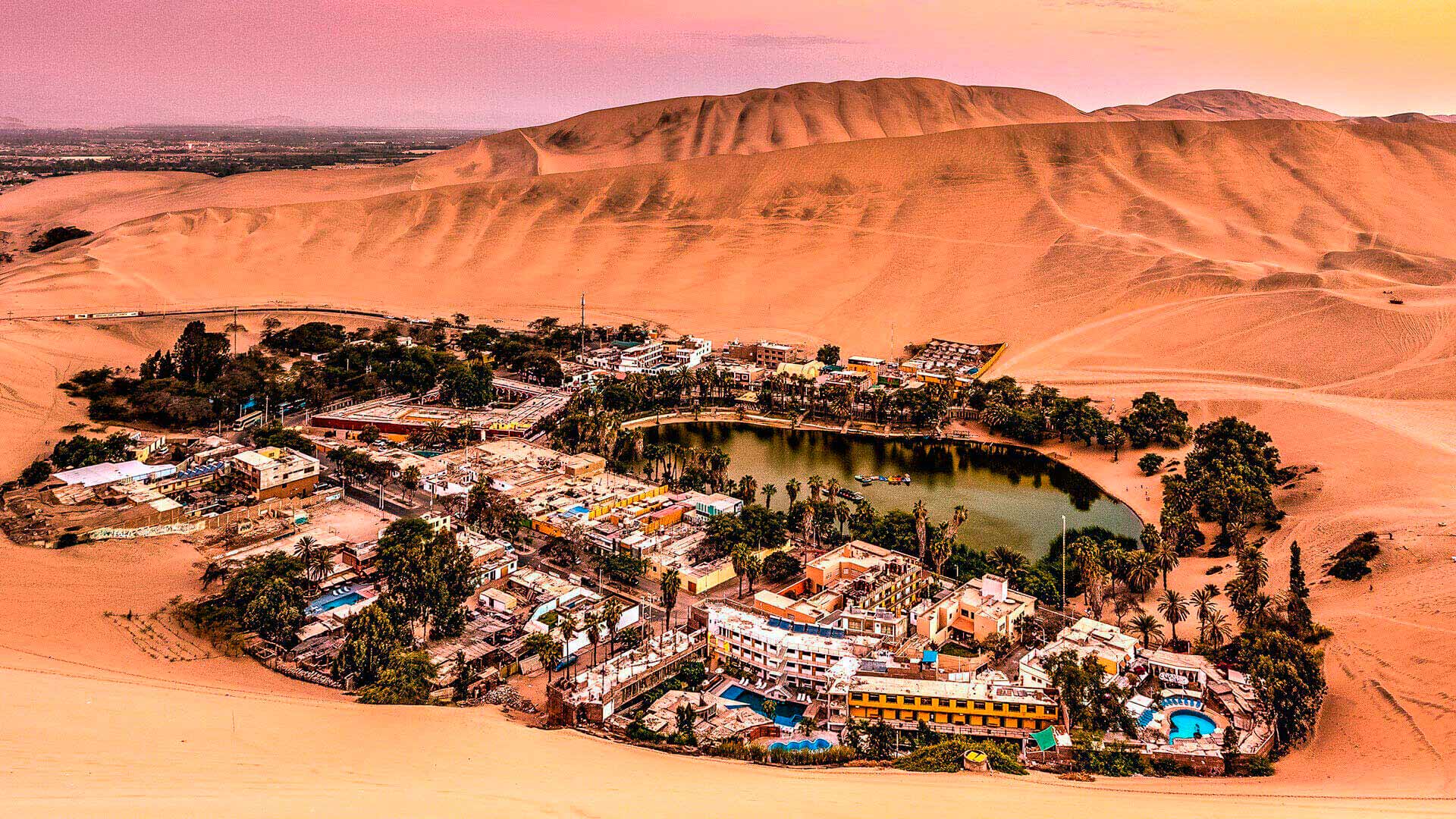
A desert, all experiences
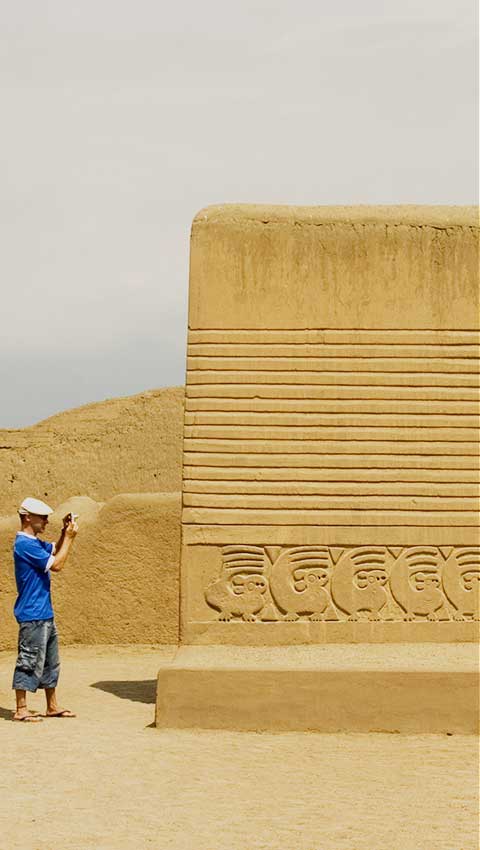
La libertad
Everything is about the sea
We help you plan your trip!
TRIPADVISOR

Why you should visit Arequipa, the underrated gem of Peru
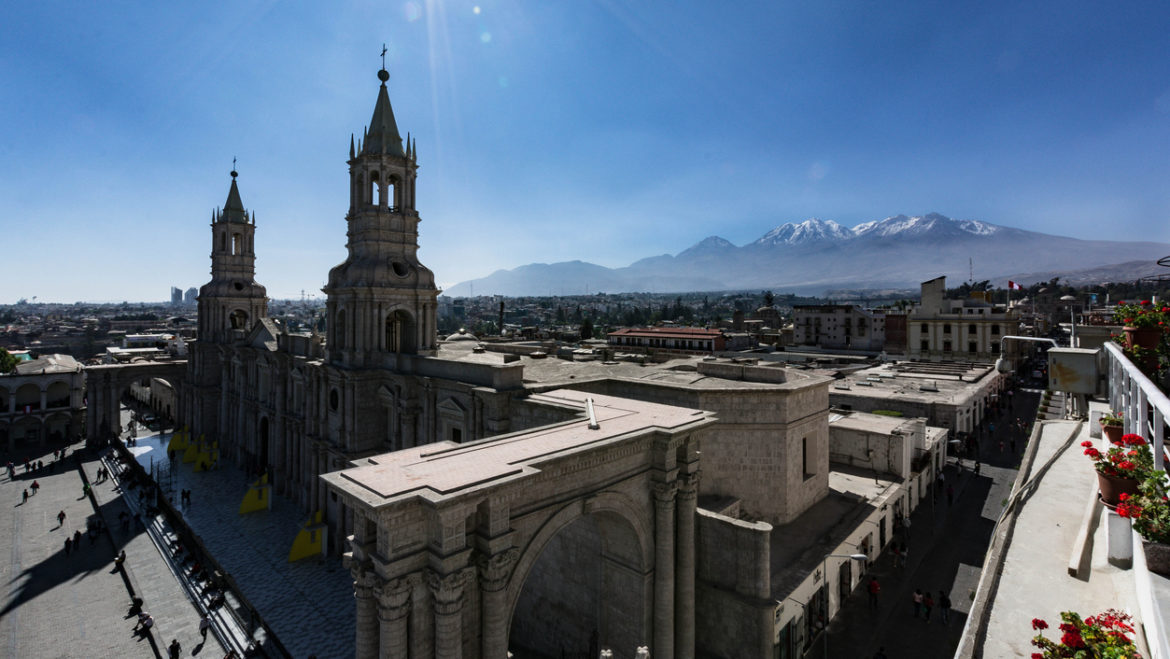
Arequipa, the stunning volcano-ringed 16th-century era city in southwestern Peru, is more than just an underrated gem – it’s an absolute must-visit.
Nicknamed “ La Ciudad Blanca ” for its unique white buildings made from a local volcanic material called sillar , Arequipa will lure you in immediately with its distinct beauty and charm. You may even feel like you’ve left Peruvian borders and any proud Arequipeño would say that you have. Just ask about the former Arequipa passport.
But, if the stunning white, carved facades and snow-capped volcanic peaks don’t capture your heart from the start, Arequipa’s rich traditions, refreshing pace, and thrilling outdoor adventures likely will.
As someone who currently calls Arequipa home, I’ve been able to pinpoint what makes this city so irresistible and it goes far beyond the 300 days of sunshine and quaint, cobble-stoned streets (though those are certainly factors).
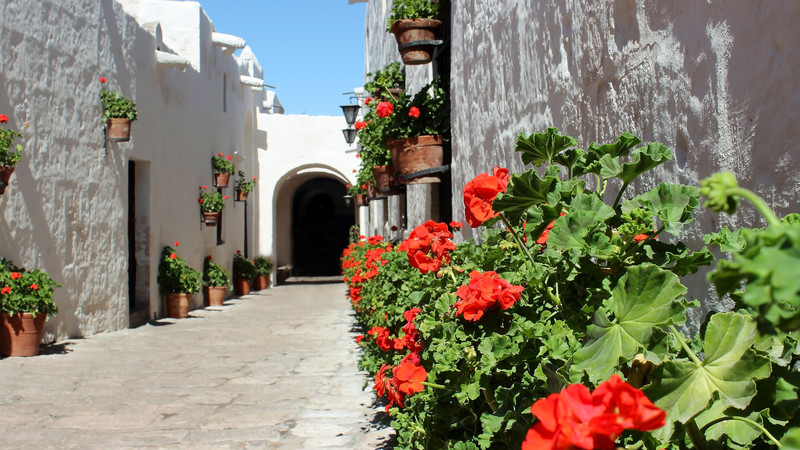
The l ocal Arequipeña c uisine
As a self-proclaimed foodie, I have to start this love letter to Arequipa with a mention of the city’s extensive list of local cuisine. Arequipa has more local dishes than any other city in Peru.
A few of my favorites include rocoto relleno , a spicy meat- and vegetable-stuffed red pepper, adobo, a flavorful pork stew served with a shot of anise liqueur (great for hangovers, I must add), and ocopa , potatoes smothered in a creamy, herb-based sauce. For the seafood lovers, the must-try local dish is chupe de camerones , a seafood soup of tomato, shrimp, hot pepper, cheese, potatoes, milk, and eggs.
READ MORE: OUR GUIDE TO PERU’S TASTIEST STREET FOOD
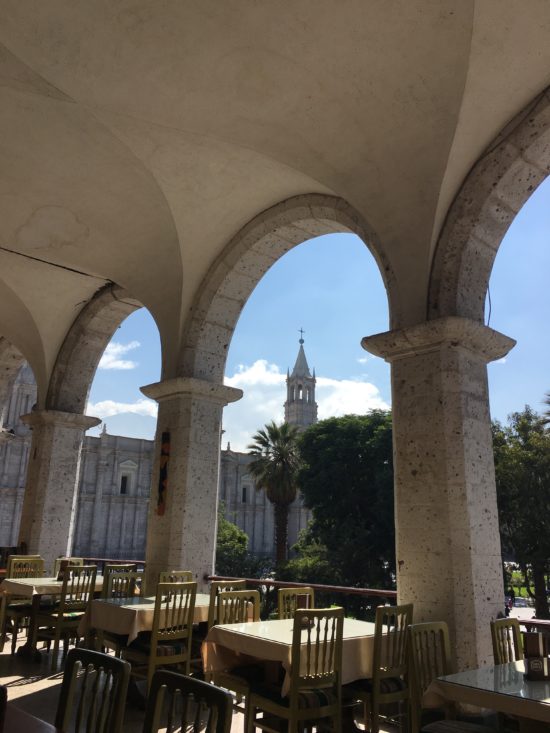
Dining in Arequipa
The p icanterías
Now that your mouth is watering, the place to try all of Arequipa’s local dishes is a lively and unique establishment called a picantería. The name comes from the fact that most of the dishes on the menu are picante , or spicy. Many of Arequipa’s picanterías are spacious and have an outdoor element to them. Try your luck at getting a table on a weekend and you’ll be knocking elbows with locals and their entire extended families.
My personal favorite picantería is called La Nueva Palomino. It has a great garden patio vibe to it and even better food. Their chupe de camarones is one of the best in town. Also, you can’t go to a picantería without ordering an enormous glass of chicha de jora , the famous corn-fermented beer that’s been enjoyed in Peru since the time of the Incas.
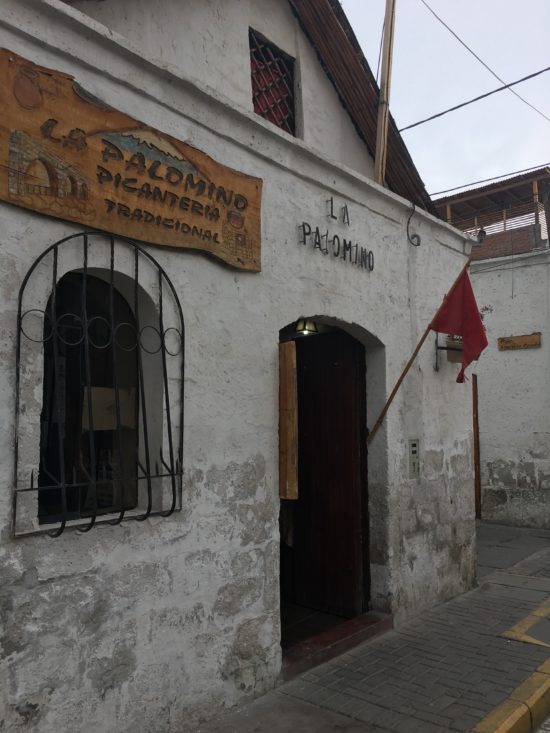
La Nueva Palomino
VISIT AREQUIPA ON THIS 15-DAY INTREPID SMALL GROUP TOUR
Foodie tips from Intrepid local leader, Paola Ramos, who is from Arequipa!:
My favourite local places to eat in Arequipa are Ary Quepay (traditional dishes – like alpaca – in a 16th-century era building with Andean folk music) and Zig Zag (a meat-heavy menu with amazing fondues!).
The queso helado
Okay, I promise this is the last food-focused reason for visiting Arequipa, but I’d be amiss not to mention Arequipa’s unique claim to dessert fame. Queso helado , the creamy local “ice cream” made from coconut, condensed milk, and egg, is a rite of passage for any traveler to Arequipa. You’ll know you’ve found it when you see the signature bucket-like churn and often a traditionally dressed woman standing by it with a free cinnamon-topped sample.
My favorite is a little hole-in-the-wall place just down the hill from the Plaza de Yanahuara on Alfonso Ugarte. The sweet woman who owns the shop makes her queso helado in a variety of flavors including papaya, strawberry, mango, and several local fruits including membrillo, aguaymanto, and chirimoya.
READ MORE: 5 MUST-VISIT HIDDEN GEMS IN PERU, ACCORDING TO A LOCAL
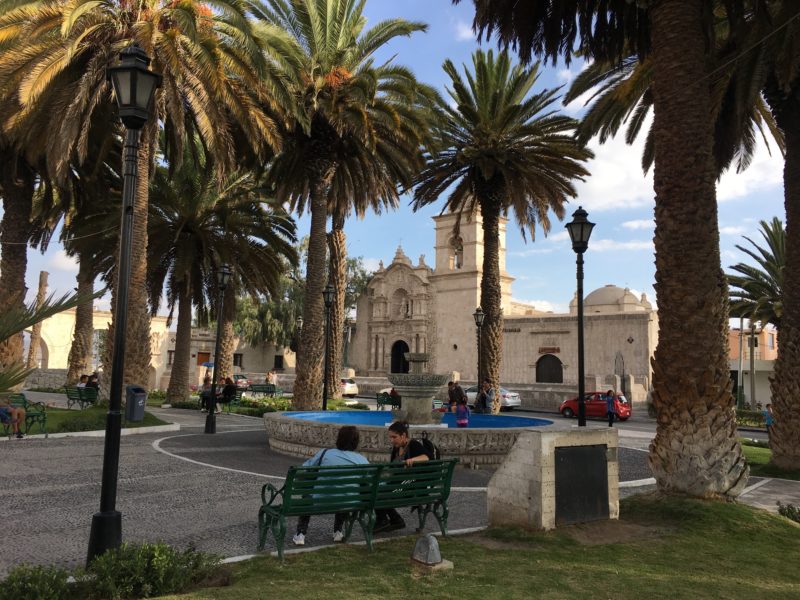
SUBSCRIBE TO INTREPID’S NEWSLETTER FOR TRAVEL TIPS, COMPETITIONS, GIVEAWAYS & MORE
The cobblestone streets of Yanahuara
When I think back on my first visit to Arequipa, the memory that sticks out to me is my walk up Leoncio Prado, a pedestrian-only, cobblestoned street in the neighborhood of Yanahuara. It’s a tangible reminder of both Arequipa’s Spanish origins and its unique aesthetic. In Yanahuara, the signature white, stone walled streets are always accented with bright pink or red flowers in wall-attached flowerpots. It’s truly a photographer’s dream and any aimless wanderer’s favorite place to get lost.
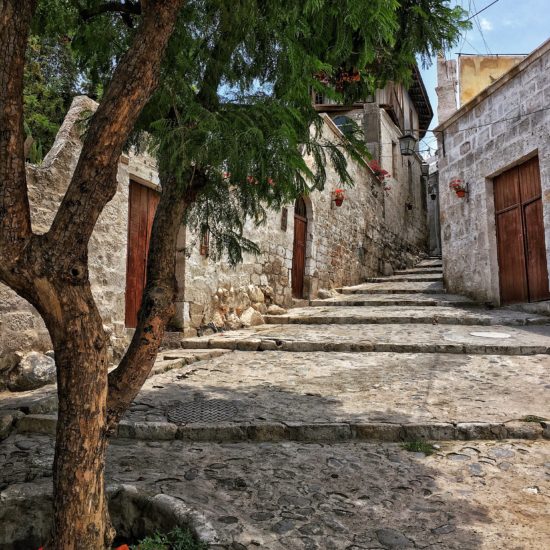
Arequipa’s beautiful streets
The endless sunshine and perfect temperatures
The sunshine in Arequipa is enough to put a smile on anyone’s face. Throw in year-round spring-like temperatures and it’s really no wonder that Arequipa is home to some of the friendliest Peruvians. The clearest volcano views and the freshest temperatures tend to occur in the morning. Find a seat at one of the open-air balcony restaurants in the arches of the Plaza de Armas, order a coffee, and enjoy the view.
My go-to spot is a restaurant called La Boveda. They have one of the best c hicharrón (fried pork) sandwiches I’ve ever had. It comes served with a carafe of coffee and, yes, it is a breakfast food. If you’re lucky, you may even spot Chachani and Misti poking their snowy heads out from behind the plaza’s main cathedral.
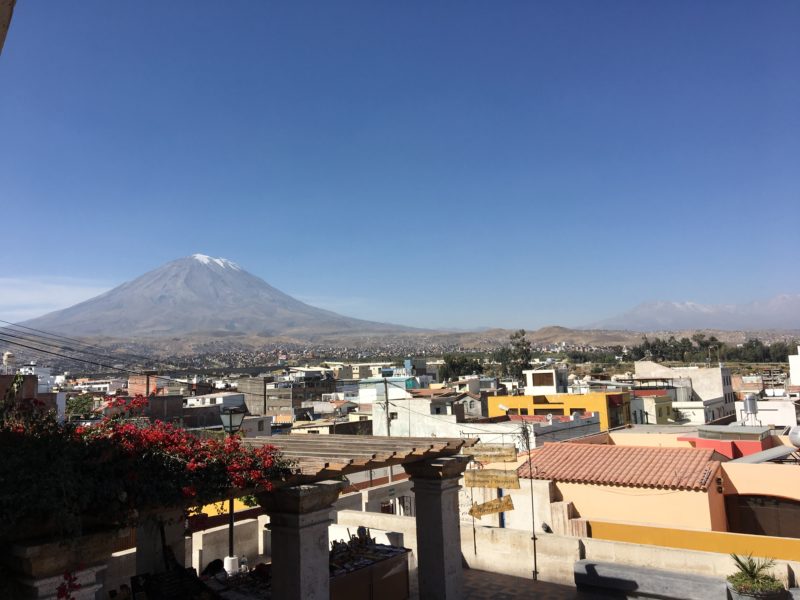
The sunsets
I’m not sure why Arequipa has some of the best sunsets. Maybe it’s the altitude (Arequipa sits at 7,661 feet) or the way the sun hits the white sillar stone, but whatever it is, it’s always an entertaining show of pink, purple, and orange hues. The best place to catch the sunset is from one of the rooftop bars in the Plaza de Armas.
My favorite is a place called On the Top Terrace. It’s located adjacent to the cathedral, which only adds to the experience as you sit there sipping an Arequipeña (the local beer) or pisco sour at eye level with the 17 th century cathedral bell towers.
The local attractions
From the volcano-framing Mirador de Yanahuara, to an Incan ice mummy named Juanita found at the top of the volcano, Ampato, the attractions in Arequipa are vast and varied. Maybe you’ve heard of the famous Peruvian author Mario Vargas Lllosa? It turns out he was born in Arequipa and that his childhood home is now the highly interactive and entertaining Casa Museo Mario Vargas Llosa. The Santa Catalina Monastery is another bucket list item, and one of the most Instagram-worthy places I’ve ever visited.
READ MORE: WHY TO VISIT NORTHERN PERU, HOME TO THE “NEW MACHU PICCHU”
The nearby adventures are of epic proportions
We’re talking scalable 5,000+ meter high volcanoes and a canyon double the depth of the Grand Canyon to trek…just to name a few of the adventures available from Arequipa.
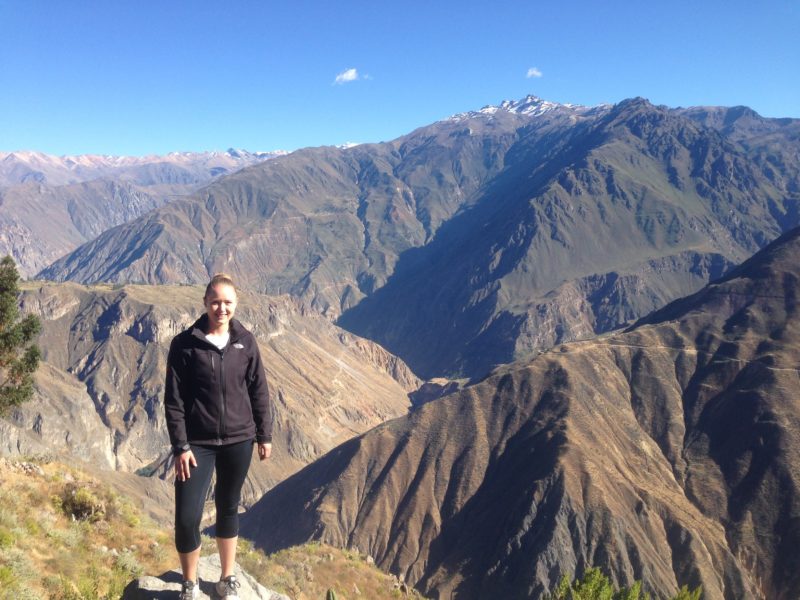
Hiking in the Colca Canyon
There’s also mountain biking, horse back riding, and white-water rafting down the Rio Chili to consider. I, myself, have trekked the Colca Canyon twice now and would do it again in a heartbeat (guide here ). This part of Peru is truly stunning and the terrain is like nowhere else in the country.
Arequipa is the perfect place to indulge your adventurous side.
Ready to visit this stunning Peruvian city? Explore it with Intrepid on our Essential Peru , Majestic Peru or Cuzco to Lima tours.
(Image credits from top to bottom: hero image c/o iStock/hartmanc10, Amber Dunlap x4, Caroline Joseph x2, Amber Dunlap.)
Feeling inspired?
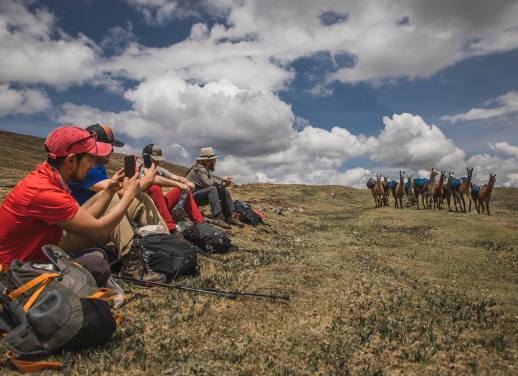
Amber Dunlap
Amber Dunlap is a digital nomad currently parked in South America, originally from Colorado USA. Between writing in coffee shops (or wherever the wifi proves functional), she’s happiest exploring new places, especially through the local cuisine. She’s traveled to 16 countries already and has no plans of stopping anytime soon. Follow her nomad lifestyle and adventures on Instagram @amber_dun.
You might also like
Best places to travel in march, best places to travel in may, best places to travel in february, best places to travel in april, best places to travel in june, how to secure your inca trail permit the..., best places to travel in july, best places to travel in january, best places to travel in november, best places to travel in october, best places to travel in september.
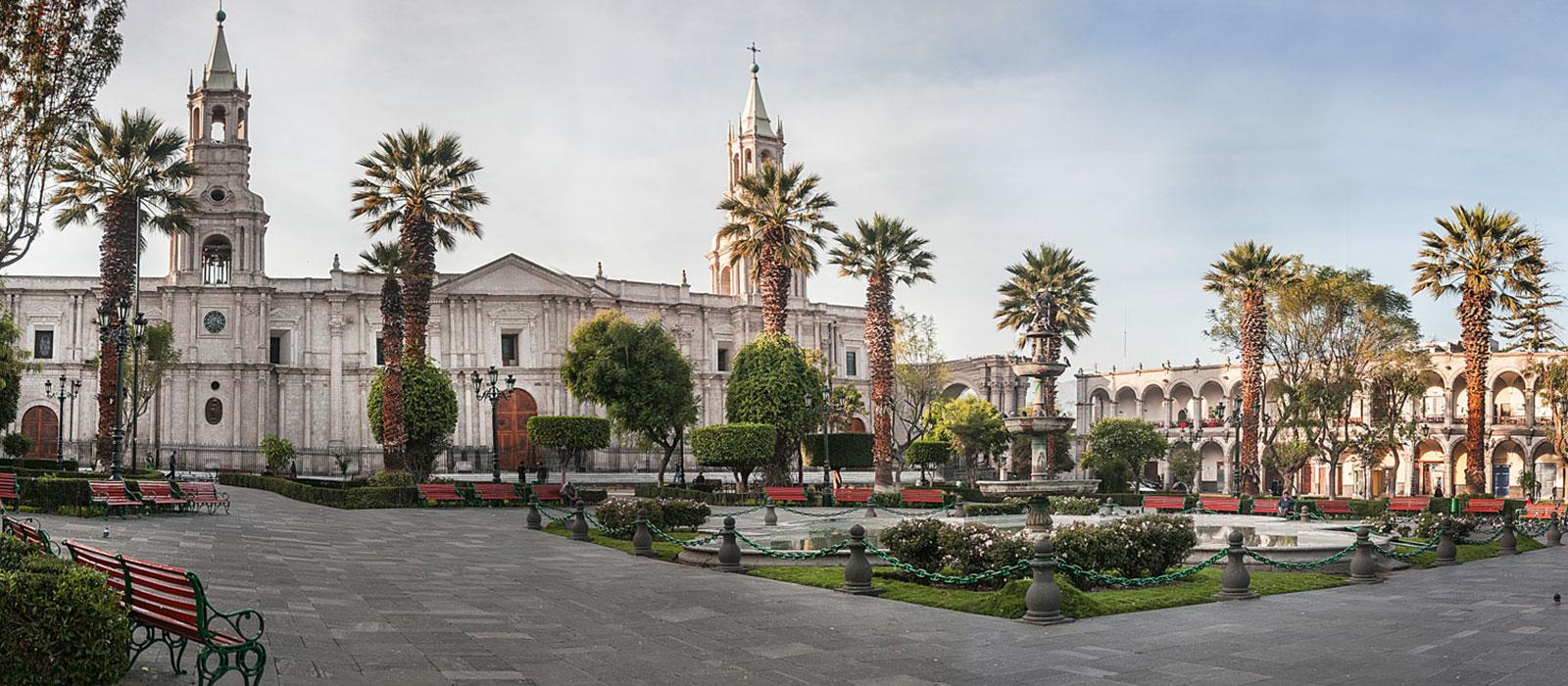
One of the largest cities in Peru, Arequipa boasts striking colonial architecture fashioned from volcanic sillar rock. As a result of the stone’s chalky hue, Arequipa has become known as the ‘White City’, or ‘Ciudad Blanca’. The historic center, which encompasses countless sprawling courtyards and intricate Baroque facades, is recognized as a UNESCO Heritage Site. Set among the exquisite arches of the Plaza de Armas, the Basilica Cathedral is one of Peru’s hidden gems.
Those local to Arequipa, known as Arequipeños, are immensely proud of their unique cultural heritage. The city is particularly renowned for its delectable culinary specialities. Visitors can expect to eat their way around town, stopping at traditional picanterías to sample dishes made from local ingredients.
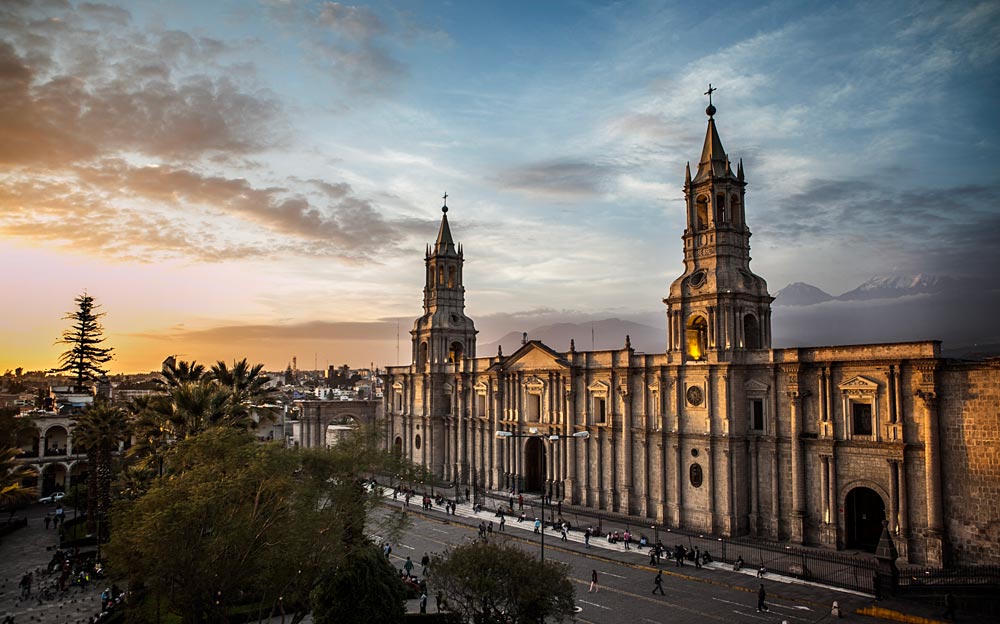
Moreover, Arequipa’s surroundings are as much of a draw as the city itself. Located close to one of the world’s deepest canyons, Colca, travelers flock to the region to revel in nature. There are hiking trails aplenty, as well as opportunities to glimpse vicuñas at the Salinas y Agua Blanca National Reserve. Whether visiting the urban area or the neighboring countryside, Arequipa offers engaging cultural and leisure activities to suit all.
Geography & Population
Located in the south of Peru, Arequipa is surrounded by lush valleys. Streams from nearby mountain peaks help to irrigate the region’s green fields. Over time, the Ocoña and Majes rivers have also eroded the volcanic rock to create deep canyons. Three imposing volcanoes emerge above the plateaus and flank the city. Misti, the tallest of the three with its symmetrical, snow-capped peak has become symbolic of Arequipa. It even features on the region\'s flag.
Arequipa is the second largest city in Peru, behind Lima . It has an urban population of around 1 million inhabitants.
Arequipa is the perfect intermediate stop after Lima and before heading to higher elevations. Other destinations in the Andes, such as Cusco and Lake Titicaca , are at a much higher elevation. Arequipa is located at 7,700 ft (2,340 m) — 3,000 ft (1,000 m) less than Cusco or Puno. Few travelers experience altitude sickness here, and visitors can take time to acclimate if coming from sea level.
Be aware that the road between Arequipa and Colca Canyon reaches elevations of 13,100 ft (4,000 m). You will notice the higher elevation if you try any strenuous activity, such as hiking. Chivay and other Colca Canyon villages are at about the same elevation as Cusco, 11,150 ft (3,400 m).
- Plaza de Armas: 7,700 ft (2,340 m)
- Misti Volcano summit: 19,101 ft (5,822 m)
- Chivay, Colca Canyon: 11,150 ft (3,400 m)
- Road from Arequipa to Colca Canyon (Patapampa Pass): 12,000 ft (4,000 m)
Climate & Weather
The Arequipa region is situated on the tip of the Atacama Desert. Its climate is thus characterized by year-round sunshine and relatively low rainfall. Elevations vary from 7,000 ft in the city, to 20,000 ft and above in the surrounding canyons. When traversing these highlands, visitors can expect warm days and significantly cooler nights. High winds are also common in more mountainous areas.
From April to November
- Average daytime temperature: 71- 76°F (21-24°C)
- Average nighttime temperature: 41-45°F (5-7°C)
Dry season brings abundant sunshine during the day, but colder nights. Arequipa experiences an average of 300 sunny days a year. July is the coldest month and temperatures can drop to a chilly 41°F (5°C).
From December to March
- Average daytime temperature: 70- 76°F (20-24°C)
- Average nighttime temperature: 45-47°F (7-8.5°C)
Visitors can expect fair weather and sunshine throughout most of the wet season. Afternoons during this time are usually cloudy with light rainfall. February is the exception, when heavy rains are likely.
Best Time to Visit Arequipa
Like much of Peru, the city of Arequipa is a year round destination. The weather is most pleasant between April and November, when you will experience blue skies and sunshine. Sun protection is a must due to the high elevation, so make sure to bring a hat and sunscreen! If you want to miss the crowds, be aware that the peak time for tourists is from July to August.
If you are planning to visit Colca Canyon, plan your trip between May and November. You can expect little rainfall and mild temperatures. During these months, you will also have a good chance of glimpsing the magnificent Andean Condor. February should be avoided, as heavy rains can disrupt flights and limit hiking opportunities.
How to Get To
The Arequipa airport is called the Manuel Ballon International Airport (airport code: AQP). There are regular connecting flights to Arequipa from Lima, Juliaca (for Puno and Lake Titicaca), and Cusco. The airport is 5.5 miles (8 km) from the historic center of Arequipa.
Flight durations:
- Flights from Lima to Arequipa: 1.5 hours non-stop
- Flights from Cusco to Arequipa: 1 hour non-stop
If arriving by air, an English-speaking representative from Inca Expert Travel will be waiting for you. Look for your representative outside the baggage claim area holding a sign with your name on it. If you arrange your own transportation, we recommend using one of the licensed taxi companies inside the airport.
Arequipa has 2 major bus stations, Terminal Terrestre and Terminal Terrapuerto. They are adjacent to one another, 2.4 miles (3.8 km) from the historic center. For long distance travel between Arequipa and Cusco, Puno, or Lima, the best option is a non-stop overnight route. The most reputable companies are Cruz del Sur, Oltursa, and Excluciva.
Popular inbound bus routes to Arequipa:
- Bus from Lima to Arequipa: 16 to 18 hours total
- Bus from Cusco to Arequipa: approximately 10 hours total
- Bus from Ica to Arequipa: approximately 11 hours total
- Bus from Nazca to Arequipa: approximately 10 hours total
Popular outbound bus routes from Arequipa
- Bus from Arequipa to Puno (Lake Titicaca): 6.5 hours total
- Bus from Arequipa to Chivay (Colca Canyon): 3 hours total
It is possible to travel by train between Cusco, Puno, and Arequipa. The Belmond Andean Explorer train travels along one of the highest elevation train routes in the world. Starting in Cusco, the train journeys first to Puno (Lake Titicaca) and then to Arequipa on one and two-night trips. You can also do this journey in reverse, from Arequipa to Cusco.
There is no train route from Lima to Arequipa.
Getting from Arequipa to Colca Canyon
A three hour drive will take you 100 miles (160 km) from Arequipa to Chivay, the gateway to Colca Canyon. The most convenient option for most visitors is to book a Colca Canyon tour including private roundtrip van transport. This scenic journey passes through La Reserva Nacional de Salinas y Aguada Blanca. The protected reserve encompasses sprawling grass plains, volcanoes, lagoons, and wetlands. Along the way you may well spot herds of wild vicuña or a flamboyance of flamingos.
Car rental in Arequipa is not advised unless the driver has experience driving in Peru and on mountainous terrain.
Arequipa is among Peru’s most historical cities. Early inhabitants of the fertile lands surrounding modern day Arequipa settled around 900 AD. The Aymara indigenous people set up an agrarian economy in the lush valley. This pre-Inca civilization relied on the River Chili to irrigate agricultural terraces. Historians believe that the name Arequipa may be derived from the Aymara words \'ari’, meaning sharp, and ‘qhipaya’, meaning behind. The name would thus seem to describe the city’s location, behind El Misti’s angular peak.
In the 1400s the Inca Empire took control of these territories. It was around this time that Inca priests sacrificed “Juanita” atop Mount Ampato. The Ice Maiden remained mummified in glacial ice until the eruption of a neighbouring volcano in 1995.
In 1540, Garcí Manuel de Carbajal, a Spanish settler, refounded the city of Arequipa. The Fiesta de Arequipa, celebrated on August 15th, commemorates this event. Some 20,000 visitors descend on the city to watch colorful parades and firework displays.
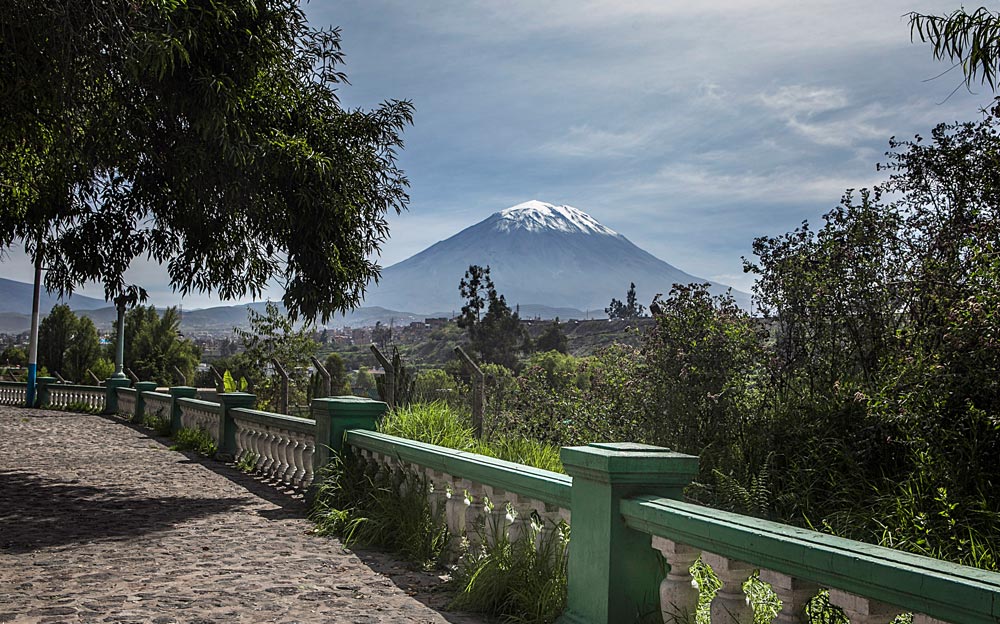
After the Spanish conquest, Arequipa developed as a religious and economic center. The city’s involvement in the silver trade allowed its citizens to grow wealthy. Affluent Arequipeños funded the construction of new buildings. Decorative churches, labyrinthine monasteries, and private casonas sprung up throughout the city. These sophisticated buildings were made from the abundant white sillar stone. Arequipa thus became known as Peru’s “White City.”
In the period after independence, Arequipa’s economic prosperity continued. From the late 1800s onwards, the city became home to an active political scene. Many Arequipeños led liberal uprisings and coups against the central government in Lima. This fed into a strong sense of regional identity that continues into the present.
The Historic Center of Arequipa earned UNESCO World Heritage Site recognition in 2000. The organization noted how the city\'s distinct character evolved as a result of natural consequences. Arequipa\'s robust, white rock buildings were constructed in response to earthquakes in the region. Although natural disasters levelled some buildings, repairs have always been made with the original design in mind.
Today, Arequipa is the second most populous city in Peru. It is also the most economically prosperous city in the southern Peruvian Andes.
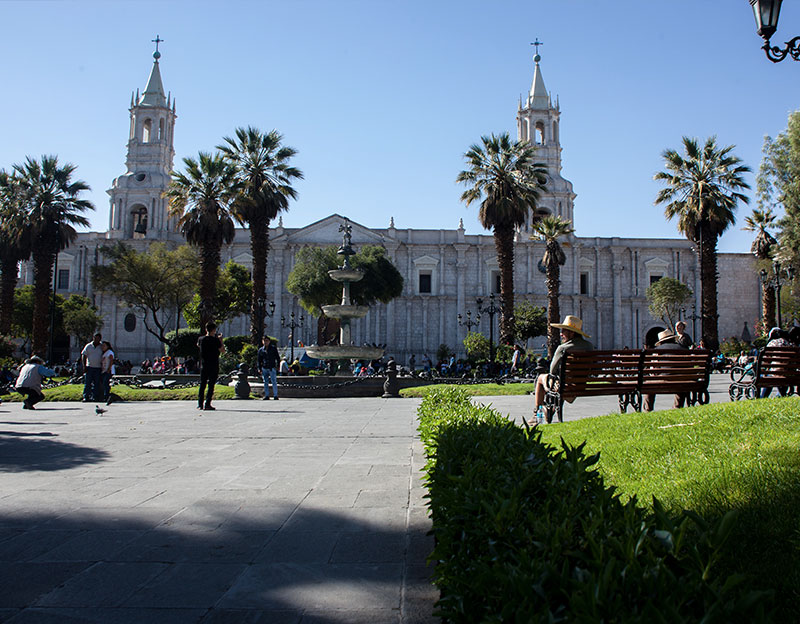
Plaza de Armas de Arequipa
A visit to the beautiful Plaza de Armas tops the list of the best things to do in Arequipa. The Basilica Cathedral, the widest in Peru, is its eye-catching centerpiece. Built from sillar rock, the cathedral\'s two towers soar above the square. Another architectural delight is the Paseo Portal de San Agustin, an elegant, arched passageway that skirts the square. Make a wish at the Tuturutu fountain, or grab a snack from one of the cafes on the plaza’s edge.

Basilica Cathedral of Arequipa
The construction of the Basilica Cathedral (Catedral de Arequipa in Spanish) began in 1544. Although seismic tremors have periodically damaged the building, restoration works have managed to retain its grandeur. Stone masons most recently renovated the cathedral’s towers after an earthquake damaged them in 2001. Inside you will find an immense Belgian organ, the largest to ever cross the Atlantic Ocean. During your tour, climb to the cathedral\'s rooftop and appreciate the Plaza de Armas from the imposing bell towers.

Santa Catalina Monastery
Get lost in the charming passageways of Arequipa\'s Santa Catalina Monastery (Monasterio de Santa Catalina Arequipa in Spanish). Once home to 500 nuns, this sprawling convent is steeped in history. Brightly painted walls, engraved with the poetry of notable writers, provide the perfect backdrop for photos. Meander through elegant arches, cloisters, and cells while listening to your guide’s tales of the past.

Jesuit Church
The Iglesia de la Compañía de Jesús is located on the southeast corner of the Plaza de Armas. Although small in comparison to the neighbouring Arequipa Cathedral, it is definitely worth visiting. The church\'s stone entrance is intricately carved in the Spanish churrigueresque style. It also features a traditional gold-leaf altar and contrasting Andean murals.

Museo Santuarios Andinos
Pay a visit to this archaeological museum, home to Juanita, the famous Ice Maiden Mummy. In the 1450s Inca priests sacrificed Juanita in an attempt to placate the gods in return for water. Anthropologist Johan Reinhard discovered her remains atop Mount Ampato in 1995. University students versed in local history lead tours of the museum in English, Spanish, and French. Between January and April, bioarchaeologists remove Juanita’s remains and place them in deep freeze for conservation purposes.

Casa del Moral
Transport yourself to Arequipa’s golden age with a visit to an 18th century mansion. This casona is named after the mulberry tree (‘arbol de moras’) in its courtyard. The oldest existing Baroque building in the city, its intricate facade features various Andean animals, such as the puma. Marvel at antique furnishings, alpaca rugs, and a collection of religious paintings.

Mirador Yanahuara
Venture a small way out of the center to enjoy the views at Mirador Yanahuara. Located in a neighborhood bearing the same name, this viewpoint sits next to the Baroque San Juan de Yanahuara church. Use the terrace’s white stone arches as frames for photos of the historic town and the Misti volcano beyond.

Museum of Contemporary Art
Enjoy a mix of local and international art at this charming museum. Housed in a restored casona dating back to the 1540s, the collection features 9 permanent and 4 temporary exhibitions. Works include paintings in a variety of mediums, as well as sculptures and cartoons. You will also find black and white photographs by Carlos and Miguel Vargas. Born in Arequipa in the 1880s, the brothers are famed for fabricating their own camera at the age of 13.
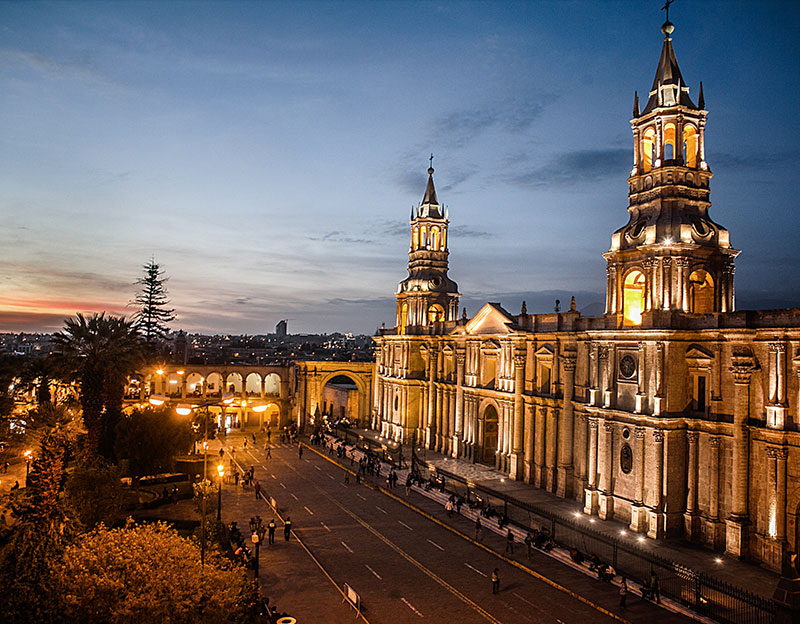
Tour the Historic Center
Admire the radiant stone architecture of monumental buildings throughout the UNESCO protected center. Historic Arequipa tours often visit the Plaza de Armas, the Basilica Cathedral, and the nearby San Camilo Market. Other stops include the Santa Catalina Monastery and Yanahuara viewpoint. The Ruta del Sillar, a striking sillar quarry in the Cerro Colorado district, may also be added to the itinerary.

Eat Arequipa Cuisine
Peru is renowned as a food lover’s paradise, and Arequipa’s culinary offering does not disappoint. Head to a traditional picantería to try well-loved local dishes. Alternatively, visit one of the city’s many fusion restaurants for a taste of something new. Either way, it will be easy to spend your stay eating your way around the city.

Volcano Trek
The city of Arequipa is nestled between three of the most famous Peruvian volcanoes. Located along one of the tectonic plates that created the Andes, there are plenty of peaks to scale nearby. Providers offer a variety of hikes, lasting one to three days.
Climbing the iconic Misti volcano is a favorite with experienced mountaineers. Although not technically challenging, the dizzying elevation of 19,101 ft (5,822 m) makes this a tricky ascent. Plan your climbing trip between July and September for optimum conditions.

Mountain Biking
Adventurous and altitude ready? Book an adrenaline-packed downhill biking tour. Routes start at the Misti or Chachani volcano and descend to Arequipa. Full day biking tours offer an opportunity to enjoy beautiful views from the Andes. Biking equipment is usually included, but it is advisable to bring sun protection, water, and snacks.
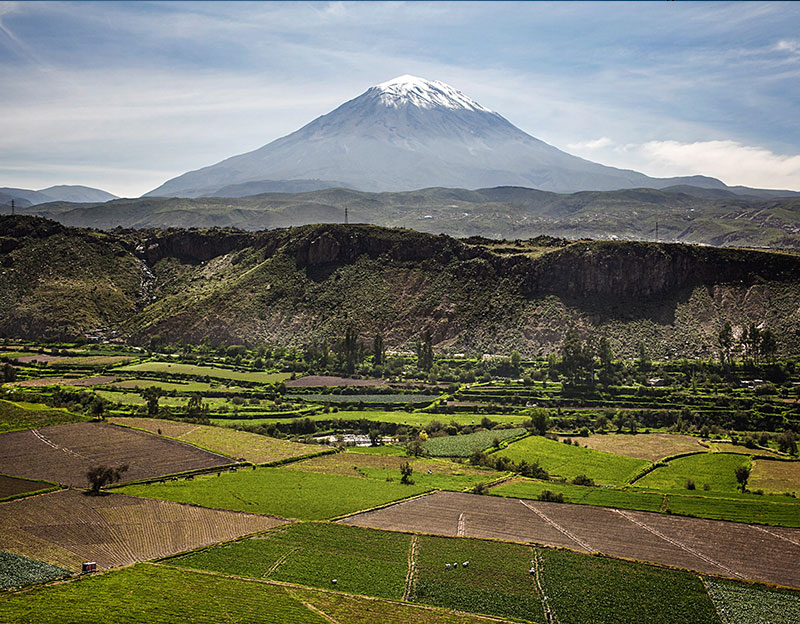
Visit the Countryside
A trip to the countryside gives you a taste of what life was like for Arequipa’s colonial elite. On top of their casonas inside the city, wealthy families also built luxurious country residences in the surrounding valleys. Journey 20 minutes outside of Arequipa to visit Molino de Sabandia, a meticulously preserved water mill. Another key site is La Mansion del Fundador, an estate once owned by Arequipa\'s founder Garcí Manuel de Carvajal.

Visit Reserva Nacional de Salinas y Aguada Blanca
One of the region\'s hidden gems, the National Reserve encompasses a diverse range of natural environments. Experience wetlands, desert-like plains, expansive grasslands, and salt flats within. You can also expect to glimpse a range of camelids and flamingos.
The journey from Arequipa to Colca Canyon will take you through the Salinas and Aguada Blanca National Reserve. Tours departing from Arequipa head northeast through the reserve, with a stop at Pampa Cañahuas. Here, visitors can observe wild vicuñas and enjoy vistas of the Misti and Chachani volcanoes.

Visit Colca Canyon
Tap into your sense of adventure and escape the city for Colca. A 3-hour drive from Arequipa, the world\'s second deepest canyon boasts soaring peaks and bottomless valleys. A highlight of any trip is a visit to the Cruz del Condor viewing platform. Here, cflex flex-wrap -mx-4ds gather to glimpse majestic Andean Condors in flight. There is also plenty of opportunity for relaxation at one of Colca\'s many hot springs. Take a look at our preferred Colca Canyon hotels .
Visit Cotahuasi Canyon
Slicing 11,003 ft (3,354 m) into the ground, Cotahuasi is the world\'s deepest canyon. While nearby Colca Canyon steals much of the limelight, Cotahuasi offers striking landscapes. The plunging ravine stretches for 63 miles (100 km) and lies in the shadow of the Coropuna and Solimana peaks. Trekking opportunities are plentiful, and many rural communities remain untouched by tourists.
Lying 125 miles (200 km) northwest of Arequipa, Cotahuasi takes some effort to reach. But adventurers who make the journey will be rewarded with an unrivaled experience.
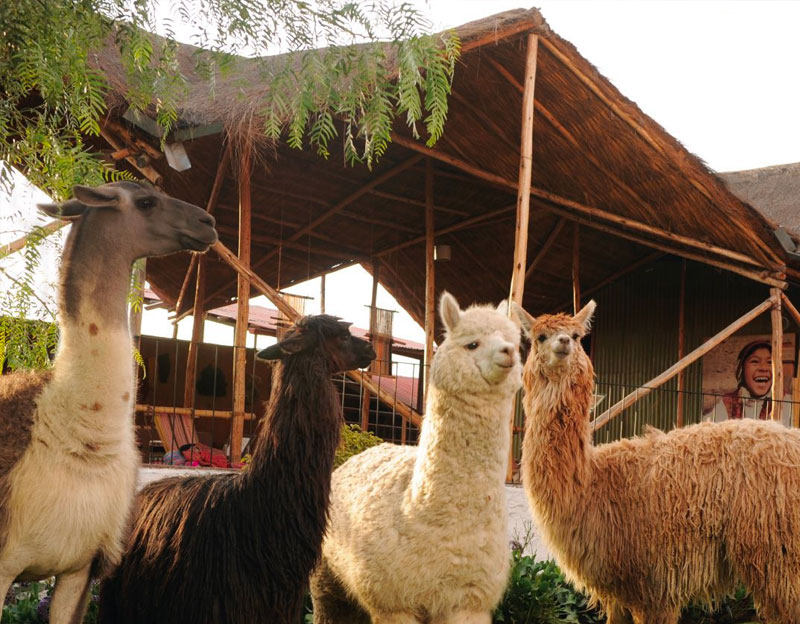
Buy Alpaca Goods at Mundo Alpaca
Spend a day with Peru\'s most famous inhabitants at Mundo Alpaca. Not only will you interact with adorable adult and baby alpacas, but you will also learn about their wool. Enjoy live demonstrations of age-old shearing, weaving, and dyeing processes. To finish up, visit the onsite textile museum and art gallery and bflex flex-wrap -mx-4se woven goods at the boutique outlet.

Eco Tours Arequipa
It is possible to organize eco tours in the Arequipa region. Activities include environmentally conscious excursions of varying lengths to Colca Canyon. Another option for adventurers is white water rafting on the Chili River.
Tour Packages
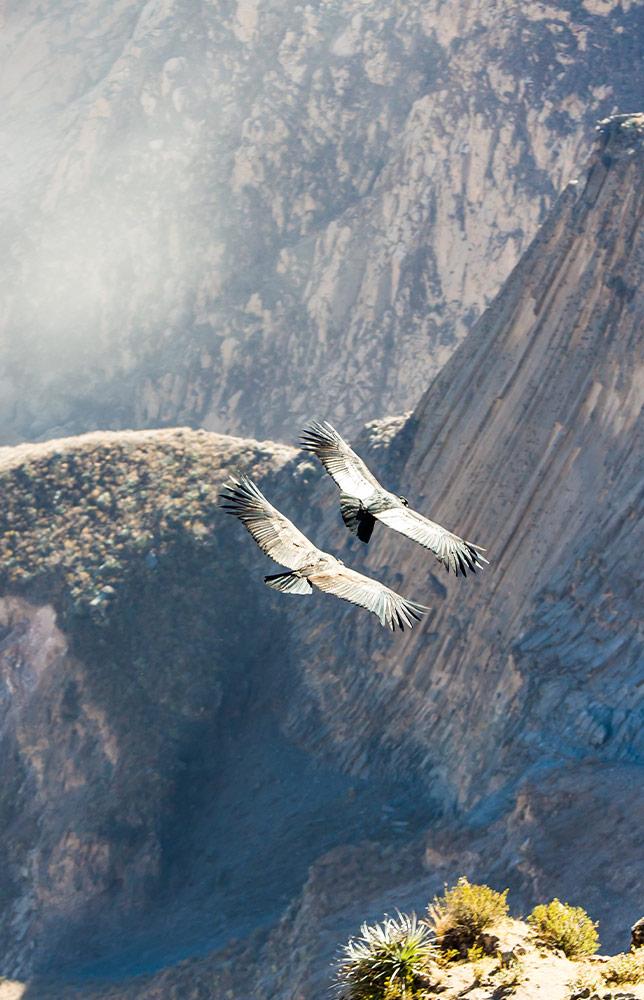
Colca Canyon & Machu Picchu
Arequipa, Cusco, Lima, Machu Picchu
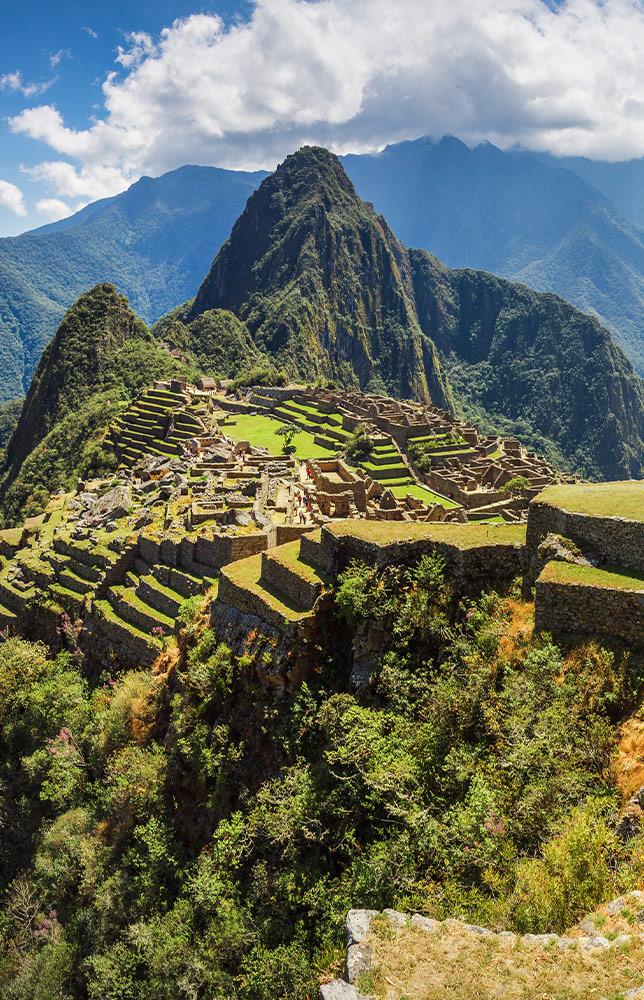
Andean Highlights
Cusco, Lima, Machu Picchu, Puno & Lake Titicaca, Sacred Valley, Arequipa, Colca Canyon
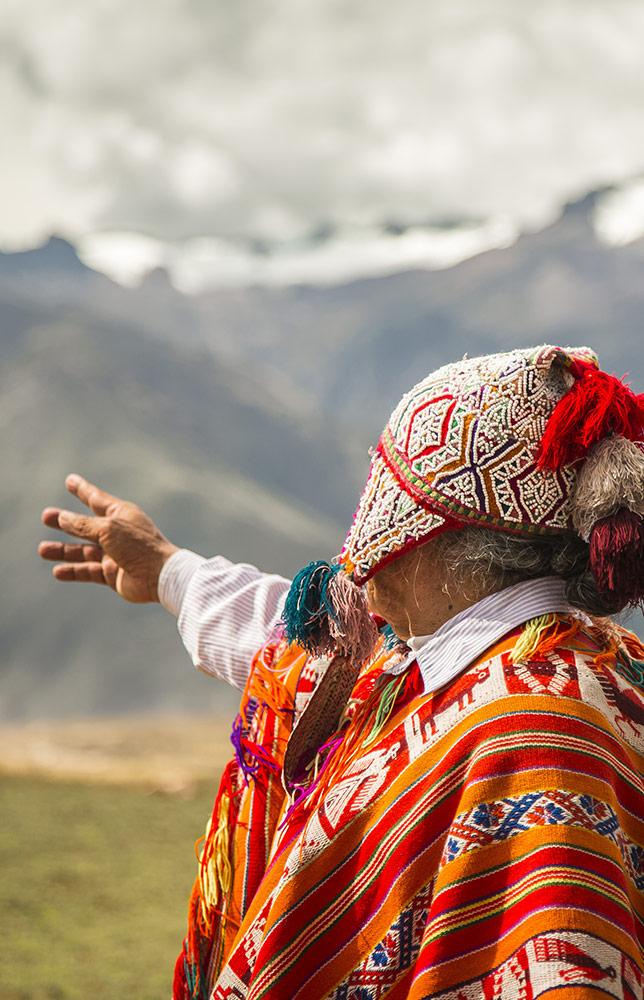
Historical Peru
Arequipa, Cusco, Lima, Machu Picchu, Sacred Valley, Colca Canyon, Paracas
Cultural Events
February/march, moving date: carnaval de arequipa, arequipa city and mejía.
During February and March Arequipeños celebrate the vibrant festival of Carnaval. Revelers from all over Peru flock to various events in the city. Visitors marvel at the brightly adorned dancers and colorful parades that march through the streets. Participants from various neighborhoods and villages create their own floats, each one representing a unique folkloric tradition.
One particularly famous event is Caperos, a party that takes place in the beach town of Mejía. Families from all over Arequipa attend, and different generations celebrate together. Party-goers wear playful costumes and enjoy throwing colorful powders at one another. Tourists are always welcome to join in this celebration of Arequipa\'s distinct history and culture.
August 15th: Aniversario de Arequipa, Arequipa city
Celebrated on August 15th, the Aniversario de Arequipa commemorates the re-founding of the city by Spanish settlers in 1540. In the fortnight preceding the anniversary, locals participate in traditional dances, beauty pageants, and climbing competitions on Misti volcano. The highlight of the celebrations is the annual fireworks show, which takes place on the 14th. Crowds gather in the stunning Plaza de Armas to wonder at the colorful illuminations.
May 1st: Feast of the Virgin of Chapi, Chapi
In May, pilgrims from all over Peru and the continent travel to the town of Chapi in Arequipa Province. They gather to sing, chant, and pray to the Virgin of Purification. The most devout walk 28 miles (45 km) from Arequipa city to Chapi barefoot, carrying candles and walking staff. The following day the Virgin is born aloft through the streets of Chapi. Locals shower her with flower petals and later enjoy a spectacular firework display.
Hotels in Arequipa offer a mix of charming colonial architecture and modern facilities. Expect white sillar facades, rooftop terraces, and king size beds. Located close to the historic center, our top picks provide the perfect base to explore the city from.
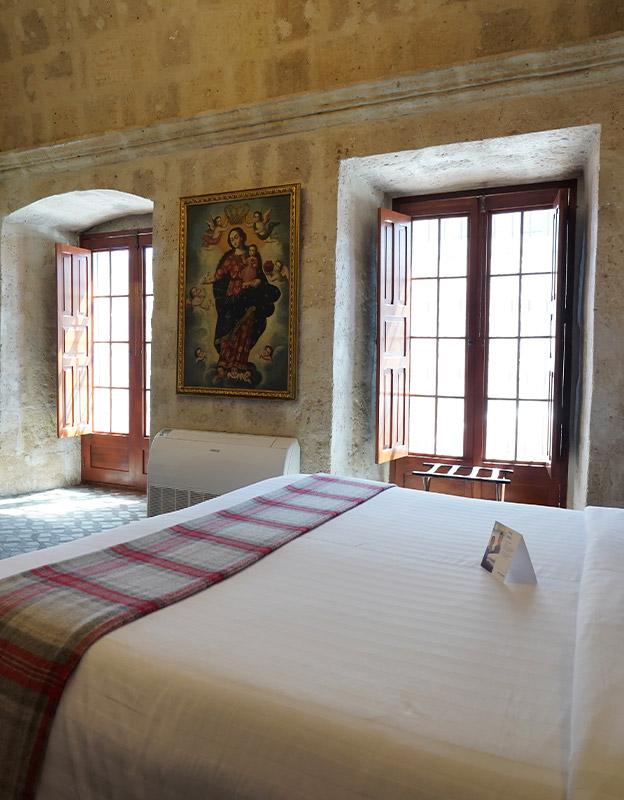
Calle Ugarte 403, Arequipa
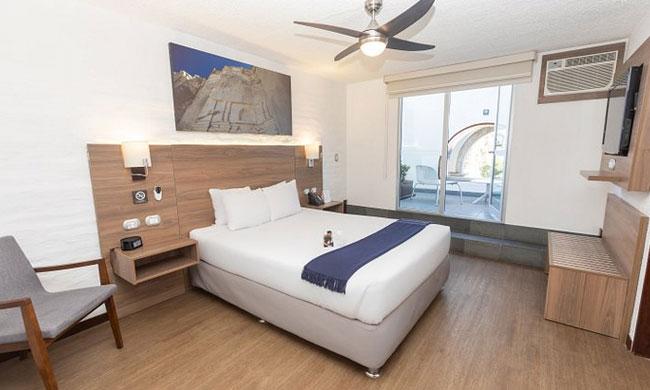
Portal de Flores 116, Plaza de Armas, Arequipa
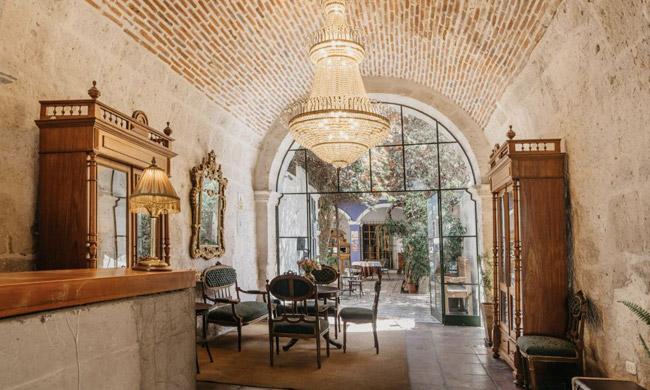
Calle Bolivar 405, Arequipa

Restaurants
To sample traditional Arequipa food, head to a picantería restaurant where you can select from 2 or 3 dishes. Bring your appetite as serving sizes are generous. Be aware that the word picantería derives from the Spanish word “picante,” meaning “spicy.” A little heat is a key characteristic of Arequipa cooking! Besides traditional restaurants, you’ll also find stand out international and fusion cuisine.
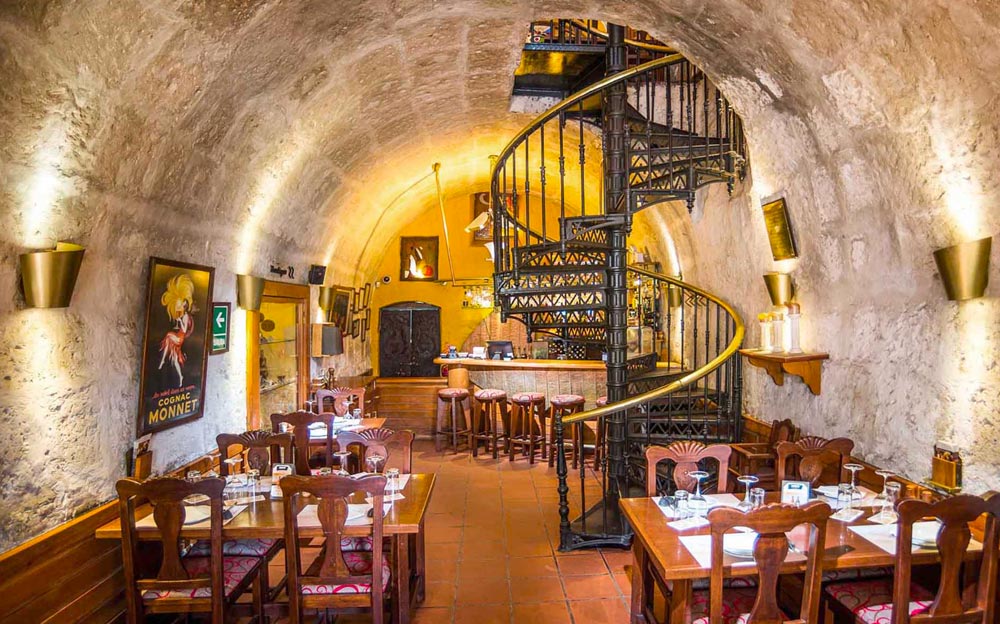
El Sol de Mayo Restaurant
La nueva palomino picanteria, zig zag arequipa, chicha arequipa, la plaza bar & grill, las gringas pizzería, travel info, how to get around.
You can easily explore the historic center of Arequipa by foot. For longer distances, such as to the miradores or countryside, your Travel Advisor can arrange transfers in advance. You can also ask your hotel concierge to arrange transfers for you. For your own safety and peace of mind, do not hail a taxi from the street.
In Arequipa, the same advice holds true as it does for any new city you visit.
Keep valuables at your hotel. Stow money under your clothes in a zippered container and wear backpacks on your front when in crowded areas. Common sense goes a long way to avoid potential incidents, like petty theft. In the historic center, you will see a visible police presence. Don’t hesitate to let them know if you need assistance.
ATMs and casas de cambio (currency exchange offices) are available on the Plaza de Armas and surrounding streets. If withdrawing money from an ATM, it’s best to use a machine that is attached to a bank. Some machines will give you the option to withdraw in Soles (the local currency) or US dollars.
A few hotels, restaurants, and expensive shops in Arequipa accept credit cards. Be aware that many others don’t. For purchases in small amounts, it is best to pay in cash. Bear in mind that many smaller establishments may not have change for large bills. Try to reserve smaller bills and coins to spend in these instances. Keep note of emergency numbers for all credit or debit cards in case of loss or theft.
Trip Extensions
Arequipa is located on the popular southern route through Peru.
Many travelers choose the overland route from Arequipa to Colca Canyon and onward to Lake Titicaca (or vice versa). This allows them an extended look at truly breathtaking Andean landscapes. The journey can be made by bus, and often includes a tour of historical sites along the way.
Peru Rail has a great option geared toward high-end travelers: the Andean Explorer luxury sleeper train. This route connects Arequipa, Lake Titicaca, and Cusco. Inquire for details.
What to pack
- Sunscreen, sunglasses, and hat
- Light layers:t-shirts, zip-off shorts
- Warm layers:long-sleeve t-shirts, fleece jacket, hat, outer jacket or coat
- Hiking boots or athletic shoes
- Woolen hiking socks
- Reusable water bottle
- Power adapter/ converter
- Personal medications and altitude medication (as advised by a doctor)
Travel Tips
- Be aware of your surroundings at all times and keep valuables stowed in zip lock bags.
- Wear backpacks on your front when in busy areas.
- Do not drink water from the tap. Make sure to only drink the water provided by your hotel and purchase bottled water for excursions.
- When exchanging money ask for smaller denominations of the local currency (Nuevo Sol, PEN). Many establishments do not accept debit or credit cards and larger notes.
- It is customary to tip around 10 percent of the bill if you order food. A tip of 1 to 2 Soles is sufficient when ordering a drink.
- Check with your doctor before traveling if you wish to use prescription or over-counter medication for altitude sickness.
- Be sure to plan your trip ahead of time. Many accommodations become fully-booked during the high season (July to August).
- Do not hail a taxi from the street. Ask at your hotel reception if you wish to order a taxi.
What is there to do in Arequipa?
Arequipa boasts charming colonial architecture and delicious local dishes. Architectural highlights include the Santa Catalina Monastery, Basilica Cathedral, and Plaza de Armas. The Museo Santuarios Andinos and Museum of Contemporary Art are also highly recommended. Those with more time to spend in the area should visit the surrounding countryside to see vast country estates, such as La Mansion del Fundador.
How many days should I spend in Arequipa?
1 to 2 days is ample time to visit Arequipa\'s highlights. If you have longer, it is possible to spend up to a week visiting museums and trying the city’s cuisine .
To venture to Colca or Cotahuasi, you will need to add 1 to 3 days to your trip.
When is the best time to visit Arequipa?
The best time to visit Arequipa is between April and November. During these months you can expect mild temperatures and little rain. The busiest time is between July and August.
How far is Arequipa from ___ by bus?
- Bus from Cusco to Arequipa: 10 hours total
Are there direct flights to and from Arequipa?
Direct domestic flights are available from Arequipa to Lima, the capital of Peru, and Cusco city (and vice versa).
- Lima to Arequipa flights: 1.5 hours non-stop
- Cusco to Arequipa flights: 1 hour non-stop
Where should I eat in Arequipa?
Travelers wishing to try authentic local dishes should head to a traditional picantería. La Nueva Palomino Picanteria and El Sol de Mayo Restaurant are among the city’s most loved. For a more modern twist on local favourites, Gaston Acurio’s Chicha is a popular choice.
Find a comprehensive guide to Arequipa’s best restaurants here .
Where is Arequipa?
Arequipa is one of the biggest cities in Peru and is located in the south of the country.
The Arequipa region's longest border is with the Pacific Ocean on Peru's desert coast. It also shares borders with Ica, Ayacucho, Cusco, Apurímac, Puno, and Moquegua regions.
What does Arequipa mean?
The name ‘Arequipa’ is derived from the Aymara language. It is widely believed to mean ‘behind the peak’, referring to the nearby Misti volcano.
When is the best time to visit Colca Canyon?
The most popular time to visit Colca Canyon is from May to November. You can expect mild temperatures and little rainfall. The area’s picturesque agricultural terraces spring to life in April, making this another great month to visit.
What is the elevation of Colca Canyon?
Colca Canyon lies at a higher elevation than Arequipa. Chivay, the gateway to Colca, sits at around 12,000 ft (3,600 m).
Which Colca Canyon trek should I do?
A Colca Canyon trek can be a great alternative to the more expensive and crowded Inca Trail. Most visitors choose to hike from Cabanconde to the oasis resort of Sangalle. The sloped trail is uncompromising from both ends, but most lodges in Sangalle offer mules for hire.
Featured Blog Articles
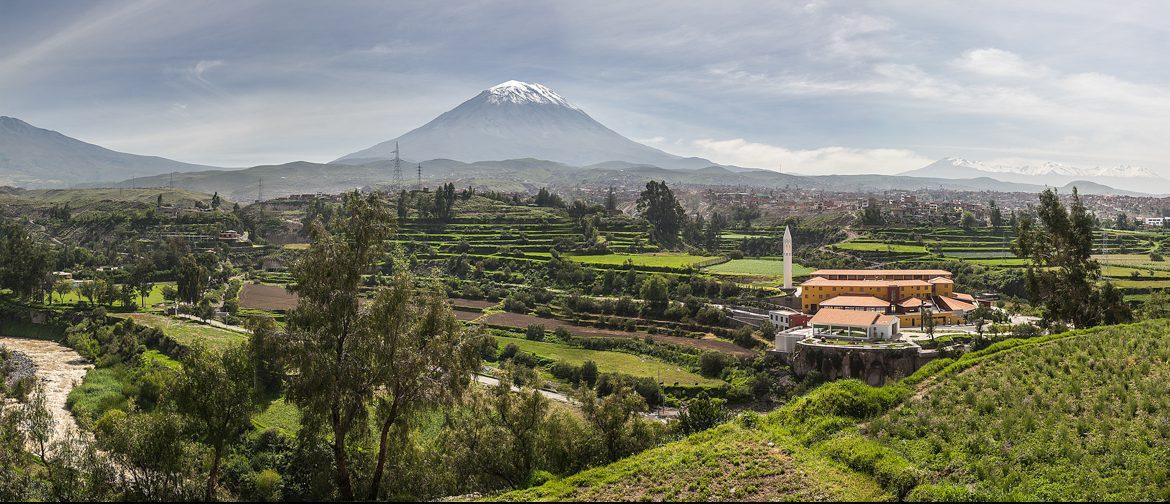
Discovering Arequipa one bite at a time: Part 1
Arequipa is a true traveler’s paradise. Cobblestoned streets, fairytale architecture, and the looming presence of Misti Volcano all make for fantastic photographs.
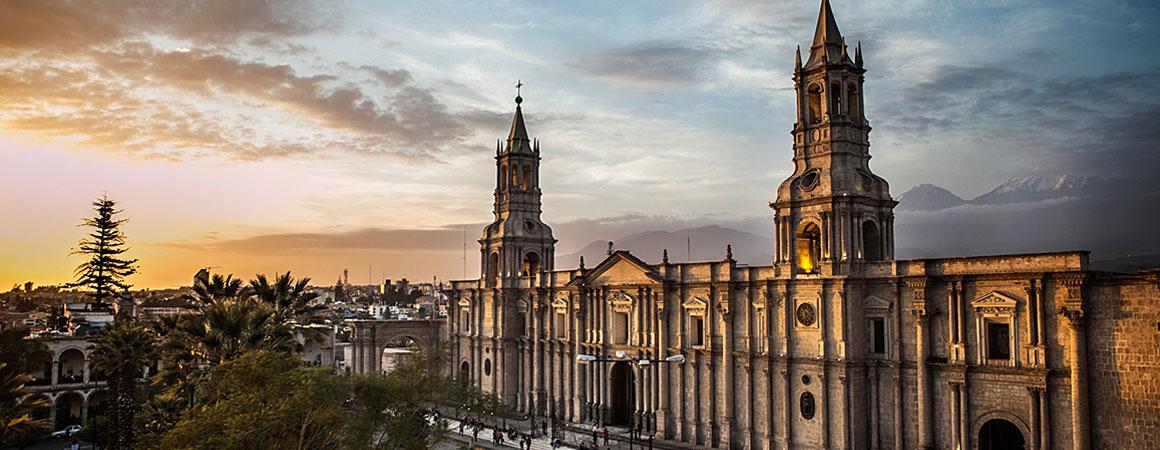
Discovering Arequipa one bite at a time: Part 2
Where to find the perfect meal in Arequipa? That’s the topic of this week’s post.
Book with confidence
Postpone your tour with zero cost up to 30 days prior to arrival with open dates
- 1 Understand
- 2.1 By plane
- 2.3 By train
- 3.1 By foot
- 3.2 By taxi
- 5.1 Adventure
- 6.1 Spanish language
- 6.2 Cooking lessons
- 8.2 Mid-range
- 8.3 Splurge
- 10.1 Budget
- 10.2 Mid-range
- 10.3 Splurge
- 11 Stay safe
- 13.1 Nearby
- 13.2 Further away
<a href=\"https://tools.wmflabs.org/wikivoyage/w/poi2gpx.php?print=gpx&lang=en&name=Arequipa\" title=\"Download GPX file for this article\" data-parsoid=\"{}\"><img alt=\"Download GPX file for this article\" resource=\"./File:GPX_Document_rev3-20x20.png\" src=\"//upload.wikimedia.org/wikipedia/commons/f/f7/GPX_Document_rev3-20x20.png\" decoding=\"async\" data-file-width=\"20\" data-file-height=\"20\" data-file-type=\"bitmap\" height=\"20\" width=\"20\" class=\"mw-file-element\" data-parsoid='{\"a\":{\"resource\":\"./File:GPX_Document_rev3-20x20.png\",\"height\":\"20\",\"width\":\"20\"},\"sa\":{\"resource\":\"File:GPX Document rev3-20x20.png\"}}'/></a></span>"}'/>
Arequipa is a city in the Southern Coastal region of Peru just below the edge of the Altiplano , at 2,380 m (7,810 ft) above sea level and surrounded by three impressive volcanoes. It's Peru's second most important city (after Lima ), and the second most popular among tourists (after Cusco ).

The city is part of the so-called "Southern Peru Tourist Corridor", together with Nazca , Puno and Cusco . In contrast to these other cities, Arequipa is an example of the Spanish and mestizo culture developed in Peru. There are no Inca artifacts or ruins in the city.
In the winter it is warmer than in the summer. It is nicknamed the 'white city' ( la ciudad blanca , in Spanish), because many of the buildings in the area are built of sillar , a white stone. This rock was quarried from the many volcanoes that surround the city, including the towering El Misti . Ask for local help to identify Misti, Chachani and PichuPichu, the three volcanoes surrounding the city.
Arequipa embodies a rich mix of the indigenous and Spanish colonial cultures. With almost 500 years of history since its founding, examples of Spanish colonial architecture can be found throughout the center of the city and several surrounding districts; UNESCO has declared it a World Heritage site . Catholic churches are scattered throughout the center of the city. Some old houses have been refurbished by the local authorities and serve as living museums. An example of this are the so-called "Tambos" located at Puente Bolognesi Street.

By far the easiest way to get to Arequipa is by plane,
- Latam (Lima, Cusco)
- JetSmart (Lima, Cusco)
- Sky Peru (Lima)
A taxi from the airport to the Plaza de Armas costs a flat-rate of S/25 ( soles ). Signs are posted with this rate, but depending on the size of the car, the size of your bags and your bargaining skills you could pay less. No public transportation is available to/from the airport.
There are two terminals serving the city, Terminal Terrestre and Terminal Terrapuerto. They're next to each other, about 3 km (1.9 mi) from the center. A taxi should cost around S/8.
Try to avoid cheap buses — the more you pay, the higher the quality of service, and safety. Some of the more reputable companies are Cruz del Sur, Ormeño, Excluciva (full 180º beds with meals served, S/130 ), Oltursa and Cromotex (S/70 to Lima, good value and security), Flores (a good budget option, but only with their "super dorado" and similar services, their economic is best to be avoided for safety reasons (high accident rate). Their station is across the street from Terminal Terrestre.) If you take the night bus make sure the bus is air-conditioned. There are cheap companies like Julsa which don't heat their buses, meaning the temperature can sink close to 0°C, and some don't have bathrooms. Compare prices between booking online, in the office or via an agency since it can vary up to 100% for exactly the same seat and service.
From Lima (S/30-130, 16–18 hours) it's advisable to take non-stop express buses — though more expensive, they tend to be safer. Oltursa and Excluciva buses depart from dedicated VIP terminals in the San Isidrio area of Lima.
Peru Hop offers buses to Arequipa, as well. Unlike other buses that provide a direct service with nothing to see along the way, Peru Hop bus passes include stops where you can choose to hop off along the way to Arequipa. Their stops from Lima to Arequipa include Paracas, Huacachina and Nazca. Peru Hop offers free hotel and hostel pick-up and drop-off.
There are several buses per day from Cusco (9 hours, S/30-120), Puno (5–6 hours, S/25-50), Pisco (12–14 hours, S/50-150), Nazca (9 hours, S/50-150) and Tacna (near the border with Chile , 6–8 hours). If you take a Peru Hop bus from Cusco to Arequipa you can choose to hop off in Puno .
La Paz Ormeños has direct buses leaving at 01:00 every day, passing through Puno at 06:00 (S/40) and arriving in La Paz at 12:00 ($60).
Charter trains to Juliaca and Puno are only available for groups of 40 or more.

The city has an urban area that can be explored on foot. The historical center is a 5-block area around the main square and it's very easy to visit following one of the many maps available at the hotels or any information office. Some ancient districts like Yanahuara and Cayma are also within walking distance.
If you want to take a taxi, you should take a "safe one". Rules to recognize them: they have signs on the roof. The more common the sign, the bigger the company and the safer the taxi. Another tip is to take one that has just set down a passenger. Avoid taking taxis that are stationary and obviously waiting for passengers.
Prices are per ride. A ride from the main square to any place in the central district will be S/4-7. A taxi from the bus station to any hotel, S/8. From the airport, the price varies between S/20-30. Some cab drivers try to rip you off by saying prices are per head but price is always per ride for all passengers. Allow for a minor extra charge for luggage (usually half a sol per large piece).
You can rent a car with a driver included and go all around Arequipa for just $6 an hour. There are many taxi companies that can be trusted like Panataxi, Taxitel, Turismo Arequipa and Megataxi. For your safety, if you leave a restaurant or disco late night and want to come back to your hotel in a taxi, ask the restaurant to call a safe taxi.
You can rent a truck at a very low rate including a driver (just US$55 per 8 hours plus diesel expenses), call ☏ +5154 9350539 or email: [email protected], and go ahead and visit Arequipa's outskirts and places such Colca River, Majes, and the beaches at Camana and Mollendo.

Many of the almost 250 colonial buildings named as Human Heritage by UNESCO, are close to the main square. Some have been turned into banks, stores, restaurants and private residences.
Churches are among the most beautiful buildings preserved. They are all Catholic and you can visit them but always with a respectful eye towards the people there who may be worshiping. Most of the population still practices the Catholic religion. La Compañía de Jesús, San Francisco, La Merced and the Cathedral are some of the most famous.
A good place to watch the sunset in Arequipa is from any of the third floor restaurants on the main square. Make sure you arrive a little in advance because there will be others as well. The view of the mountains and the main square is amazing.

- -16.3964 -71.5312 6 Convento de Santa Teresa , Calle Peral . A little off the usual tourist path, in downtown Arequipa. It is not as architecturally interesting as the Convento de Santa Catalina, but some of the paintings and artifacts are stunning.

- -16.39342 -71.54183 15 Monasterio de la Recoleta , Recoleta 117 ( on the western shore of Rio Chili ). The Franciscan monastery was built in 1648, and distinguished by its high bell tower in red and white bricks. Four out of the original seven buildings of the monastery remain today. The monastery has a library with about 20,000 volumes and part of the monastery is a museum with Incan and pre-Incan artifacts from mummies and totems to paintings of emperors. The museum also displays apparel worn by Amazonian natives. ( updated Dec 2019 )
- -16.39685 -71.53676 1 Free Walking Tour (Downtown Arequipa) , Calle Santa Catalina 204 . Tours leave 10:00 & 15:00 M-Su . Around 2½ hrs. Tour is more about presenting the background of Arequipa, how and why it developed into the city it is today, different aspects being presented from different locations (rather than a tour of the major sights). Just turn-up (no booking necessary). Very worthwhile. Free but “Guides work on a Tips only basis” . ( updated Dec 2018 )
- Exquisito Perú , ☏ +51 915155430 , [email protected] . 11 am - 3 pm . Explore Arequipa's ample gastronomy through a walking food tour that takes guests from San Camilo Market to Yanahuara with several stops in between in traditional picanterias and more! A truly immersive experience to get a great overview of the region's delicacies while visiting the city of Arequipa. $59 . ( updated Dec 2022 )

- Ride in Peru - address : Calle San Rafael 0-2 (between house 504 and 534), urb Los Angeles, cercado, Arequipa - phone : 214444 / 974211440 - email : [email protected] - Imagine Peru offers horseback rides and tours in the Colca. They have Peruvian Paso Horses and a lot of different rides to try in these splendid Colca landscapes. Opened to beginners and confirmed riders. Departure everyday.
- Downhill volcano biking - Offered at several levels of difficulty. Half day adventure managed by professional guides. S/70-80. They provide all the required equipment. Very safe. Great countryside views.
- Volcano climbing - Two options: an excursion to Misti or a real climbing to the more difficult Chachani. Two-day tour. The first one with low difficulty level the second one with medium difficulty. Altitude is usually the worst enemy for visitors. Chachani is over 6,000-meter altitude. Book with professional operators. Price around US$90/person.
- Whitewater rafting - Arequipa has some of the best rivers of the world. A typical half-day tour with some 90-min of rafting will cost you about S/70.
- Horse Pa Enrique Tours , Calle Santa Catalina N 308 , ☏ +51 54345948 , +51 54 284796 , [email protected] . Anibal has six horses in the small stable just behind Arequipa. The horses are quite calm and suitable for beginners. First you will be provided with a helmet and some basic instructions. After that you ride 7 km there and 7 km back next to Chili River with great views of volcanoes. At the end you may be asked to help with feeding the horses. S/90 per person .
- Ventura Travel , Ugarte 503/ inside 112 ( pass into a black grille, on your left hand down and look for the number 112 ), ☏ +51 947377201 , [email protected] . Tour operator specializing in custom groups, with wide range of tours and treks in the Colca Canyon area and beyond. ( updated Dec 2018 )
- Perou Voyage Tour Operator , Avenida Los Incas 415-A , ☏ +51 54446944 , [email protected] . Tour operator based in Arequipa specialized in tailor-made and shared tours to the Colca Canyon, Arequipa and Cotahuasi Canyon. ( updated Nov 2018 )
Spanish language
Because of its weather, its friendly people and lower prices when compared to Lima or Cusco, Arequipa is a great place to learn Spanish. Several schools are available, most of them with excellent programs. Classes are usually offered on a per week basis and with accommodation packages included.
- Spanish School Arequipa , ☏ +51 54 213177 .
- EDEAQ . Legally established and recognized by the Peruvian Ministry of Education. City centre location. Swiss management. Bildungsurlaub (Germany). ( updated Dec 2019 )
Cooking lessons
This is an excellent opportunity to share with local cooks and work with them in preparing delicious local cuisine. The experience starts with selecting the products, then preparing and cooking them. After that, you can serve and enjoy the results in the form of a good traditional meal.
- Peruvian Cooking Experience ( 4 blocks from Main Square sharing Casa de Avila Hotel facilities ), ☏ +51 54 213177 . Tuesday, Thursday and Saturday . The cooks are local people who learn cooking from their ancestors, and include Felipe, an Inca cook born in the 1940s who shares his own exclusive recipes. Classes are held in a kitchen and outdoor barbecue area. 6 persons per group. The cooking area is surrounded by a garden. 3-hour hands-on activity suited for travelers of any ability level. Reservations are required. Wine and cocktails can be ordered but are not included in the price.
- Arequipa's Cooking classes , Urb Leon XIII K-1B Av. Trinidad Moran - Cayma ( It's located near to Real Plaza in Cayma-Arequipa ), ☏ +51 973 531 225 , [email protected] . 08:00-11:00, 12:00-15:00, or 16:00-19:00 . Chefs and bartenders will teach you to cook and try Peruvian flavors, drinks and dishes. At the same time, you will learn more information about the most representative Peruvian products such as quinoa, potatoes, chilis, and corn. S/95 per person .

Arequipa is called the world's capital of the alpaca, a wool that comes from these Andean camelids and is considered very fine and valuable. Big factories and several boutiques offer fine products at great prices. A good quality alpaca sweater will be S/70-180 according to colors and designs. Some handicraft stores offer very cheap alpaca, often of a lesser quality.
Most typical handicrafts come from the Chivay area. Colorful embroidery called Maquinaza style, representing daily activities or nature scenes.
There are some interesting shops geared towards tourists, including Patio del Ekeko , free Wi-Fi included. The old Jesuit convent, half a block from the Plaza de Armas, is free to enter and has very good shops for fine Alpaca garments and local products. The place itself is very nice. There is also a square near La Compañía featuring a number of more expensive handicrafts shops.
Arequipa features some of the most varied and flavorful cuisines in the country. Meals are robust with soups as one of their main dishes. Local food is usually served at lunch time but you can also find it in locals for tourists during dinner time. The better restaurants are near the Plaza San Francisco.

Spicy food is very popular. Locals use rocoto ( Capsicum pubescens ) to provide the hot taste to their foods. This flavour is different than the spiciness in Indian or Mexican cuisine. One dish made with this ingredient is rocoto relleno con pastel de papa , a large stuffed pepper with potato pie. Ask beforehand if it has been made for tourists or if it is the original, quite hot, style; if the last one, be careful, it can be extremely hot!
Another Peruvian dish to try is alpaca steak . This meat, very low in fat, is juicy and very tender. It is presented in the same manner as traditional beef.
If you prefer fish and seafood – Arequipa is only three hours away from the sea, so many fish restaurants are available. If you have not tried ceviche in Peru yet, this is a great opportunity. There are also many other sea delicacies. The city is also the best place in Peru to eat river shrimps . They are presented in several ways, the most popular being Chupe de Camarones , a thick, savory soup featuring many shrimps in it. Beware, the plates here are big.
Local restaurants are called picanterías . They are still very popular among locals. Some are within the urban area and some others on the outskirts of the city. In the Arancota neighborhood, you can find many of these restaurants. Some of them are huge (600 tables or more) and they are usually full of locals. The main food attraction in this area is chicharron (fried pork with corn). Menu's are usually set, consisting of a hearty soup followed by a main dish. Drinks are often included. Prices are generally very cheap, ranging from S/5 to S/10.
As with all Peruvian food, local delicacies are heavy and sometimes very hot. Proceed with caution when eating here, especially since the height of the city makes digestion slow. Take a mate de coca , coca-leaf tea, after meals: it helps digestion and makes the altitude more bearable.
A selection of budget restaurants can be found on Calle Bolognesi, west of the Plaza de Armas.
- -16.39166 -71.54749 1 Picantería La Capitana , Calle los Arces 209 . Old and the truly old cooking in Arequipa, is behind Saga Falabella, this picantería observes the old traditions. Go early, or the specialty of the day, which is around S/7, will be sold out. Though other dishes are also always available.
- -16.42635 -71.56819 2 Picantería La Lucila Sachaca , Calle Miguel Grau 147 ( in Sachaca, some 5 km southwest of Centro Historico ). Founded by the late Señora Lucila Salas de Ballon, is a short taxi ride outside of town. An old-style kitchen specializing in spicy food with cuy (guinea pigs) eating scraps in the yard. You get the impression the current owners believe 'Doña Lucila' is still keeping an eye on everything and everyone.
- -16.39655 -71.5352 3 Tacos y Tequilas , Calle Ugarte 112 , ☏ +51 54 628653 . A nice atmospheric Mexican restaurant. The Mexican meals here are delicious, with an excellent guacemole. Mexican menu S/10 .
In addition to the places listed below, there are dozens of other vegetarian restaurants scattered throughout town. Most offer a set lunch (menú) for around S/10.
- -16.397 -71.53448 4 Mandala , Calle Jerusalén 207 , ☏ +51 54 22 99 74 . Natural and tasty vegetarian food. Breakfast, lunch and dinner. At lunch time, the menú ejecutivo , including a small salad, a soup, a main dish, a dessert and a drink costs S/9.
- -16.39358 -71.53185 5 Restaurant Dhamodar , Calle Rivero 603 Cercado . You can get the menu of the day for just S/4 including soup and a main dish and a soft drink. Tasty vegetarian food with many different options.

The places overlooking the Plaza de Armas and behind the cathedral, while decent, are overpriced relative to the quality of the food. Their tours will show you their à-la-carte menus with mains for S/30-40, but you can ask for their menú del día which will give two courses and a drink (pisco sour, chicha morada, or Coke) for S/20 (Mar 2018).
For dinner, you can find the best restaurants in the city around Calle San Francisco.
- -16.39456 -71.53331 6 Ary Quepay , Calle Jerusalén 502 . Nice restaurant that serves local food. mains S/20-40 .
- -16.396364 -71.535752 7 Hatunpa , Ugarte 208 . M-Sa 12:30-21:30 . Restaurant with a unique concept: slices of 3 or 7 different Andean potatoes covered with vegetables and meat slices of your choice. Very small place with only a few tables, so it might be a good idea to be there early. S/15-25 . ( updated Aug 2016 )
- -16.39385 -71.5369 8 el buda profano , Calle Bolivar 425 . 13:00-21:00 . Vegan sushi bar tucked in behind the Monasterio de Santa Catalina. Enjoyed by vegans, vegetarians, pescetarians and carnivores alike. S/20 . ( updated Jan 2017 )
- -16.394167 -71.536985 9 Eco Brunch , Calle Bolivar 409 . 8:30-19:30 . Serves brunch with good portions of fruit. S/10-20 . ( updated Feb 2022 )
- -16.39591 -71.53528 10 Zingaro , Calle San Fransisco 309 . Typical food like "cuy" or "rocoto relleno". mains S/40-60 .
- -16.39561 -71.53516 11 Lazos , San Francisco 315 , ☏ +51 922 989 659 . Steakhouse mains S/40-60, big steaks S/100+ .
- -16.396366 -71.536357 12 Chicha Por Gaston Acurio , Santa Catalina 210 . M-Sa 12:00-23:00, Su 12:00-20:00 . Excellent cuisine inspired by traditional Peruvian dishes. More expensive than other restaurants in the area, but well worth the price. Great table service by very attentive waiters. S/30-50 for mains . ( updated Aug 2016 )
Most bars and clubs for tourists are on Calle San Francisco , uphill from the main square. Many have happy hour specials until 22:00. Moreover, there is an area of the city called Calle Dolores , with discothèques, karaoke bars, and salsa ball rooms usually attended by locals but usually safe enough for travelers. A taxi is needed to get there.
The most popular Peruvian alcohol product is Pisco. Arequipa is the cradle for the Acholado type, a Pisco derived from a blend of several grapes. Locals drink it pure, in little sips. Chilcano is another way to drink it, Pisco with white soda. And of course, the Pisco Sour , which is a must for any visitor. A famous local alcoholic product is Anis Najar. Chicha , a slightly fermented corn beer and Pisco Sour are also considered traditional drinks.
On the non-alcoholic side, try the local soft drink, Kola Escocesa , not as sweet as Inca Kola. There is also a popular mineral water called Socosani . Energina is a yellow soft drink produced with this water. Some other soft drinks area available from the same factory.
- -16.396729 -71.536647 1 Chaqchao Cafe and Chocolate Factory , Santa Catalina 204 . Tu-Su 11:00-21:00 . Situated between the Plaza de Armas and the Convent, this place offers a nice atmosphere and the cafes and chocolates taste wonderful. There is a chocolate factory and store in the first floor where you can watch chocolates being made and also a cafe in the 2nd floor. All ingredients are grown organically and sourced locally. S/10 for a big cappuccino . ( updated Aug 2016 )

- -16.39909 -71.53803 1 Casablanca Hostal , Puente Bolognesi 104 ( 10 steps from the Plaza de Armas of Arequipa ), ☏ +51 54 221327 .
- -16.4087 -71.5381 2 Posada del Parque , Deán Valdivia 238-A ( 5 minutes from Plaza de Armas ), ☏ +51 54 21227 . Located in an old colonial building with high ceilings. Budget dorms to semi-luxurious doubles. All rooms have speakers to plug in mp3/mp4/devices. Large rooftop area with tables and chairs is a great chill-out place. Free internet, a travel agency, kitchen, laundry, breakfast and drinks. Staff is friendly and helpful, some speak English.
- -16.4204 -71.5388 3 Hostal Buenavista ( Buena Vista Hostal ), Av. los Incas 88A ( 20 min walk from the Plaza de Armas ), [email protected] . Very basic hotel in one of the oldest and most pleasant suburbs. Breakfast may be of dubious quality. Keep your own record of expenses and incidental charges as they may get confused when it comes time for the final bill. From US$18/person .
- -16.40251 -71.54034 4 Casa de Avila ( Casa de Avila ), Av. San Martin 116, Vallecito ( 4 blocks from main square ), ☏ +51 959 556 443 , [email protected] . 24 hours . Casa de Avila is in a beautiful 1930s building reburbished as a hotel. Central courtyard is the main attraction of the place. Staff is friendly and helpful, and most speak English. A family run business with a warm informal atmosphere. Free wifi, private rooms with cableTV in most of them. Spanish classes and cooking activities are available. Tourist information service to help you planning your activities. From $10/person, breakfast is included .
- -16.39531 -71.53377 5 La Posada del Cacique , Jerusalen 404 ( Cercado/Arequipa, near to the Plaza de Armas ), ☏ +51 54 202170 , [email protected] . Safe area, friendly and competent owner can give good assistance with tours such as hill climbing, colca canyon and similar. S/25/pp for a double with private bathroom .
- -16.3977 -71.5403 6 Hospedaje El Rosario del Solar , Pasaje del Solar No 124 , ☏ +51 54 222517 . Run by a friendly elderly couple. Hot water showers. Singles from S/10. .
- -16.401 -71.5334 7 Hotel Viza , Calle Peru 202 , ☏ +51 54 232700 . Three blocks from the Plaza de Armas, US$25 a nice room, includes breakfast and pick up from the airport.
- -16.40208 -71.54083 8 Arequipay Backpackers , Avenida O`Higgins 224 ( At Urbanizacion Los Angeles de Cayma Mz. G1, a few blocks from the main plaza ), ☏ +51 54 275498 , [email protected] . Dorm bed S/20, including breakfast and hot showers. .
- -16.39484 -71.53594 9 La Reyna , Zela 209 . Doubles S/30 .
- -16.39387 -71.53631 10 Bothy Hostel , Calle Puente Grau 306 , ☏ +51 934 498 869 . Sunny terrace, bar area, hammocks and helpful bilingual staff. Lots of fun things going on- Spanish lessons, bbqs, trips, tours, volunteering. S/23 a night .
- -16.39476 -71.5323 11 Home Sweet Home , Calle Rivero 509a , ☏ +51 54 405982 . Family-run hostel, multilingual staff. Cosy bedrooms, wifi, terrace, laundry, travel agency. Dorm beds S/25, great breakfast S/5 .
- -16.39601 -71.53388 12 Hostal Lluvia de Oro , Jerusalen 308 ( about three blocks from the main plaza ), [email protected] . Friendly, in front of the tourist police station, nice patio, pick up from airport.
- -16.39366 -71.53313 13 El Solar de la Macarena , Calle Jerusalen 531 , [email protected] . Private bathrooms, nice shared kitchen, laundry, TV in every room, wifi. You can hang out on the roof or the 2nd floor terrace.
- -16.39621 -71.53398 14 La Casona de Jerusalen , Jerusalen St 306-A ( in front of the tourist police station ), ☏ +51 54-205453 , [email protected] . Check-in: 24 hr, no curfew . Very friendly staff, great location, and quiet. Clean rooms, sunny terrace, free laptop use and free wifi, cable TV. Good thick towels and hot water. Very nice place to stay. US$9 (rooms with shared bathrooms)/$17 (rooms with en-suite bathrooms) .
- -16.39915 -71.53289 15 El Albergue Espanol , Calle Peral 117 , ☏ +51 959 412 694 . Relaxed place, authentic building, rooftop terrace, free wifi, nice staff, clean and very comfortable beds. Showers are solar powered, so not always really hot. Between S/30 for a double with shared bathroom and S/50 for one with private bathroom and TV. No breakfast .
- -16.39458 -71.53368 16 La Posada del Virrey , 103 Calle Puente Grau . Four blocks away from the central square, this place has rooms with shared and private bathroom. Rooms are clean and a bit worn out. Some of them even has TV. Laundry is available on site for S/3 per kilo. Staff takes good care of safety and keeps the main gate locked majority of time. Wi-Fi is available in patio, but does not reach into all the rooms. Breakfast is available for extra S/7, but may be delivered later than promised. The roof terrace is extra nice bonus. S/50 for double with private bathroom .

- -16.396496 -71.535299 17 Hotel Le Foyer , Calle Ugarte 114, Cercado ( 2 blocks north of the Plaza de Armas ), ☏ +51 54 286473 , [email protected] . 24/7 . Check-in: 12:00 , check-out: 11:00 . Several restaurants below, great atmosphere, terrace for breakfast and sunset views. $21 for a twin room with shared bathroom and up . ( updated Nov 2019 )
- -16.39973 -71.53792 18 Los Andes Bed & Breakfast , La Merced 123 ( 30 mts. south from Plaza de Armas, on the west side ), ☏ +51 54 330015 , [email protected] . Check-out: 11:30 . Bright and clean, with an expansive and sunny terrace. Wi-Fi, kitchen, hot water, breakfast (all-you-can-eat fresh breadrolls, jam and butter, tea, coffee, juice, fruit), even towels included. Rooms are cleaned every day. The shared bathrooms are separated by gender and definitely clean. S/65 for a double with shared bathroom .
- -16.39753 -71.53521 19 The Crismar Hotel , Calle Moral 107 , ☏ +51 54 215290 . One and a half blocks from main plaza across the post office, best location, free transfer from airport, and bus terminal, great coffee shop Bernini's at hotel. Prices start at US$30, tax-exempt for tourist .
- -16.3917 -71.5397 20 Hotel Maison d' Elise Arequipa , Av. Bolognesi 104 ( 15 minutes to get from the local Alfredo Rodriguez Ballon airport, S/15-17 by taxi ).
- -16.4072 -71.541 21 La Casa de Los Pinguinos , Av. Parra 110-B Cercado ( between the bus station and the Plaza de Armas ), ☏ +51 54 223851 . Very comfortable, modern rooms with TV, fast wifi, hot showers and buffet breakfast. Very competent and helpful staff, also English-, Dutch- and German-speaking. Big garden with hammocks and chairs. Spanish language school in garden: Spanish Cafe Arequipa. S/4 by taxi (day), S/5 by night - but don't worry about that, as the hotel is paying the taxi fare for you. Single-double with private bathroom S/55-90 .
- -16.39617 -71.53338 22 La Casa de Melgar Arequipa , Melgar 108 Cercado ( a few blocks away from the Plaza de Armas ), ☏ +51 54 222459 . Built into an old colonial house. Very atmospheric hotel with friendly staff.
- -16.39886 -71.53816 23 Hotel Los Tambos , Calle Pte. Bolognesi 129 . Half a block from Plaza de Armas. 2-night minimum stay, wifi throughout, à la carte breakfast and private transfers on arrival and departure.
- -16.39606 -71.53613 24 Hotel Asturias , Calle Ugarte 211 ( a couple of blocks from the Plaza de Armas ). Rooms are small, but the hotel is refurbished, clean, and quiet. The staff is friendly and solicitous. There is internet, and breakfast is included. Travel agency on site. Double for US$45 .
- -16.4079 -71.5429 25 Hotel Queens Villa , Av. Luna Pizarro 512 ( 15 blocks from the Plaza de Armas ). 3 stars with standard and deluxe rooms. Including breakfast, cafeteria and swimming pool. rates from $58 .
- -16.39331 -71.53345 26 Fundador Hotel , Campo Redondo 109-111 San Lázaro, Cercado , ☏ +51 54 284848 , fax : +51 54 286969 . In the traditional district of San Lazaro, which is characterized by small alleys of sillar (volcanic stone blocks). rates from $75 .
Don't flaunt your valuables or your money; there are occasional robberies reported. Do not walk alone after 23:00 in the downtown area! All the usual advice given for Peru applies here as well. When taking standard precautions, Arequipa is a safe city, and like most of the other major Peruvian cities, there is always a fairly large police presence.
In the downtown area, there is a fairly large presence of tourist police, wearing white shirts. Ask them for help.
The most common form of crime involving tourists is when a foreigner takes a no-name cab and a robbery occurs. To be safe, don't just hail any old cab that passes by. Always take reputable large company taxis (of which you can see plenty). Several of these taxi companies are very careful about the owners and drivers they take on. Consequently, they are very reliable. The best of these is the "Turismo Arequipa" company with a green and white logo (watch out for fakes). "Taxitel" is also good.
The safest way to call a taxi is to ask your hotel or hostel to do it for you. Like in all Peru, most all hostels and hotels have a relationship with a taxi company whose drivers are known and trusted.
As an exception to the rest of Peru, Arequipa uses electricity of 220 V at 50 Hz.
The rural area is a whole attraction in itself. With gorgeous terraces, Spanish mills, palaces and an unobstructed view of the volcanoes from wherever you are.
A great way to visit most of the tourist spots from the rural and urban area is to take a bus tour. These special buses are available at the main square and you can book the tour at your hotel or directly with the bus driver. In two or four hours, depending on the tour you book, you will visit most of the famous viewpoints of the city. A great experience (from US$6-10).
Further away
There are many travel agencies, but only a few tour operators without commissions. The best operators are Andina (Jerusalen 402A), PeruSchweizExplorer (Jerusalen 314) for Colca Canyon Tours (around 150 Soles for a 3D/2N trip) and Quechua Explorer (San Francisco 218) for hill climbing.

- The Colca Canyon : Theoretically possible as a day trip but not recommended; count a minimum of two days. Many people opt for at least one night in Chivay or Cabanaconde outside the Canyon, others stay in one of the lodges inside the canyon. Close-up views of flying condors and beautiful landscapes are two of the many highlights on these trips. You can visit the canyon with a tour or hire a guide. Trekking Colca Canyon without a guide or a tour is also possible and costs less.
- The Cotahuasi Canyon : not as visited as Colca Canyon, but surely as interesting. Cotahuasi Canyon claims to be the deepest in the world, and the mixture of wilderness, pre Hispanic ruins and Andean villages make it a fantastic 4-7 days escape.
- Chachani 6,057 m above sea level. Arrange transport with one of the adventure tour guides in town and be prepared for a 2-hour bumpy, swerving, scary drive around sharp curves up steep mountain roads. The base camp is at slightly over 5,000 m and the views are spectacular. If you are well-acclimated and have gear (ice axes and crampons) you should be able to summit from high camp in just over 8 hours. Otherwise just hike up the switchbacks to high camp (don't stay there, you can't sleep well at that altitude. Heed the mountaineer's motto: "Hike high, Lie low") and then on to the col, from which you can see the beautiful view of Arequipa and surrounding mountains. The trek beyond can be dangerous if you're not an experienced mountaineer. If you are, be prepared for a tough slog up dangerous scree and a trecherous traverse, and make sure you feel up to the return trip.
- El Misti 5,822 m above sea level it is a 2-day climb. There are a lot of agencies in Arequipa offering the climb for around US$50. The first night camp is at approx 4,600 m so it gets very cold. You wake up at 01:00 to make the summit for sunrise. Not at all a technical climb, as you can pretty much walk to the top. It helps to be acclimatized, or you will feel the effects of the altitude.
- Andagua at the head of the Valle des Volcanes is reachable by a direct (though long and bumpy) bus trip from Arequipa. Well off the tourist trail, it provides a fine opportunity to see beautiful altiplano scenery and experience an area of Peru scarcely touched by tourism.
- UNESCO World Heritage Sites
- UNESCO tag to be fixed
- Previous Destinations of the month
- Has custom banner
- Has mapframe
- Has map markers
- Airport listing
- Do listing with no coordinates
- Southern Coast (Peru)
- All destination articles
- Guide cities
- Guide articles
- City articles
- Has Geo parameter
- Pages with maps
Navigation menu
- Why hop with us
- Hop Login Here
- How We Started
- Who Travels with us?
- Why Hop With Us?
- Unique Hop Stops
- Peru Hop vs Public Buses in Peru
- Frequently asked questions
- Guide to Peru
- How It Works
- Tickets & Trips
- Exclusive Hotel/Hostel Discounts
- Group Travel
- Secret Slave Tunnels
- Nazca Lines Viewing Tower
- Paracas National Reserve
- Pisco Vineyard
- Machu Picchu
- Day Trips from Lima
- Day Trips From Cusco
- Day Trips from La Paz
- Paracas Day Trips
- Huacachina Day Tours
- Extra Tours
- Rainbow Mountain
- Ballestas Islands
- Quad Bike ATV
- Paragliding in Paracas
- Buggy and Sandboarding
- Nazca Lines Flight
- Full Day Tour
- Ruta del Sillar Tour
- Lake Titicaca
- 2 Hour Tour
- Isla del Sol
Arequipa Travel Guide
2024 Update
Arequipa Peru: Our 2024 detailed guide from how to get there, where to stay, how to book the Colca Canyon and more!
arequipa Brief Summary:
- Arequipa is Peru’s second-largest city and arguably the most beautiful in all of Peru.
- Situated about 2,335 metres above sea level in the shadows of the stunning ice capped Misti Volcano (5,822 metres).
- How to get there: Fly with Latam Airlines or use Peru Hop bus.
- What to do: Colca Canyon Tour or Trek, Free Walking Tour, El Misti Volcano viewpoint, and more.
- Official Information Website: www.arequipa.com .
Did you know: Peru Hop was setup by 2 Irish guys in 2013 and has been voted #1 Travel Company in Peru for 2024 – Click here for more info .
Complete Guide to arequipa
Click any link to go direct to that section or scroll down to read the whole guide
How to get to arequipa
Must do in arequipa.
- arequipa safety tips
Where to stay in arequipa
- Photo gallery
- Safety tips
- Where to stay
Flight to Rodríguez Ballón International Airport
The quickest way to reach Arequipa is by plane but this means you will miss seeing everything along the way. The airport does not receive international flights so this option is only available to those already in Peru. Upon arrival, take a taxi for a 30 minute ride to Plaza de Armas where most hotels and hostels are located.
Public buses from Lima take roughly 17 hours to reach Arequipa with no stops. Although you can find some comfortable buses, usually being the most expensive ones, it is a long journey and you will miss all of the things to see along the way.
Peru Hop bus
Peru Hop has buses to Arequipa, as well. Our bus passes include stops where you can choose to hop off along the way to Arequipa. Our stops from Lima to Arequipa include Paracas, Huacachina and Nazca. If you take a Peru Hop bus From Cusco to Arequipa you can choose to stop and hop off in Puno.
There is a lot of tours and sightseeing options in Arequipa. The main attraction in the Arequipa area is the picturesque Colca Valley, an area of incredible beauty. It is one of the world’s deepest canyons, reaching a depth of 4,160 meters and it is home to the famous Andean Condor birds. The valley also has a vibrant indigenous culture including many examples of Inca agricultural terraces and irrigation systems, hot springs at La Calera as well as a range of activities from adventure sports to tourist homestays. A wide range of tours, treks and excursions leave Arequipa daily and we can facilitate or recommend tours to anybody on board, just simply contact us or ask your Peru Hop guide!
For all the architecture lovers, the city is also known as “La Ciudad Blanca” or the “White City” due to the beautiful white structures seen around the city built out of “sillar”, a white rock obtained from the numerous nearby volcanoes. The historical centre of the city is home to numerous religious convents, monasteries, catholic churches and museums. For this reason, the Historical Centre has been named a Cultural World Heritage Site by UNESCO. With all of this beauty and history, Arequipa is the perfect place to enjoy a walking tour.
The local cuisine in Arequipa is argued to be the most varied in all of Peru and while in Arequipa we encourage you to check out many of the traditional “Picanterias” to try out the local dishes such as Rocoto Relleno (Can be quite hot so make sure to ask in advance), Alpaca Steaks, Ocopo, Chactoad and many more. As well as this, the nightlife in Arequipa is amongst the best in Peru with many late-night bars and nightclubs.
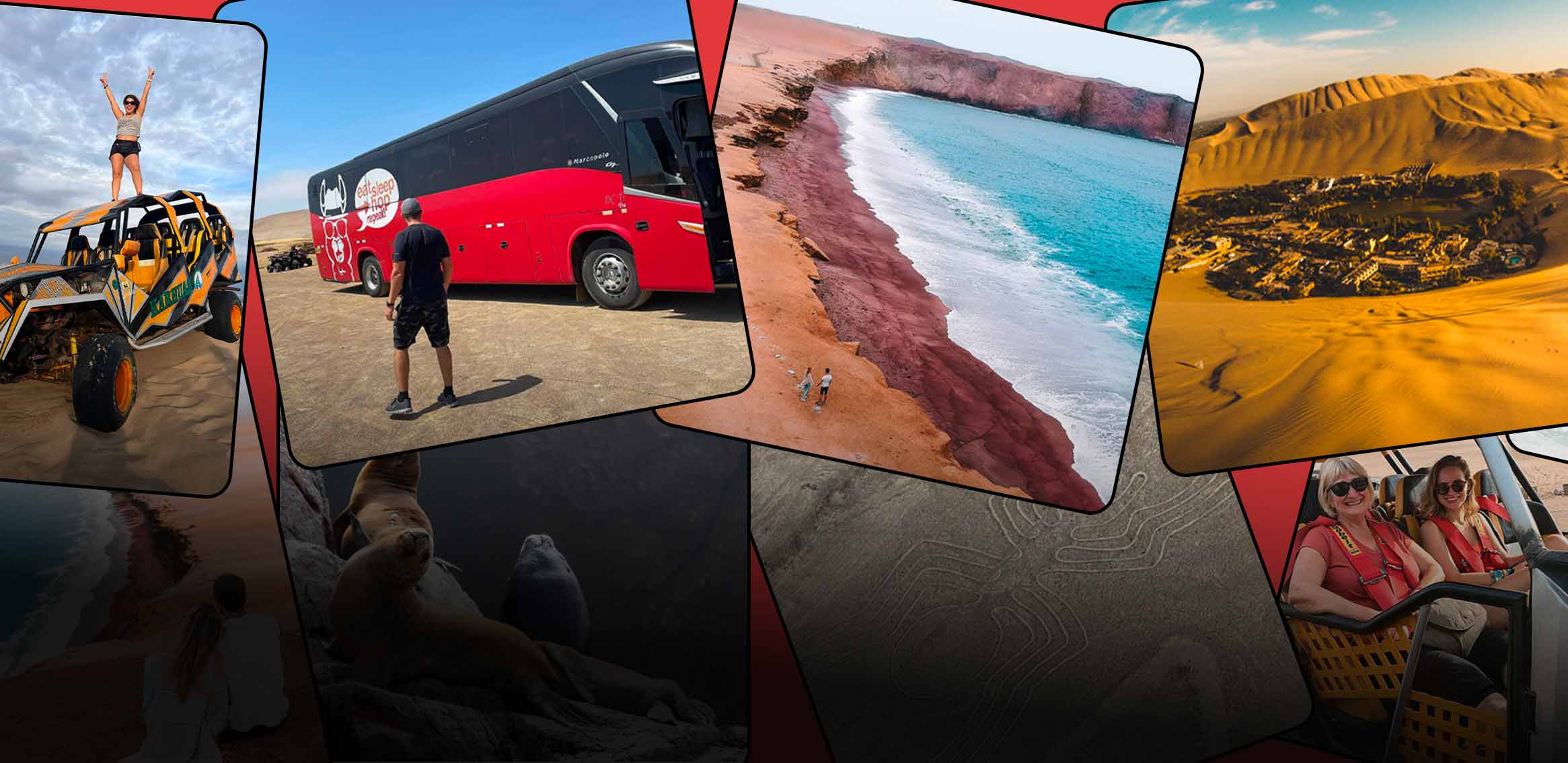
Peru Hop Day Trip!
Voted #1 thing to do in Lima!
arequipa Safety Tips
- Be careful using ATM machines and avoid using them at night when possible.
- Carry small change – many taxis/small shops don’t have change, so try to use small notes/coins.
- Be aware of pickpockets and NEVER take your passport or credit card anywhere unless 100% necessary.
Selina Up to 18% OFF
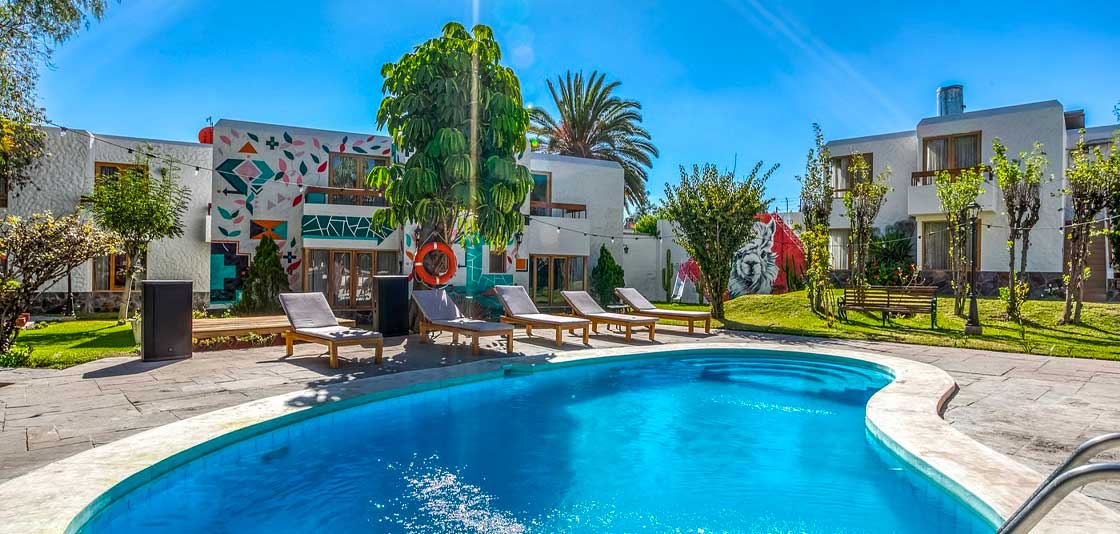
Excellent for:
- Backpackers
- Solo travelers
Why guests love it:
Facilities: Private rooms & shared dorms with breakfast included. Restaurant/ Bar, yoga classes, Garden & Shared lounge/TV area.
Peru Hop Deal: Up to 18% OFF for Peru Hop passengers
Flying Dog Hostel Up to 10% OFF

Facilities: Bar, pool table, nice lounge area.
Peru Hop Deal: Up to 10% OFF for Peru Hop passengers
Casa De Avila Hotel Up to 10% OFF
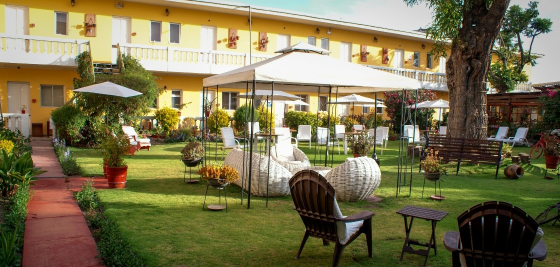
Facilities: Private rooms with direct access to the garden. Social & games room, cafeteria, sun loungers, terrace, and mini gym.
Additional: Early Check-in (05:00am) subject to availability: 30 soles per person. Cooking classes. Laundry. Tour desk. Free luggage storage. Exclusive night and gastronomic tours.
Peru Hop Deal: Up to 10% OFF and 5% discount on restaurant (best available rate) for Peru Hop passengers.
Most popular trips including arequipa
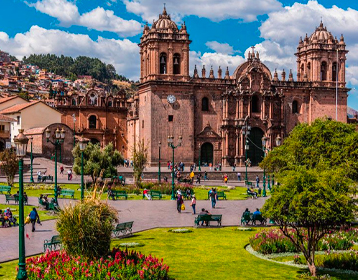
Most popular pass
Full South To Cusco
For those who want to visit all of Peru
You May Like

Lima to Machu Picchu – Agencies DON’T want you to read this!
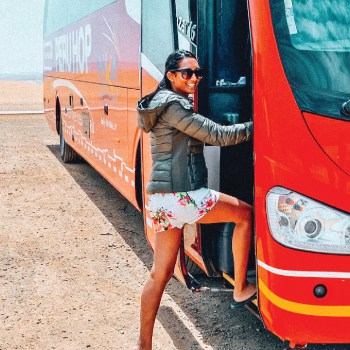
OFFICIAL: View #1 Travel Company in Peru by Tripadvisor

Peru – How to Avoid Being a Typical Tourist

Peruvian Travel Secrets That Only The Locals Know

PERU INSIDER – Top Travel Tips in 2024

These Hidden Destinations close to Lima will AMAZE you

Machu Picchu Tickets – All You Need To Know!

How 2 Irish Guys set up Peru’s BIGGEST Travel Company
Thank you for your message!
Speak to someone from our team by phone, time info is not avaliable.

What are you looking for?
21 best things to do in arequipa, peru in 2024 [by a local].
A firm favourite among those heading to Peru , Arequipa is one of the most beautiful cities you can visit in this Latin American nation .
Not only is the city full of unique things to see and do, the surrounding landscapes also offer some really exciting day trips too.
From hiking smoky volcanoes to traversing one of the deepest canyons in the world, this is all possible when visiting Arequipa!
In this comprehensive guide, we’ll cover everything you need to know about Arequipa.
As well as the best things to see and do, you’ll also learn the best time to visit, how to get there, where to stay as well as my top recommendations.
So if you're planning to explore this part of South America , keep reading...
Travellerspoint
Getting to Know Arequipa
Why visit arequipa.

Known as the “White City of Peru”, Arequipa really is candy for the eyes.
Most of the city has been constructed using the sillar volcanic rock from nearby volcanoes and valleys, which is apparent in its abundance of colonial, white-washed buildings.
To make things even better, Arequipa is also surrounded by three imposing volcanoes, which sets up for some truly awesome photo opportunities.
The region around Arequipa is full of exciting destinations to visit, which include the Colca Canyon, El Misti as well as indigenous towns such as Chivay.
Given it’s the second largest city in Peru, Arequipa has also found its way to fame through its food.
Classics such as Lomo Saltado and Queso Helado originated here, and there’s no better place to try these than within the diverse range of diners found throughout the Historic Centre.
How to get to Arequipa

Arequipa is located within the same-named region in southern Peru.
It’s roughly 1000km south of Lima , and there are two main ways of getting here.
The easiest way to get to Arequipa is to fly from Lima.
Having just arrived into Peru, the capital has the most direct flights of any city heading to Arequipa. A one-way ticket costs roughly $40-60, and the major airlines serving this route are LATAM and SKY .
If you’re already travelling around Peru, then it’s good to know that there are also direct flights to Arequipa from the cities of Cusco, Piura, Trujillo and Tarapoto.
The other way, which is by far the cheapest, is by bus.
Taking around 17 hours in total, you’ll be paying between $20-25 for the trip so it's a great option for those backpacking Peru on a budget.
The other way you can do it (which is popular among backpackers) is to break up the trip along the way.
There are many notable destinations between the two worth seeing, such as Huacachina, Paracas and Nazca.
You can also take the bus to Arequipa from other popular destinations in the south such as Puno and Cusco. You can browse the routes using Redbus !
Getting around Arequipa

Once you’ve arrived in Arequipa, you’ll first need to get to the city centre.
Taxis are the best way, as well as using apps such as Uber or InDriver (however I don’t recommend using the latter upon arriving, since you won’t know what to charge).
Whilst you won’t find any mototaxis here, you can also use the local colectivos to get around Arequipa.
They’re a much cheaper mode of transport, however they’re also pretty erratic at the best of times. You’ll need to speak with your accommodation to learn which you’ll need to take.
When heading out into the region such as to the Colca Canyon, you can also take colectivos.
These are great for the independent traveller who doesn’t like to be rushed.
The other alternative is to take organised tours, such as this day tour , which sorts all logistics for you and is the most efficient use of your time. For some of the experiences (such as hiking the volcanoes), you must go with a tour.
Where to Stay in Arequipa?

Unlike the sprawling capital of Lima, Arequipa is much easier to find the right area to stay in.
Despite being the second largest city in Peru, you’ll want to narrow your search only to the Historic Centre and also the district of Los Sauces , which runs along the opposite side of the river.
Both areas are pretty safe and lively, although the Historic Centre is preferred for its convenient location (more sites to see in the immediate area).
For those looking for a budget accommodation option, you’ll want to go for Mango Hostel B&B . Located literally right on the Plaza de Armas, you’ll be in the best area of town whilst spending little. There’s also a free breakfast included for private rooms too!
The best in-between option has to be the Casona Plaza Hotel , which again is perfectly located in Arequipa’s historic centre. As well as its great breakfast included, some rooms even have a jacuzzi, which is what’s needed after a hike in the cold mountains!
When it comes to luxury in Arequipa, the overall best is the Palla Boutique Hotel . Located between both the popular Los Sauces and Historic Centre districts, you’ll be close to all of the top sites.
21 Best Things to do in Arequipa, Peru
1. head up to the yanahuara mirador.

Kicking off our list we have arguably the best mirador in all of Arequipa (mirador is Spanish for lookout point).
This small plaza is located on top of a hill in the Los Sauces neighbourhood, and gives you a truly awesome view of this important Peruvian city.
Firstly, you’ll be able to witness the sea of white-washed buildings that makes the city so popular for a visit.
And behind them are the towering volcanoes which give a really cool contrast, not to mention a nice reminder of just how helpless we are at the hands of nature!
As well as taking in the sweet views, the Plaza de Yanahuara is also a great place to go for a stroll and to relax (perfect for the day after a hiking trip).
You can head inside the cute church on the plaza, as well as picking up a tasty Queso Helado which is perfect in the midday heat (we’ll cover this later on in this article).
The Yanahuara Mirador is around 10 blocks north-west of the Plaza de Armas, and the walk here is pretty nice too.
Of course you can also take an Uber if you’re feeling tired.
Although it’s open 24/7, the best time to come is in the evening for the sunset, or for sunrise (the latter with much less crowds).
2. Tour the Museo Santuarios Andinos

When it comes to museums, this one is definitely one of the most interesting in Arequipa (and a good contender for Peru too).
The Museo Santuarios Andinos contains many relics and artefacts from different civilisations who lived within the Andean mountains, giving a really insightful look into how they went about their everyday lives.
Within this museum you can also find the infamous mummy of Juanita, who was found on a ridge of the Ampato Volcano (which is roughly 70km north of modern-day Arequipa).
Juanita is widely considered to be one of the most important human findings of all Andean cultures, as it tells us more about some of the gruesome human sacrifices that used to take place, as well as the development of particular Andean cultures.
The Museo Santuarios Andinos is located just a block south of the Plaza de Armas, with the building and entrance easily recognisable (a bright red wall with a picturesque courtyard inside).
It’s open from Tuesday until Saturday, between 9:00am until 5:30pm. You can buy your admission tickets in advance!
3. Get to know the Cayma District
Lying just north of the Los Sauces neighbourhood we have Cayma.
One of 29 districts in Arequipa, this area is one of the most beautiful, yet still least visited by tourists!
There are many things to do here, however the first I’d recommend is to head up to the mirador of Carmen Alto, which gives a much different view over Arequipa than that of Yanahuara (it’s much less visited too).
From here you can walk to the cute plaza of La Tomilla in the heart of town. Here you’ll find a pretty unorthodoxly shaped church as well as different stalls selling novel goods and local foods.
Having had lunch in this area, you can then walk around the streets and see a more authentic Arequipa (the historic centre can feel too touristy at times).
Cayma is also the usual starting off point for those heading to El Misti Volcano, given it’s closer than the centre of Arequipa. We really recommend this tour , where you’ll see all of the highlights as well as some other gems too!
4. Eat a Tasty Queso Helado

Arequipa is full of tasty dishes, and as such I think this city also deserves a food status similar to that of Lima.
As well as a variety of starters and mains you can try here, there’s also Queso Helado .
This vanilla-based ice cream (nope, there’s no cheese as you may have thought!) is topped with cinnamon, and is a really tasty treat.
Although you can now find it all over the country, Arequipa was the birthplace of Queso Helado, and where you can find the very best.
One of the best ones I tried was in the Plaza de Yanahuara, which is right next to the famous mirador.
There’s also usually a stall in the Plaza de Armas too, which is useful if you're staying within the Historic Centre (which is most likely).
Given it’s hot during the day year-round, you’ll want one of these around midday, which is great for a cool-off if you’ve been walking around all day.
5. Hike up the El Misti Volcano

Peru as a whole is full of truly mesmerising landscapes and terrains.
Now, if visiting a fiery and towering volcano is in your bucket list, Arequipa is for sure the best place to come in the country.
There are three main volcanoes to hike here, however the most popular (and recommended for those without much experience) is El Misti .
Standing at a height of 5822m, this volcano can easily be seen from the centre of Arequipa.
The volcano is still active with the last eruption being back in 1985, however this doesn’t seem to put people off the hike.
The majority of hikes take roughly a day and a half to reach the summit, such as this tour that leaves from the centre which includes all food and drinks.
Given this is some pretty high altitude hiking, you’ll want to spend a few days in Arequipa beforehand for your body to adjust well.
It’s also recommended to bring Coca Leaves or Soroche Pills (altitude sickness pills) to help, given it’s still quite a jump in altitude from the city.
Here's some more information about hiking up El Misti Volcano ...
6. Chill in the Plaza de Armas

A common feature in the majority (if not all) Peruvian cities are the Plaza de Armas. They're usually the main square of the city and are quite often the birthplace of the city.
Some of them (such as the one in Cusco) are pretty stunning to say the least!
Having been to almost all of the cities in Peru, I’d have to say that Arequipa’s Plaza de Armas is the absolute best.
With its perfectly trimmed gardens and fountain at the heart, it’s actually the surrounding architecture that makes it stand out so much.
The cathedral is one of the best examples, as it’s made out of the infamous sillar volcanic rock, giving it its timeless white appearance.
As well as being a perfect photo spot, there are also lots of traditional restaurants and terrace view cafes here where you can try out the local cuisine.
Whilst these Plazas are usually filled with important buildings, this one is more laidback, and around its rim you’ll find lots of tourist agencies which are good for booking trips out into the Arequipa region.
You can also join this walking tour and learn from knowledgeable pros, as you walk around the Plaza and other key sites in Arequipa.
7. Rooftop Bar in Plaza

Continuing on from the last point, there’s even more to enjoy when in Arequipa’s Plaza de Armas.
Whilst you can catch some rays and enjoy a sizable Queso Helado during the day, the Plaza can really kick off during the night.
There are many bars lining the second floor of the Plaza, however the best in my opinion is the Waya Lookout Terraza .
This rooftop bar can be found on the west side of the Plaza, and at night is pretty easy to spot (given the loud music and flashing lights coming from above).
Head here in the evening to gear up for the night, where they have everything from pisco to artesanal beers on tap.
It can get pretty crowded (especially on weekends), so you’ll want to try and get in early to get a spot on the terrace, where you’ll also have some pretty incredible views of the Plaza and Volcanoes.
Even during the day it’s a great spot to eat at, where they serve up a variety of dishes from Tequeños and Lomo Saltado to tourists favourites such as Pizza and Club Sandwiches.
If you're looking for things to do in Arequipa at night then make sure you spent some time at this rooftop bar!
8. Delve into The Colca Canyon

Of all the possible reasons travellers would want to come to Arequipa, this is by far the biggest.
The Colca Canyon is as deep as 6600ft in some areas, making it the second deepest canyon in the world!
Here you can head on multiple-day hikes (for those with the time or fitness), or a day trip where you can visit the mirador at the top as well as some other important sites like Chivay and The Cross.
The Colca Canyon is also the place to come to spot the elusive condor!
With a wingspan of up to 3m, this giant beast rules the roost in these parts, and it’s very likely you’ll see them soar above the canyon.
The best time to visit the Colca Canyon is between April and June, as it’s the start of the dry season, as well as being a great time to spot Condors.
Whilst it can be hiked independently (there’s colectivos leaving from Arequipa here daily), a multi-day tour really is the best way to get to Colca, and see all of its hidden gems.
9. Explore Mercado San Camilo

Starting out as just a few stalls way back in 1868, Mercado San Camilo has now evolved to become one of the largest markets in Southern Peru.
The most important market of Arequipa, here you really can find anything and everything.
From fresh fruits to fresh cuy (yep - this really is what I’d call a locals market), it’s a great place to try out new foods and have a much more authentic experience whilst in Arequipa.
Whilst many sites are overrun with tourists, here you’ll be in rare company as you watch locals barter and go about their daily business.
My top advice would be to bring as little with you as possible, as petty thefts have robbed people outside the market before (the streets here are pretty packed with people).
To get to Mercado San Camilo, you’ll want to walk 3 blocks east of the Plaza de Armas, and then a further 3 blocks south (the entrance is pretty big so it’ll be hard to miss when you’re close).
It’s free to enter the Mercado San Camilo, which is open daily from 6:00am until 7:30pm.
10. Head on a Walking Tour

Given that Arequipa is known for its incredible white architecture and buildings, you’re going to want to get out and about to see the very best.
Some sites like the Plaza de Armas (and its basilica) are pretty standard for a visit, whilst there are other lesser-known sites (like those is Cayma) that you’d otherwise not know about.
Heading on a walking tour is a great way to see both the best and lesser known, and is always one of my top recommendations when in any Peruvian destination. This tour is one of the best ones in Arequipa, which also includes entry to the Santa Catalina Monastery.
I’d recommend doing this on your first day, and saving the hikes until the second day (or third preferably) so your body has time to properly acclimate to Arequipa’s higher altitude.
With this tour, you’ll have a very knowledgeable English guide escort you around Arequipa where you’ll see many hidden gems, the Santa Catalina Monastery as well as the textiles in Mundo Alpaca - speaking of which…
11. Mundo Alpaca

Nothing shouts Peru more than a selfie with an alpaca. So how does a photo with a dozen alpacas sound?!
Mundo Alpaca is literally a world in itself, where you can enter the petting zoo and get up close and personal with these friendly animals.
Much more importantly, though, is how this tourist destination is bringing lots of value to Arequipa.
You can enter Mundo Alpaca for free, and learn how alpaca wool is woven and made into those pretty jumpers you’ve been seeing in local markets.
Once you’ve learnt and petted away, you can then head to the museum to uncover how those in the pre-Columbian era used textiles too.
Whilst there’s no entrance fee, you can leave a donation, and I couldn’t think of a more deserving place than here.
Alpaca Mundo is located next to the Ovalo de San Lázaro, along the Avenida La Marina.
If you're wondering what to do in Arequipa then make sure you head to this fantastic place!
12. Ruta de Sillar

This area in the wider region of Arequipa is one of the most popular for a visit.
The Ruta de Sillar is known for its weaving valleys that can be traversed, and are all naturally formed out of the sillar volcanic rock , which is then extracted and used for many different purposes.
As well as being used for architecture and styling in the city of Arequipa, you’ll also find some awesome carvings and monuments made out of sillar here too.
The very best way to explore the Sillar Valley (or Ruta de Sillar as it’s more commonly known as in Spanish) is to go with a tour , which will pick you up directly from your accommodation.
Alternatively, you can head there independently by driving or by taxi, or you can also find colectivos that head to the nearby area of Añashuayco.
No matter how you choose to visit, Ruta dea Sillar is undoubtedly one of the best places to visit in Arequipa!
13. Santa Catalina Monastery

This convent is one of the most famous in the country, let alone in just Arequipa!
Built in 1579, the Santa Catalina Monastery was constructed to serve the Dominican nuns who lived here, and is still standing today despite many earthquakes that devastated the rest of the city.
Known for its attractive red walls, you can walk around and also see important monuments such as the chapel as well as the Plaza.
5 centuries on, it’s still used today by nuns, and you can easily take a guided tour around to learn about their ways, as well as the historical importance of this monastery.
The Santa Catalina monastery is located just a couple of blocks north of the Plaza de Armas, between Calle Ugarte and Santa Catalina. It’s open from 9:00-17:00 every day of the week.
As it’s one of the most popular sights to see, you’re going to want to come during the morning before the crowds arrive!
14. Visit Rural Chivay

When it comes to exploring Peru, there are of course many epic landscapes to be witnessed.
However it’s the small towns and cultures that really bring Peru to life, and Chivay is no exception.
Situated up at a dizzying altitude of 3635m, this rural town is located within the Colca Valley .
It’s known for its beautiful church and plaza, which are all lined with cobblestone streets, with alpacas roaming around as they please.
Here you can also learn about typical Peruvian dishes and local drinks, where this tour will include a tasting experience once you reach this authentic town.
What’s really great about Chivay, though, is that despite the colonialism from the Spanish, this town has kept the majority of its traditions and customs (most evident in how locals dress and go about their daily business).
It’s a usual stop-off on tours heading to and from the Colca Canyon, and here you can also visit the Calera hot springs for a nice dip at altitude!
15. Eat at a typical Arequipa Restaurant

The food of Arequipa is renowned as some of the best in Peru, and is a big reason many come to visit this volcano-laden city.
Some of the best dishes you can try here include Lomo Saltado (which we’ll cover later in this guide), as well as many national favourites including Papa a la Huancaina and Ceviche.
La Nueva Palomino Picanteria is my top pick for an authentic eating experience in Arequipa.
Located on a pretty street in the Yanahuara district, the menu here is full of regional classics such as Pastel de Papa and Adobe.
Even the design of the restaurant will really make you feel you’re in the true Arequipa (which sometimes can be hard given how some parts can get overly touristy).
For those willing to spend more, then you can head to Chicha in the historic centre (right next to the Santa Catalina monastery).
Ran by the famous chef Gaston Acurio, here you’ll be able to try all the Arequipa classics with some creative twists added in by the pro chef himself.
16. Attempt the Towering Chachani Volcano

Of the three hikeable volcanoes that surround Arequipa, Chachani is the biggest beast of them all.
With its peak standing at a lofty 6057m, this stratovolcano is dormant, so there’s no need to worry about getting toasted whilst on a climb.
It’s by far the most demanding hike you can do in Arequipa, where you’ll spend two days climbing through rocky formations and snow-capped terrains to reach the peak.
Unfortunately when I tried to summit I got really sick due to the altitude, so never made it to the top.
However others on the trek told me it was truly spectacular, and when seeing their photos, it was pretty hard to disagree.
You’ll need to go with a tour, who’ll pick you up from your hotel early in the morning, and provide all necessary equipment (which will be sorted for you before you head-off).
Just be sure to take the altitude seriously and acclimatise before in Arequipa, and also to bring Soroche Pills and Coca Leaves.
Well that’s unless you want to join me sat on the slopes waiting for the rest to hike up and down, that is…
If you're looking to attempt this hike then here's some more information about hiking up Chachani Volcano !
17. Basilica Cathedral of Arequipa

This sprawling cathedral is an absolute masterpiece, and is one of the most important landmarks you can visit in Arequipa.
You’ll see it a mile-off before even reaching the Plaza de Armas, given its large size as well as its classic white appearance.
Made out of sillar rocks, half of the Basilica Cathedral actually fell down during an earthquake, and today you can see the difference between the new and old sides of the cathedral.
Originally founded in 1540, it has two large bell towers, as well as two gigantic, stunning arches next to its east and west wings.
It has a museum inside which is worth the visit too, which is open from 10:00am-5:00pm daily.
The rest of the church is open throughout the week with more flexible hours, although if you visit before 7:00am there is no admission fee (if you needed a good reason to get out of bed early, here it is).
18. White Water Rafting

For those who’ve already scaled the mountains and volcanoes, and are still looking for their fix of adrenaline, then this is for you.
Just half an hour from Arequipa lies the Chili river, with rapids ranging from the levels II to IV.
Whilst manoeuvring your way downstream, you’ll catch some seriously impressive glimpses of mountains and volcanoes , as well as other arid landscapes in the surrounding Arequipa region.
Of course you’ll need to go with a tour (unless you’ve completely lost it), and this tour is our top pick. You’ll be accompanied by an experienced rafting guide, where you don’t need prior experience to be able to enjoy this river.
All gear is also included in the price, where they’ll pick you up and drop you off at your accommodation.
19. Try Lomo Saltado

Arequipa has a very proud heritage, and often considers itself to be much different to the rest of Peru.
Whilst you’ll see this in the culture and architecture, it’s the food that really stands out in this fantastic city.
Lomo Saltado is by far one of the best dishes to try here, and is also considered one of Peru’s National Dishes.
Here you’ll have sizzling marinated sirloin strips accompanied with rice and French fries, as well as vegetables such as tomatoes and onions.
I think it’s one of the main dishes you must try at least once when in Peru, given the fact that it’s tasty regardless if dining out in an expensive restaurant, or eating in a locals’ favourite diner.
Consider heading to Sol de Mayo , which makes one of the best Lomo Saltados I ever tried when in the white city.
It’s located along the Calle Jerusalén in the Yanahuara district, which is somewhat far from the Plaza de Armas (worth taking a taxi if staying here).
20. Explore Arequipa’s Nightlife
Arequipa is a pretty buzzing city, which is especially the case in its popular historic centre.
For those starting the night off, you can head to the small and picturesque street of Pasaje de la Catedral. Here you’ll find many small outdoor pubs perfect for the first brew.
The overall best street for nightlife has to be the Calle San Francisco , which is laden with various bars and nightclubs.
Of course the weekend is the best time to come here, but even then during the week you’ll find many of the outdoor tables taken up by both locals and travellers alike.
Deja Vu is located here, which is among the overall best nightclubs in Arequipa, with everything from salsa rooms and live music to a bar & grill !
21. Salinas and Aguada Blanca National Reserve

Last but not least, we have the beautiful, protected region of Salinas and Aguada Blanca .
Located in the extreme south-east of the Arequipa region, this area spans over 3,500km2, and is extremely diverse with everything from Andean forests and bubbling volcanoes to colourful lakes.
The salt lake is one of the most impressive landscapes of all here, and a great alternative if you’re not planning on heading to Bolivia.
You can also see many wild and exotic animals here too, most notably the pink flamingo, as well as wild guanaco, alpaca and the Andean fox.
The best way to explore the Salinas and Aguada Blanca National Reserve is with a tour leaving from Arequipa.
We recommend this day tour , where you’ll visit some of the most biodiverse areas of the region, as well as making stops for a dip in the hot springs as well as to the volcano of Lojen.
Arequipa Travel Tips & FAQ
When is a good time to visit arequipa.
Arequipa is located within the arid region of Peru’s South.
Here the landscapes are dominated with deserts and mountains, and overall it's a pretty dry place to visit. Fortunately, Arequipa is great to visit year-round.
Daily average temperatures throughout all months hover between 59-61°F, with highs of up to 73°F and lows of 48°F.
Be sure to bring an extra jumper or jacket, since whilst hot during the day, temperatures can quickly plummet cometh the night.
Rainfall is mostly scarce throughout the year, and here there are no dry or wet seasons. In fact, you can expect as little as 0-0.1mm of rain each month from April until December!
January until March has a tiny bit more, with between 0.4-0.6mm falling throughout each month.
The only thing that can really vary in Arequipa are the prices!
Heading during busy months such as December, or during festivals, will see a hike up in prices.
April and May are some of the best months to visit Arequipa and keep things cheap.
How long should you spend in Arequipa?
After spending time in Arequipa on numerous occasions, I would say that 6 days would be the perfect amount of time to spend here.
As well as exploring all the sites within the city, you’ll also need a bit of time adjusting to the higher altitude (unless coming from places like Cusco or Puno).
This amount of time is also plenty to head on some treks into the Colca Canyon, as well as to summit one of the picturesque volcanoes that border Arequipa.
Of course more time would be even better, and if you have the flexibility, I’d go for 8-10 days.
On the other hand, if you’re really in a rush, I’d say 4 days is the minimum you’d need for Arequipa.
What is a good budget for Arequipa?
Given that everything is located in and around the Historic Centre, this is the place you’ll want to stay in (which is more expensive than the outskirts).
- If travelling on a budget, you’re going to need between $25-30 a day, which will cover a dorm bed, a couple of tasty meals and a bus here or there.
- If comfort is more on your mind, then you can expect to spend anywhere from $30-50 a day.
Of course your budget can and will vary depending on what your style of travel is, and if you have any particular poisons too (alcohol, excessive tripping etc).
It’s important to note that the above budgets do not take into account the costs of flights or tours.
Can you just book a tour for Arequipa?
As mentioned before, when visiting Arequipa you’ll want to spend quite a bit of time here to get to know the city well and all of its unique attractions.
Of course this isn’t always possible, which is where an organised tour will come in really useful.
We recommend jumping on this city tour , where you’ll see most of the city highlights such as the Basilica and the Santa Catalina Monastery.
Here are some other worthy tours to look into:
- Salinas and Aguada Blanca Reserve Tour
- Arequipa Panoramic Bus Tour
- Arequipa & Colca Canyon Multi-Day Tour
Where to go after Arequipa?
Now over to you …
Are you thinking of heading to Arequipa?
Is there anything you recommend other travellers to do whilst here?
Drop a comment below and let me know!
There’s a good chance you’ve already started the classic loop around Peru’s south once in Arequipa.
If you haven’t been yet, then this is a perfect time to head to Cusco .
The bus takes around 10 hours, which is perfect for an overnight trip (to not waste daytime).
Known as the imperial city, Cusco truly is the highlight of a trip to Peru, with its mesmerising ruins, landscapes and culture all waiting to be explored.
Once there, you can head on this well-organised tour , where you’ll see the very best highlights of the incredible Sacred Valley region. If you're short of time you can also head out on a day trip to Machu Picchu !
If you're planning a trip around Peru then here are some other travel guides that you might find helpful:
- The Ultimate Peru Packing List
- The Best Things to do in Peru
- 2-Week Peru Itinerary

Leave a comment
Let us know what you think.

5 million people can't be wrong
Book your individual trip , stress-free with local travel experts
Select Month
- roughguides.com
- South America
- arequipa-and-lake-titicaca
- Travel guide
- Itineraries
- Local Experts
- Travel Advice
- Accommodation
Plan your tailor-made trip with a local expert
Book securely with money-back guarantee
Travel stress-free with local assistance and 24/7 support
A wealthy city with a population of almost 800,000, AREQUIPA maintains a rather aloof attitude towards the rest of Peru. Most Arequipans feel themselves distinct, if not culturally superior, and resent the idea of the nation revolving around Lima. This confident image arose in the nineteenth century when the city found itself wealthy on the back of the wool trade with England.
Brief history
Arequipeña delicacies, monasterio de santa catalina, traditional folk music in arequipa, around arequipa.
Situated at the foot of an ice-capped volcano – El Misti (5821m) – and close to four other prominent volcanoes, Arequipa has long been famous for having one of the most beautiful settings and pleasant climates of all Peru’s cities. Despite a disastrous earthquake in 1687, it’s still endowed with some of the country’s finest colonial churches and mansions, many of which were constructed from white volcanic sillar, cut from the surrounding mountains and often flecked with black ash.
Characterized by arched interior ceilings, Arequipa’s architectural beauty comes mainly from the colonial period. In general, the style is stark and almost clinical, except where Baroque and mestizo influences combine, as seen on many of the fine sixteenth- to eighteenth-century facades. A huge number of religious buildings are spread about the old colonial centre. The architectural design of the Monasterio de Santa Catalina, a convent complex enclosing a complete world within its thick walls, constitutes perhaps the city’s main appeal to travellers. Further out, but still within walking distance, you can visit the attractive suburbs of San Lázaro, Yanahuara and Cayma, the latter being particularly renowned for its dramatic views of the valley.
Travel ideas for Peru, created by local experts

Peru: into the Incan Empire
Who were the Incas? What did they do? What happened to them? Discover the answers, and much more, with this unique trip into the heart of the former Inca Empire.

Female Empowerment Tour
From meditations in Miraflores over visits to craftswomen in Chincheros to gratitude rituals in the Sacred Valley. This itinerary will allow you to reconnect with your feminine energy and learn more about women's lives in Peru.

Culture, Nature and Adventure in Peru
Get to know Peru through its locals and breathtaking trails- full of history. Hop aboard a motorboat to get to know the local way of life of the Uros people, before you start the great Inca trail, where beautiful landscapes, archaeological sites and fresh air are waiting for you.
_listing_1614463296559.jpeg)
The Inca Empire and the Nazca Culture
Peru has a rich history and culture, this itinerary will give you a taste of just how special it is. Take a flight over the mysterious Nasca lines, head to Cusco for some brilliant archaeological sites and discover the Inca cities. This trip will leave you wanting more!

Peru - the modern, the iconic, the wild
Spend 12 days in magnificent Peru - famous Machu Picchu, legendary Titicaca Lake and the wild Amazon await. This tour is great for foodies with amazing Peruvian delights, for history and culture lovers in the Sacred Valleys as well as wildlife enthusiasts in the Amazon. Something for everyone!

Best of Peru & Galapagos Islands
Split your South America trip into two fascinating countries: Peru with Machu Picchu and the Sacred Valley, as well as ocean-facing capital Lima. Afterwards, proceed to the Galapagos Islands. You will stay on 3 different islands and explore many more.
Arrowheads and rock art have proven human occupation around Arequipa for over ten thousand years. This began with early groups of hunter-gatherers arriving here on a seasonal basis for several millennia from 8000 BC to around 1000 BC when horticulture and ceramic technology began to appear in small settlements along streams and rivers. Initially influenced by the Paracas culture and later by the Tiahuanaco-Huari, two major local tribes emerged sharing the area: the Churajone living in the far northwest section of the Arequipa region, and the Chuquibamba who thrived higher up in the Andean plateaus above Arequipa until the arrival of the Incas.
The name Arequipa is derived from the Quechua phrase “ari quepay”, meaning “let’s stop here”, which, according to local legend, is exactly what the fourth Inca emperor, Mayta Capac, said to his generals on the way through the area following one of his conquest trips.
Colonial development
The Incas were not alone in finding Arequipa to their liking. When Pizarro officially “founded” the city in 1540, he was moved enough to call it Villa Hermosa, or Beautiful Town, and Don Quixote author Miguel de Cervantes extolled the city’s virtues, saying that it enjoyed an eternal springtime. The lovely white stone lent itself to extravagant buildings and attracted master architects to the city.
The wool trade
During the eighteenth and nineteenth centuries, this mountainous region became an important source of sheep and alpaca wool exports, largely to the UK. Connected to the rest of Peru only by mule track until 1870, Arequipa was slow to become the provincial capital it is today. Money made mainly from exports kept the economy growing enough to establish an electric urban tramway in 1913 and then a road up to Puno in 1928.
Political upheaval
Having acquired a reputation as the centre of right-wing political power, while populist movements have tended to emerge around Trujillo in the north, Arequipa has traditionally represented the solid interests of the oligarchy. Important politicos, like Francisco Javier de Luna Pizarro, who was president of Congress on many occasions in the nineteenth century, came from Arequipa. Sanchez Cerro and Odria both began their coups here, in 1930 and 1948 respectively, and Belaunde, one of the most important presidents in pre- and post-military coup years, sprang into politics from one of the wealthy Arequipa families. By 1972 the city’s population had reached 350,000. Twenty years later it passed half a million, with many people arriving from the Andean hinterland to escape the violence of Peru’s civil war.
The social extremes are quite clear today; despite the tastefully ostentatious architecture and generally well-heeled appearance of most townsfolk, there is much poverty in the region and there’s been a huge increase in the number of street beggars in Arequipa. Social polarization came to a head in 2002, when the city’s streets were ripped up in political protest against President Toledo’s plans to sell off the local electric utility.
Arequipa’s restaurants are famous across Peru for a range of delicious dishes that make use of local food resources such as rocoto (an indigenous type of pepper), guinea pig, peanuts, maize, potatoes, chillis and river shrimps. The city is particularly well known for the following dishes:
Typically eaten for breakfast In Arequipa. This is a pork dish where the meat and bones are soaked and cooked in maize-beer sediment or vinegar, onions, garlic, boiled small rocotos and chillis.
The name comes from the flat, round stone – or chaqueria – which is placed on top of a gutted and hung guinea pig to splay it out flat in a large frying pan, while cooking it in ample olive oil; it is usually served with toasted maize and a sauce made from chillis and the herb huacatay (black Andean mint)
River shrimp casserole incorporating squashes, cheeses, chillis and potatoes.
A cold appetizer that originated in this city but can be found on menus across Peru. iIt is made with potatoes, eggs, olives and a fairly spicy yellow chilli sauce, usually with ground peanuts added.
A spicy Andean pepper usually stuffed with minced pork meat and blended with garlic, tomato paste, eggs and mozzarella.
Two blocks north of the Plaza de Armas the vast walls of the Monasterio de Santa Catalina shelter a convent that housed almost two hundred secluded nuns and three hundred servants from the late sixteenth century until 1970, when it opened some of its outer doors to the public. The most important and prestigious religious building in Peru, its enormous complex of rooms, cloisters and tiny plazas takes an hour or two to explore. Some thirty nuns who still live here today, worship in the main chapel only outside of opening hours.
Originally the concept of Gaspar Baez in 1570, though only granted official licence five years later, the convent was funded by the Viceroy Toledo and the wealthy María de Guzmán, who later entered the convent with one of her sisters and donated all her riches to the community. The most striking feature is its predominantly Mudéjar style, adapted by the Spanish from the Moors, but which rarely found its way into their colonial buildings. The quality of the design is emphasized and harmonized by a superb interplay between the white stone and brilliant colours in the ceilings, the strong sunlight and deep-blue sky above the maze of narrow interior streets.
Los locutorios
Once you enter, you file left along the first corridor to a high vaulted room with a ceiling of opaque huamanga stone imported from the Ayacucho Valley. Beside here are los locutorios – little cells where on holy days the nuns could talk, unseen, to visitors.
The Novices Cloister and Orange Tree Cloister
The Novices Cloister, beyond the locutorios, is built in solid sillar-block columns, with antique wall paintings depicting the various qualities to which the devotees were expected to aspire and the Litanies of the Rosary. Off to the right, the Orange Tree Cloister (Claustro Naranjal), painted a beautiful blue with birds and flowers over the vaulted arches, is surrounded by a series of paintings showing the soul evolving from a state of sin to the achievement of God’s grace. In one of the side rooms, dead nuns were mourned, before being interred within the monastic confines.
La lavandería
Calle Cordoba runs from the Orange Tree Cloister past a new convent, where the nuns now live. The road continues as Calle Toledo, a long, very narrow street that’s the oldest part of the monastery and connects the main dwelling areas with la lavandería, or communal washing sector, is brought to life with permanently flowering geraniums. There are several rooms off here worth exploring, including small chapels, prayer rooms and a kitchen. The lavandería itself, perhaps more than any other area, offers a captivating insight into what life must have been like for the closeted nuns; open to the skies and city sounds yet bounded by high walls. Twenty halved earthenware jars stand alongside a water channel, and it also has a swimming pool with sunken steps and a papaya tree in the lovely garden.
Plaza Socodobe and Sor Ana’s rooms
Broad Calle Granada brings you from la lavandería to the Plaza Socodobe, a fountain courtyard to the side of which is la bañera, where the nuns used to bathe. Around the corner, down the next little street, are Sor Ana’s rooms. By the time of her death in 1686, 90-year-old Sor Ana was something of a phenomenon, leaving behind her a trail of prophecies and cures. Her own destiny in Santa Catalina, like that of many of her sisters, was to castigate herself in order to offer up her torments for the salvation of other souls – mostly wealthy Arequipan patrons who paid handsomely for the privilege. Sor Ana was beatified by Pope John Paul II in the 1990s.
The refectory and main chapel
The refectory, immediately before the main cloisters, is deceptively plain – its exceptional star-shaped stained-glass windows shedding dapples of sunlight through the empty space. Nearby, confessional windows look into the main chapel, but the best view of its majestic cupola is from the top of the staircase beside the cloisters. A small room underneath these stairs has an intricately painted wall niche with a Sacred Heart centrepiece. The ceiling is also curious, illustrated with three dice, a crown of thorns and some other, less recognizable items. Within the quite grand and lavishly decorated main chapel itself, but not part of the tour these days, are the lower choir room and the tomb of Sor Ana.
The main cloisters
The main cloisters themselves are covered with murals on an intense ochre base with cornices and other architectural elements in white stone; the murals follow the life of Jesus and the Virgin Mary. Although they were originally a communal dormitory, their superb acoustics now make them popular venues for classical concerts and weddings and the space can absorb up to 750 people standing or 350 seated around tables.
Religious art museum
Before exiting the monastery, there’s a rather dark religious art museum full of obscure seventeenth-, eighteenth- and nineteenth-century paintings. The best of these are in the final outer chamber, lined mainly with works from the Cusqueña school. One eye-catching canvas, the first on the left as you enter this room, is of Mary Magdalene. Painted by an anonymous nineteenth-century Arequipan, it’s remarkably modern in its treatment of Mary and the near-Cubist style of its rocky background.
Arequipa has a very strong tradition of folk singing and poetry, and folk musicians will wander from peña to peña. They often perform the region’s most authentic music, yaraví, which involves lamenting vocalists accompanied by a guitar. In recent years the youth of Arequipa have developed a preference for Latin- and Cuban-style ballads (troubador singing) accompanied by electric guitars, drums and sometimes keyboards, so the choice at weekends can be quite extensive.
The spectacular countryside around Arequipa rewards a few days’ exploration, with some exciting and adventurous possibilities for trips from the city. Most people visit these sites on an organized trip with one of the tour companies in Arequipa. If you are prepared to put up with the extra hassle, you can visit many of the sites by much cheaper public transport.
The attractive village of Sabandia and the historic Casa del Fundador are both within 20km of the city centre; further afield the Inca ruins of Paucarpata at the foot of El Misti volcano offer excellent scenery, great views and a fine place for a picnic. Climbing El Misti is a very demanding but rewarding trek, but should not be attempted without a professional guide. The attractive village of Chapi makes a good day-trip, while the Cuevas de Sumbay, just a few hours’ drive from Arequipa on the road towards Caylloma, contain hundreds of unique prehistoric paintings.
Yet the greatest attraction here is easily the Colca Canyon, some 200km to the north of Arequipa, usually accessed via the quaint town of Chivay and second only to Machu Picchu in its ability to attract tourists, it is developing fast as a trekking and canoeing destination (best in the dry season, May–Sept). On route to Colca, the road passes through the Reserva Nacional de Aguada Blanca, a good place for wildlife. One of the canyon’s pulls is the Mirador Cruz del Condor, where several condors, symbols of the Andes, can be seen flying most days. Called the “Valley of Marvels” by the Peruvian novelist Mario Vargas Llosa, it is in places nearly twice the depth of Arizona’s Grand Canyon and one of the country’s most extraordinary natural sights.
Around 120km west of Arequipa, you can also see the amazing Toro Muerto petroglyphs and perhaps go on to hike amid the craters and cones of the Valley of the Volcanoes, roughly 25km to the northeast. A little further north is the Cotahuasi Canyon , which some people believe could usurp Colca’s claim to being the deepest canyon in the world.
Chivay and around
Surrounded by some of the most impressive and intensive ancient terracing in South America, CHIVAY, 163km north of Arequipa and just four hours by bus from there, lies at the heart of fantastic hiking/mountain-biking country. Although notable as a market town, it is not actually a good place from which to observe the canyon. Chivay is nevertheless bustling with gringos using the town as a base for exploring the Colca Canyon region.
The market itself is located along Avenida Salaverry, where you’ll also find a slew of artesanía shops. The town has a growing range of accommodation, restaurants and bus services for these visitors, making it a reasonable place to stay while you acclimatize to the high altitude. Serious trekkers will soon want to move on to one of the other canyon towns, likely Cabanaconde.
Just 5km east of Chivay, slightly further up the Colca Canyon, the road passes mainly through cultivated fields until it reaches the tiny settlement of LA CALERA, which boasts one of Chivay’s main attractions – a wonderful series of hot spring pools, fed by the bubbling, boiling brooks that emerge from the mountain sides all around at an average natural temperature of 85°C. Said to be good for curing arthritis and rheumatism these clean and well-kept thermal baths are not to be missed. There’s also a small museum on site with models and artefacts demonstrating local customs, such as making an offering to the pacha mama, Mother Earth.
Valley of the Volcanoes
Following some 65km of the Río Andagua’s course, the VALLEY OF THE VOLCANOES (Valle de los Volcanes) skirts along the presently dormant volcano Mount Coropuna, the highest volcano in Peru (6425m) and the highest peak in southern Peru. At first sight just a pleasant Andean valley, this is in fact one of the strangest geological formations you’re ever likely to see. A stunning lunar landscape, the valley is studded with extinct craters varying in size and height from 200 to 300m. About 200,000 years ago, these small volcanoes erupted when the lava fields were degassed (a natural release of volcanic gas through soil, volcanic lakes and volcanoes) – at the time of one of Coropuna’s major eruptions.
The best overall view of the valley can be had from Anaro Mountain (4800m), looking southeast towards the Chipchane and Puca Maura cones. The highest of the volcanoes, known as Los Gemelos (The Twins), are about 10km from Andagua. To the south, the Andomarca volcano has a pre-Inca ruined settlement around its base.
The Rough Guides to Peru and related travel guides
In-depth, easy-to-use travel guides filled with expert advice.

Find even more inspiration here

Planning your own trip? Prepare for your trip
Use Rough Guides' trusted partners for great rates
written by Rough Guides Editors
updated 26.04.2021
Ready to travel and discover Peru?
Get support from our local experts for stress-free planning & worry-free travels.
- Where to stay
- Travel advice
- White Water Rafting
- Free Walking Tour
- Colca Canyon
- Santa Catalina Monastery
- Restaurants
- Night Clubs
- Lima To Arequipa
- Puno To Arequipa
- Cusco To Arequipa
Official Information Website of Peru’s most beautiful city
Everything you need to know about Arequipa in 2024 from how to get there, where to stay, things to do and best places to eat! Read more below.
Brief Summary of Arequipa:
Home to the Colca Canyon: Tours and Treks possible
Best Way to get to Arequipa: Fly with Latam Airlines or take Peru Hop bus
Best Tour Companies for Colca Canyon: View FindLocalTrips here
Continue reading for all of the info you need for Arequipa
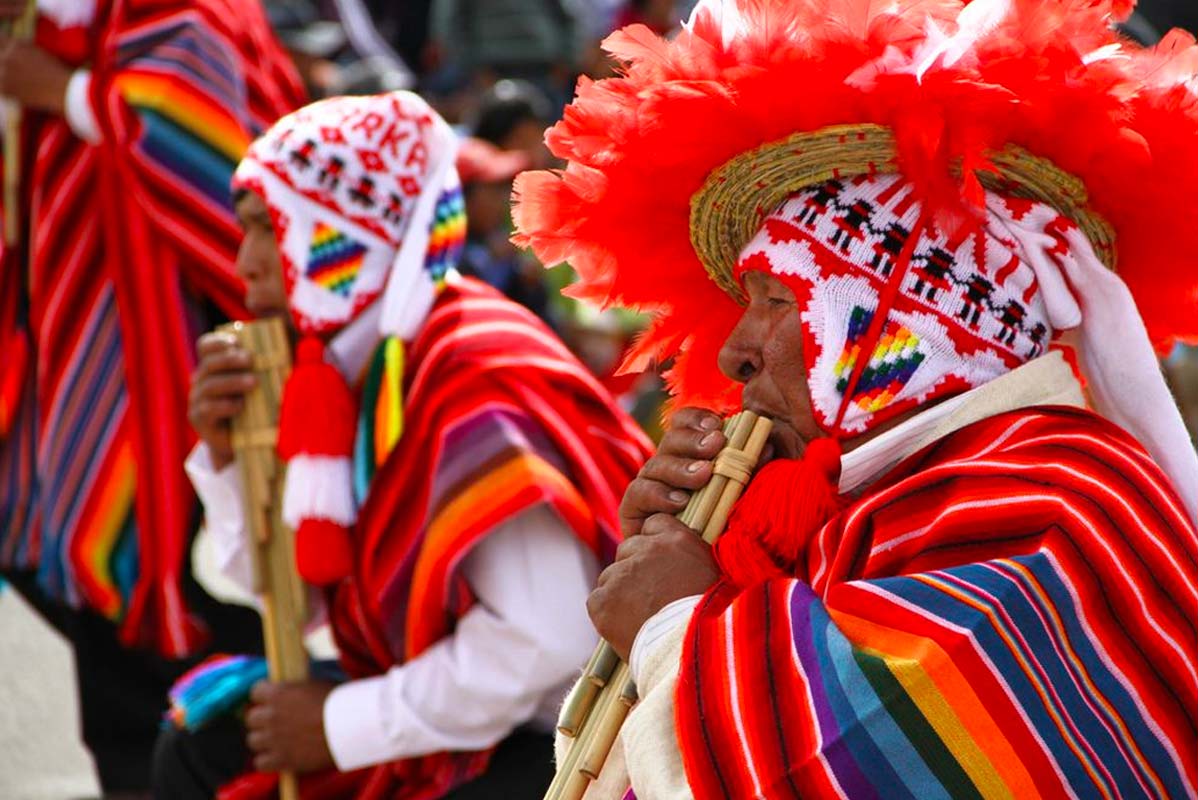
Discover Arequipa, Peru
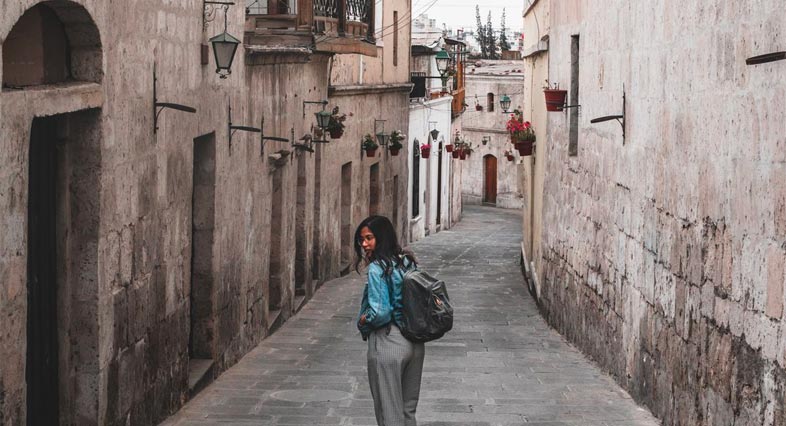
How to get to Arequipa from Lima, Cusco or Puno
Discover the best ways possible to head to the white city
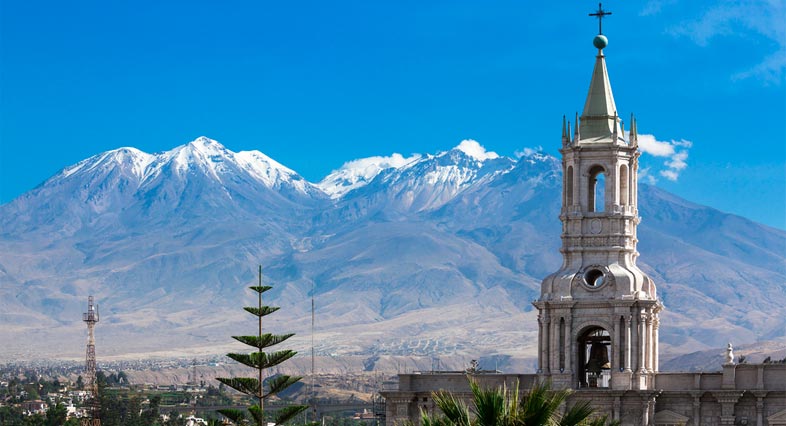
Weather and best time to visit Arequipa
Be prepared to visit the city the best time possible
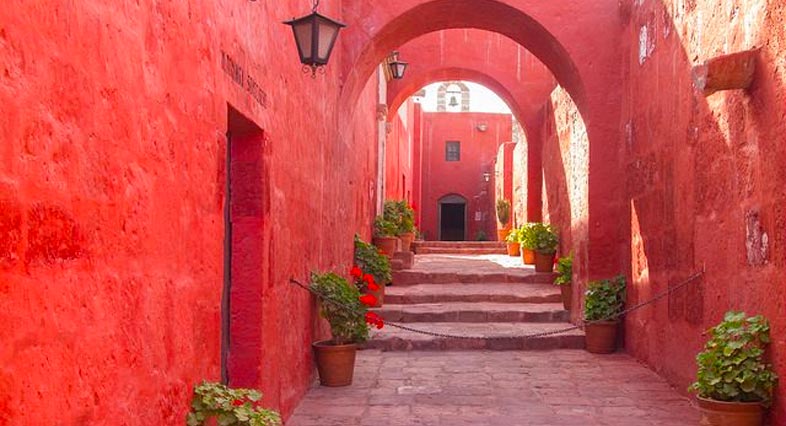
MUST-DO things when visiting Arequipa, Peru
All the tours and activities you can't miss when you visit
Second deepest canyon in the world.
Visit the colca canyon.
For many, the main attraction in Arequipa. Beautiful scenery and jaw-dropping views await in the second deepest canyon in the world!
More useful information
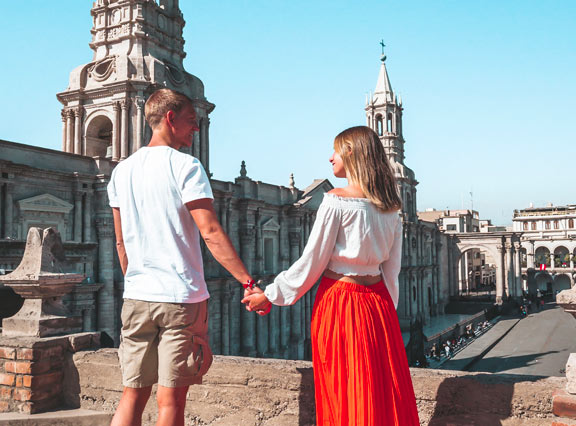
Top tips when visiting Arequipa for the first time
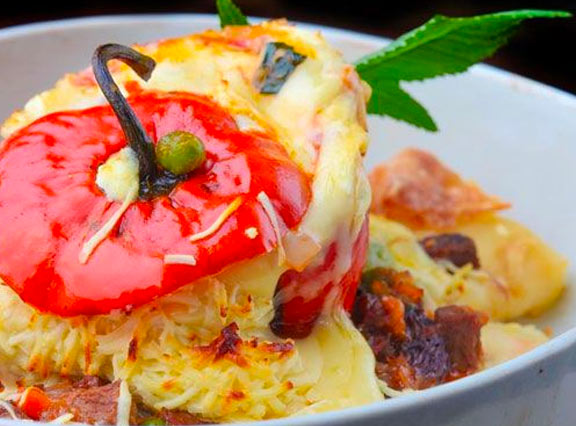
Dishes every foodie must try
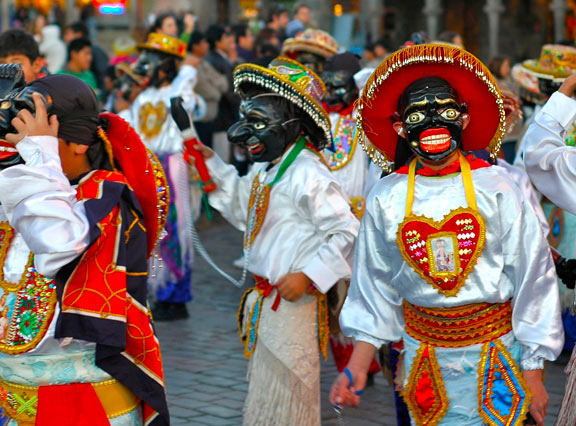
Incredible festivals you can’t miss in Arequipa
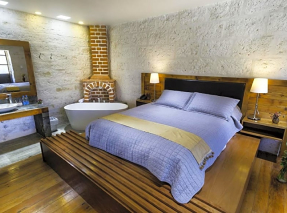
Best places to stay in Arequipa for all types of budgets

- Arequipa travel
- Arequipa map
- Arequipa travel blogs
- Colca Canyon valley
- Travel agencies
- Colca tours
Tours and travel in Arequipa Peru
Information about arequipa perú.

Altitude in Arequipa
Climate arequipa, access routes to arequipa, distances from the city of arequipa, top dishes in arequipa.

- Rocoto relleno
- Pastel de papa
- Chupe de camarones
- Rachi de panza
- Ocopa Arequipena
- Queso Helado
- Pastel de Choclo
Drinks in Arequipa
- Chicha de Jora

IMAGES
COMMENTS
Plan your visit to Arequipa and Colca Canyon with our complete guide including what to do, best time to visit, where to stay, important travel tips, and more.
Arequipa. Peru, South America. Other Peruvians joke that you need a different passport to enter Peru's second-largest city. One-tenth the size of Lima, Arequipa is its pugnacious equal in terms of cuisine, historical significance and confident self-awareness. Attractions.
With historic churches and volcanic surroundings, Arequipa is one of Peru's most beautiful cities. Here are 15 unmissable things to do in Arequipa.
Are you visiting Arequipa? Make sure to get the best Arequipa travel tips and plan your perfect trip! Read this post for everything you need to know.
Arequipa, the white city is worth visiting for its unique cuisine, its history and its extraordinary friendliness. An unmissable destination!
A local blogger's travel guide to Arequipa, including best day trips, areas to stay, things to do, and interesting facts.
Here's everything you NEED to know about visiting Arequipa in Peru including the best things to do in Arequipa that you don't want to miss!
Travel Tip // This walking tour of the historic districts of Arequipa as well as Plaza de Armas, finishing at and includes the monastery; it is a great way to see the historical sights of the city in half a day with a knowledgeable guide.
Arequipa, the stunning volcano-ringed colonial-era city in southwestern Peru, is more than just an underrated gem - it's an absolute must-visit.
Discover the best things to do in Arequipa, Peru's enchanting White City. Explore the city's attractions and plan your perfect travel experience in Peru.
Discover thoroughly what to do in Arequipa and the best places to visit for you to enjoy the most while your staying in the White City!
¡Welcome to Arequipa, the White City that captivates with its history, architecture, and natural beauty! In this brief guide, we'll unravel the 11 best tourist attractions that make Arequipa a unique destination. From the imposing Cathedral to the landscapes of the Colca Canyon, get ready to immerse yourself in an unforgettable experience. Plaza de Armas […]
Arequipa is the second largest city in Peru, behind Lima. It has an urban population of around 1 million inhabitants. Elevation. Arequipa is the perfect intermediate stop after Lima and before heading to higher elevations. Other destinations in the Andes, such as Cusco and Lake Titicaca, are at a much higher elevation.
Arequipa is a city in the Southern Coastal region of Peru just below the edge of the Altiplano, at 2,380 m (7,810 ft) above sea level and surrounded by three impressive volcanoes. It's Peru's second most important city (after Lima ), and the second most popular among tourists (after Cusco ).
Arequipa, also known as White City, is a popular colonial city you should visit while in Peru. Our Arequipa travel guide focuses on the best things to do in Arequipa so you can plan your time here. The top attractions are Santa Catalina Monastery, or a day trip to Colca Canyon, volcanoes, but the city has so much more to offer.
Arequipa Peru: Our 2024 detailed guide from how to get there, where to stay, how to book the Colca Canyon and more!
Find the best travel tips and plan unforgettable holidays with my travel itineraries! I am an adventurous travel blogger offering you the best tips and tricks for your travels!
Peru's 'White City' is home to fantastic architecture, delicious food, and striking landscapes. Here are the best things to do in Arequipa, Peru!
Plan your visit to Arequipa, Peru: find out where to go and what to do in Arequipa with Rough Guides. Read about itineraries, activities, places to stay and travel essentials and get inspiration from the blog in the best guide to Arequipa.
Don't miss out on the chance to explore the amazing beauty and culture of Arequipa - watch our video to discover the top things to do and see in Arequipa, Peru. 23 Places to Visit & Things to Do ...
Visit the amazing city of Arequipa, Peru's second-largest city. This guide has everything you need to know about Arequipa tours, accommodations and travel!
Arequipa is a city in the Southern Coastal region of Peru just below the edge of the Altiplano, at 2380 meters above sea level and surrounded by three impressive volcanoes. It's Peru's second most important city (after Lima), and the second most popular among tourists (after Cuzco).
By air: Daily flights to Arequipa from: Lima (1 hour), Cusco (30 minutes), Juliaca (30 minutes) and Tacna (30 minutes) Peru attractions in Peru travel packages destinations in all Peru, Cusco travel tours best travel and vacation to Machu Picchu Peru famous Lost City of the Incas. Amazon River cruises in Iquitos, adventure on the Amazon River ...